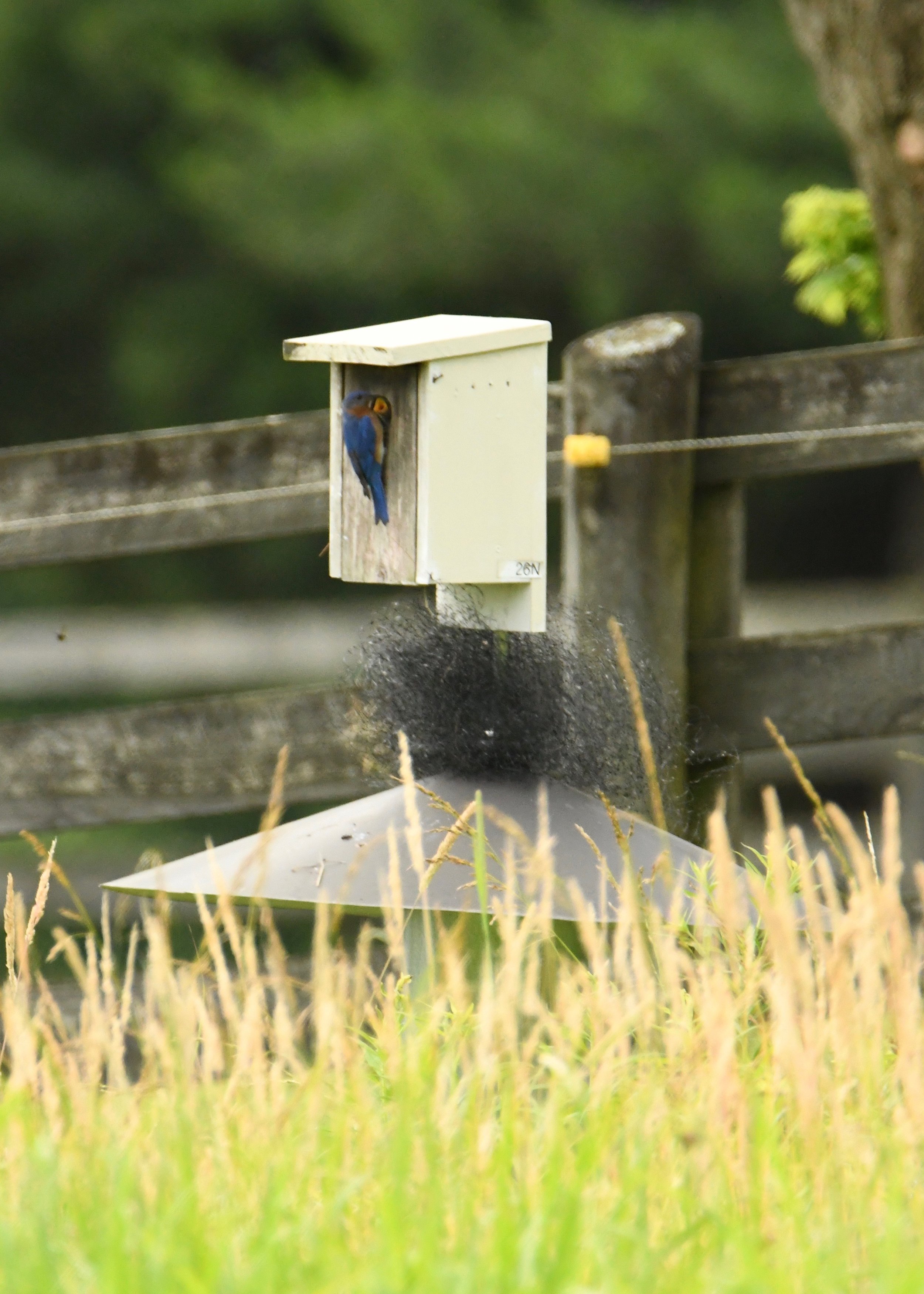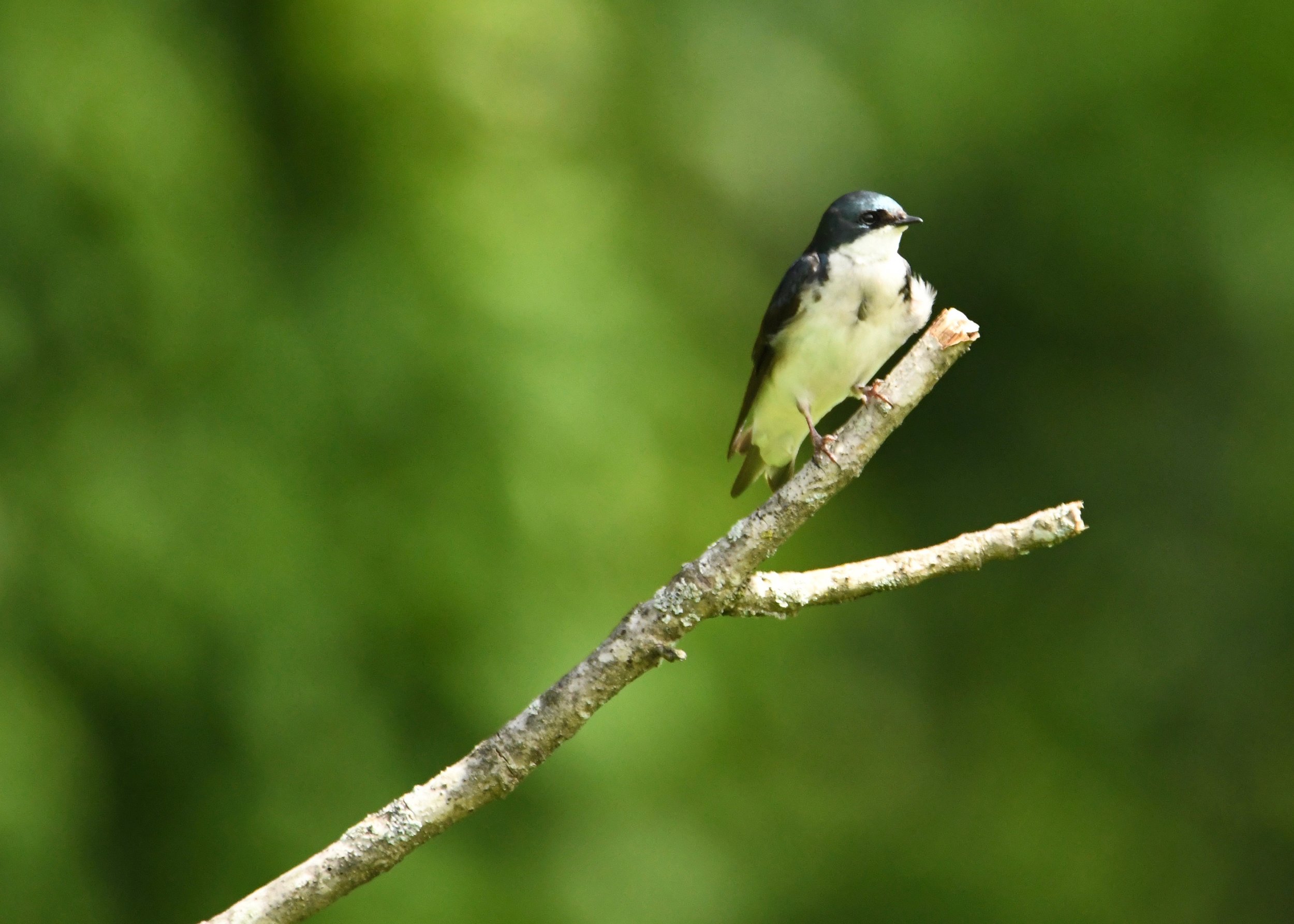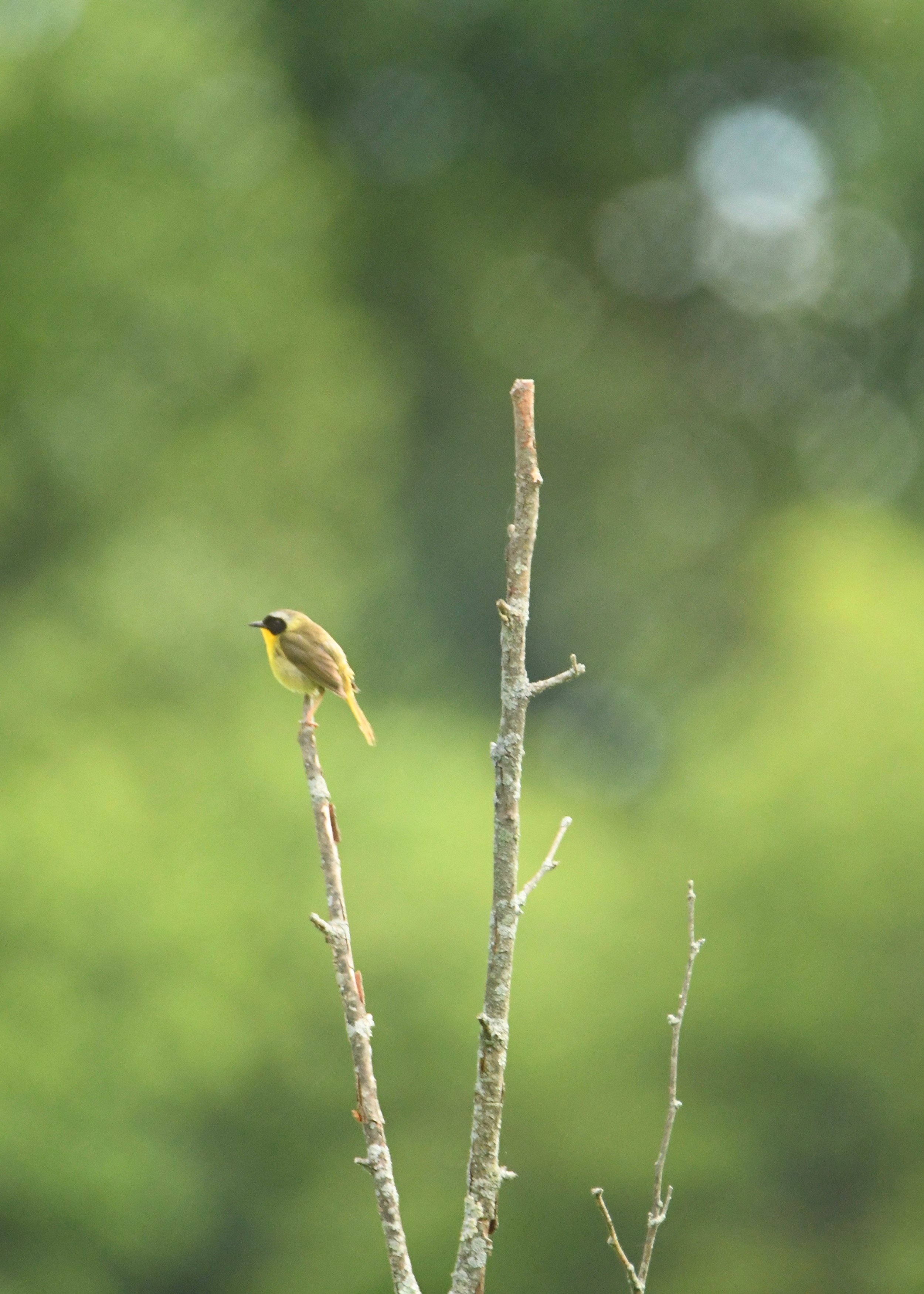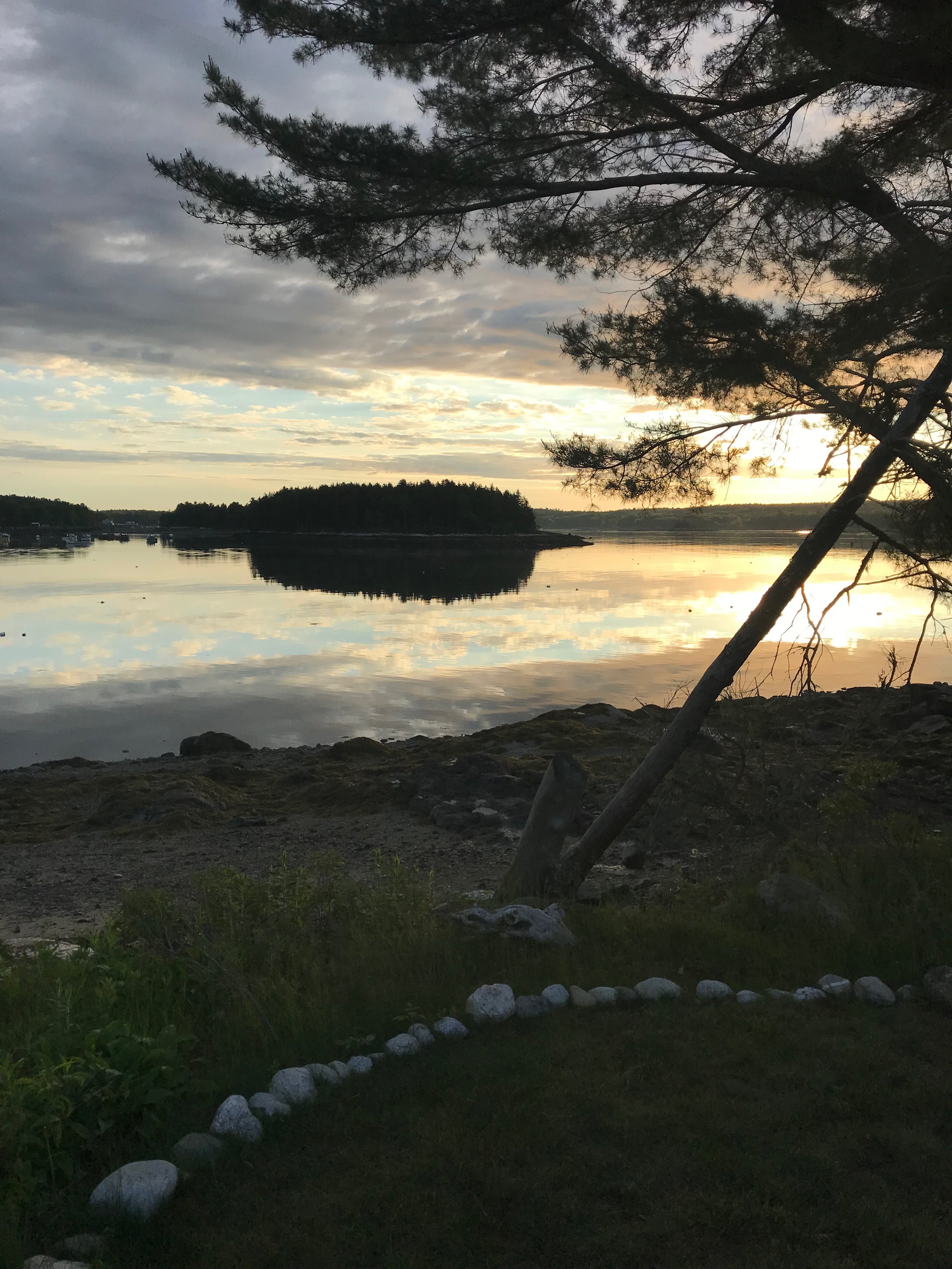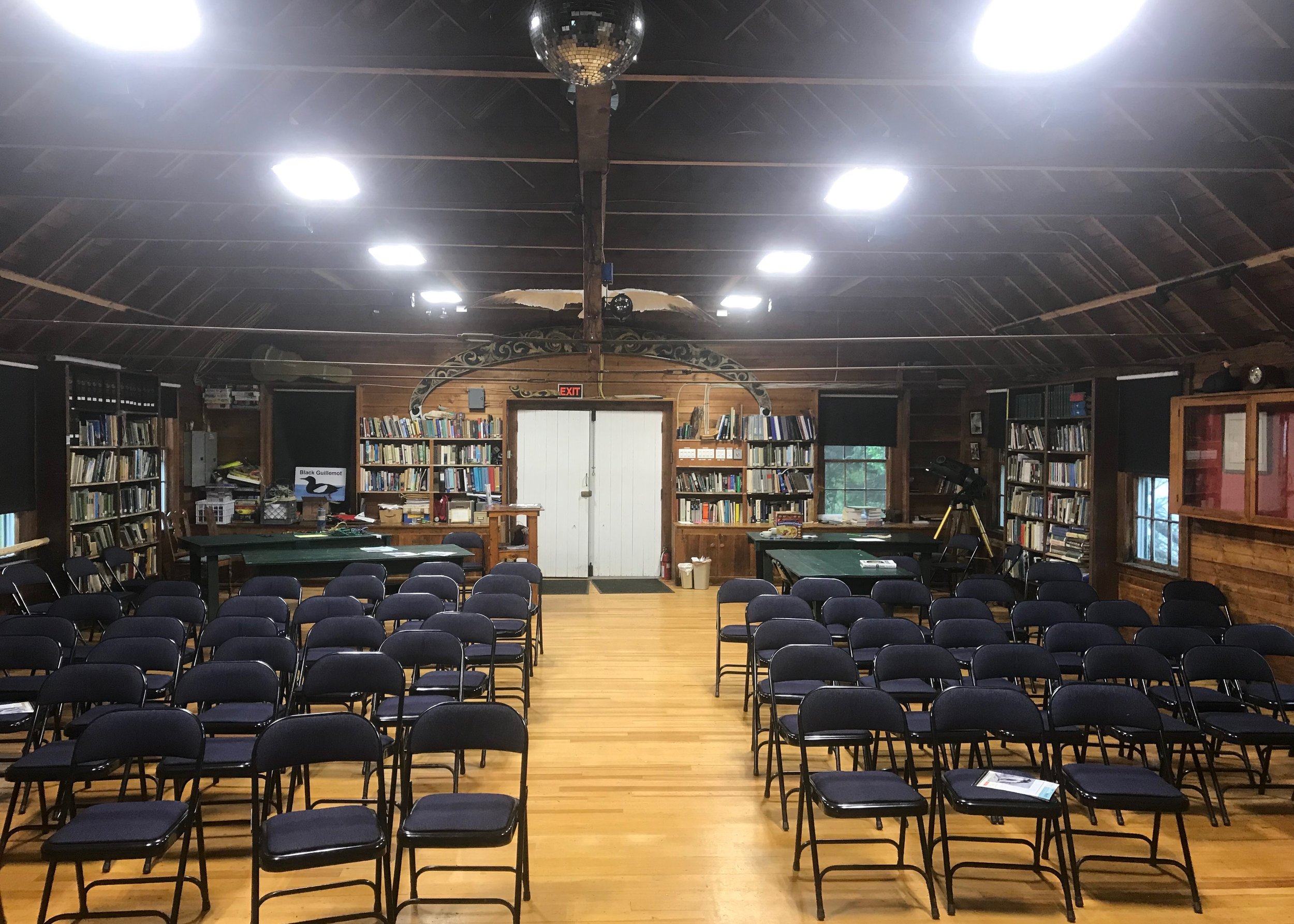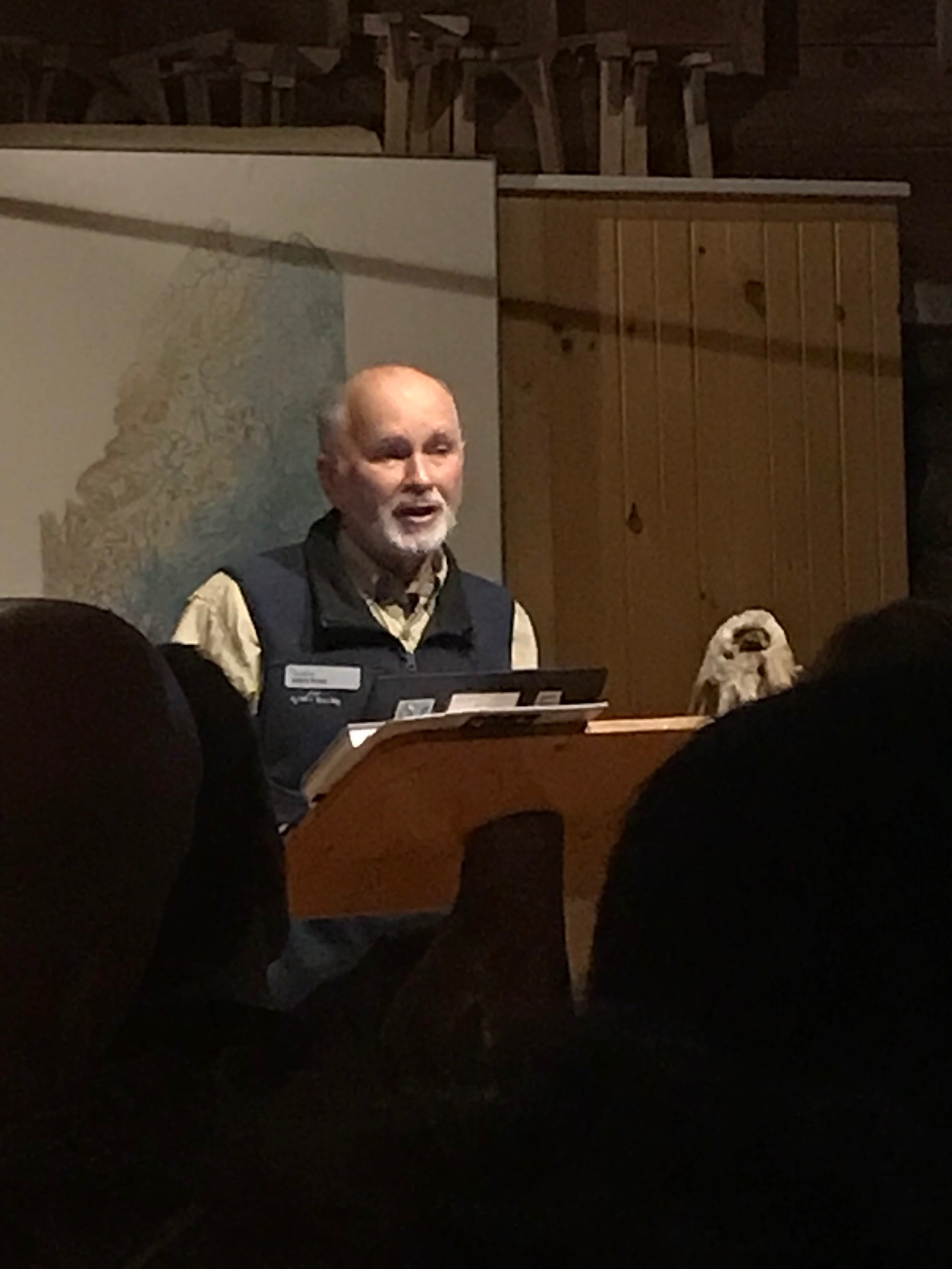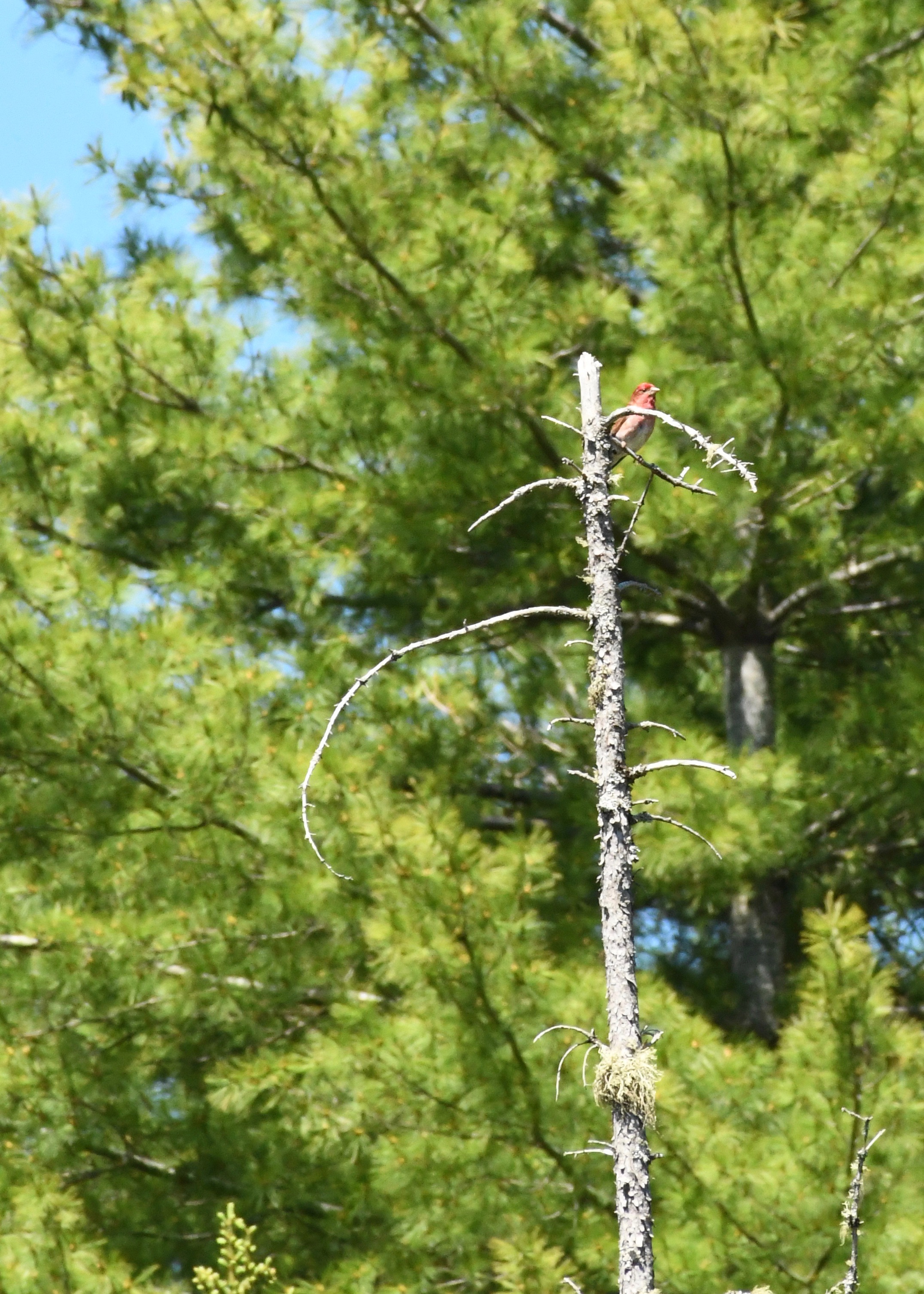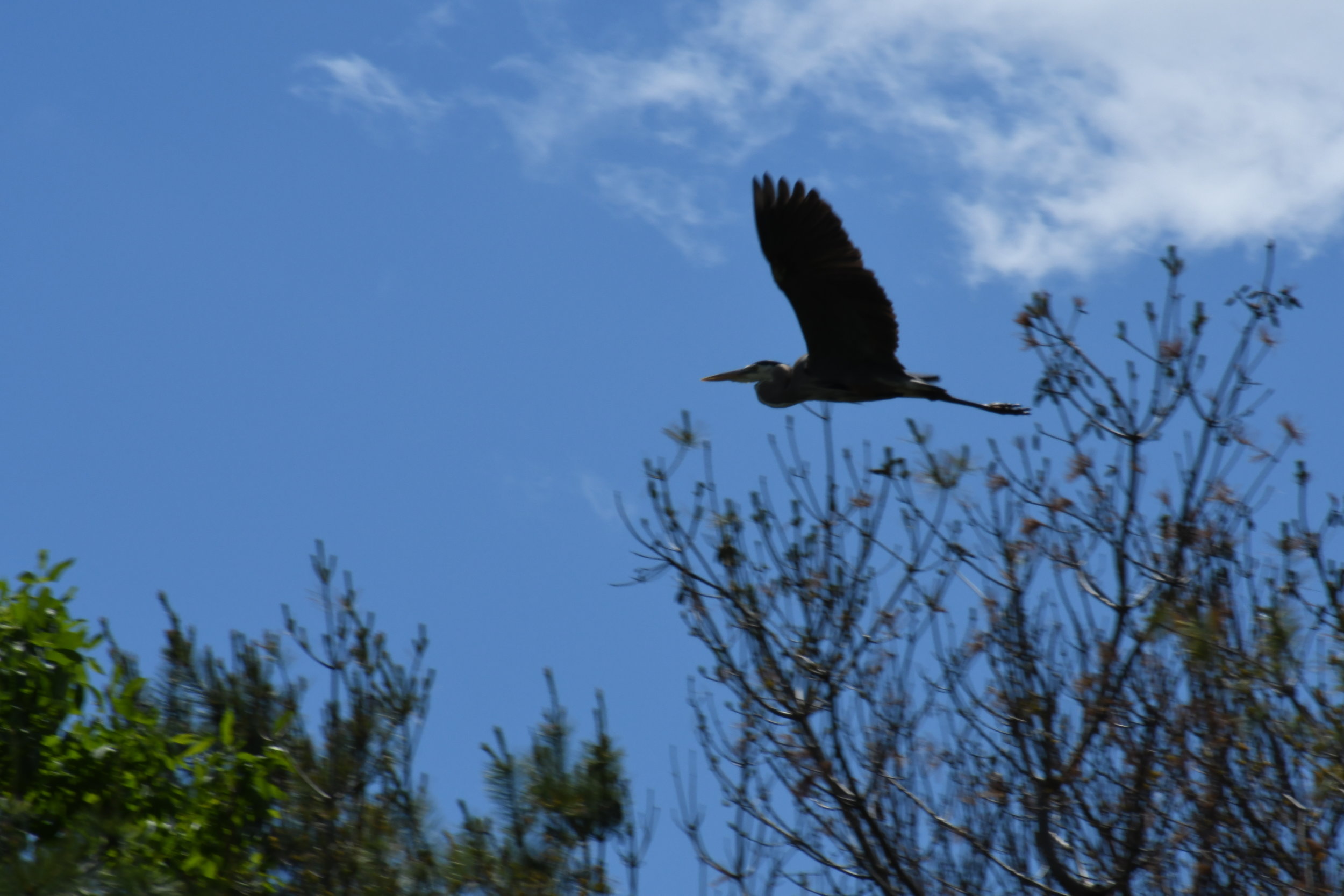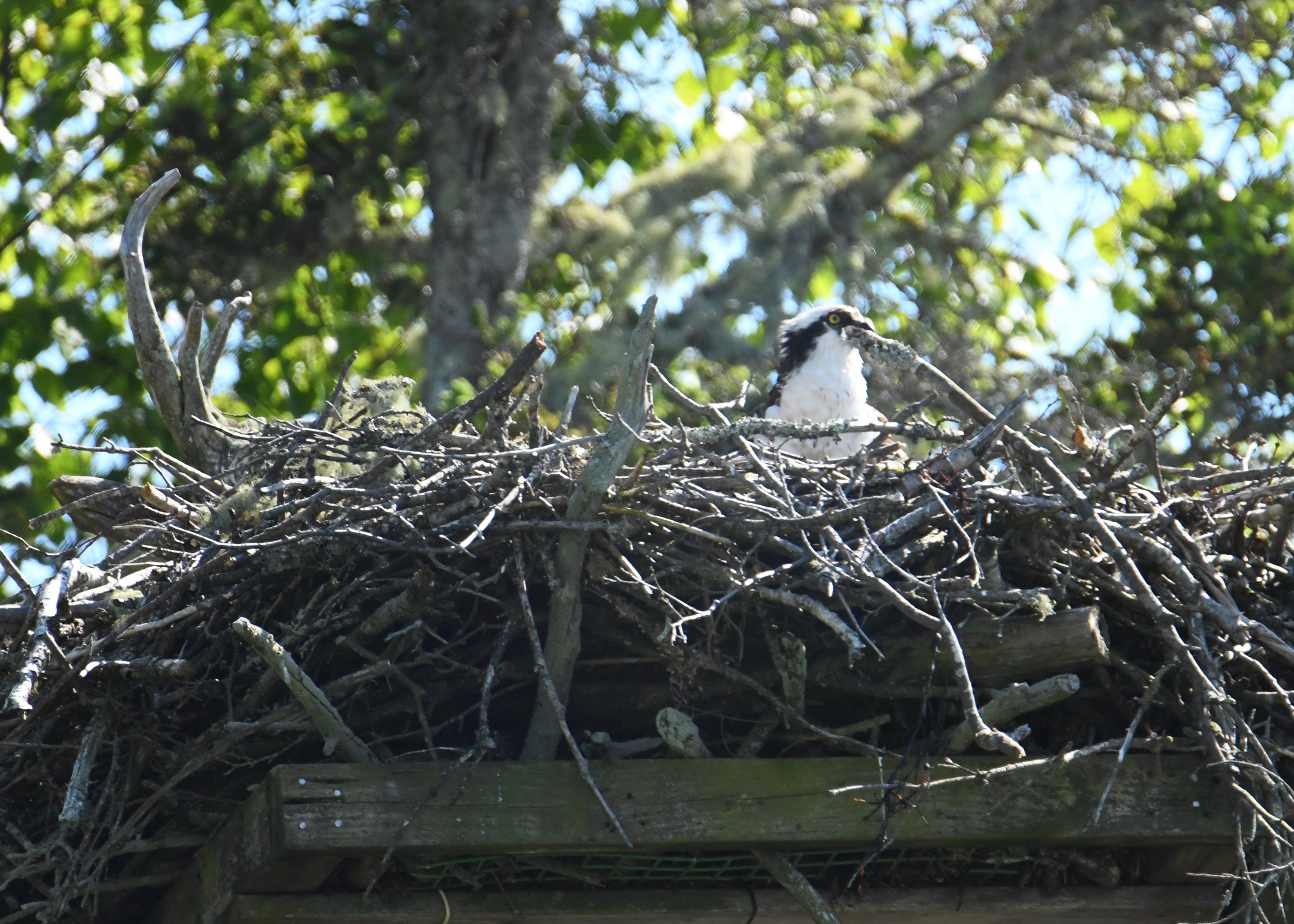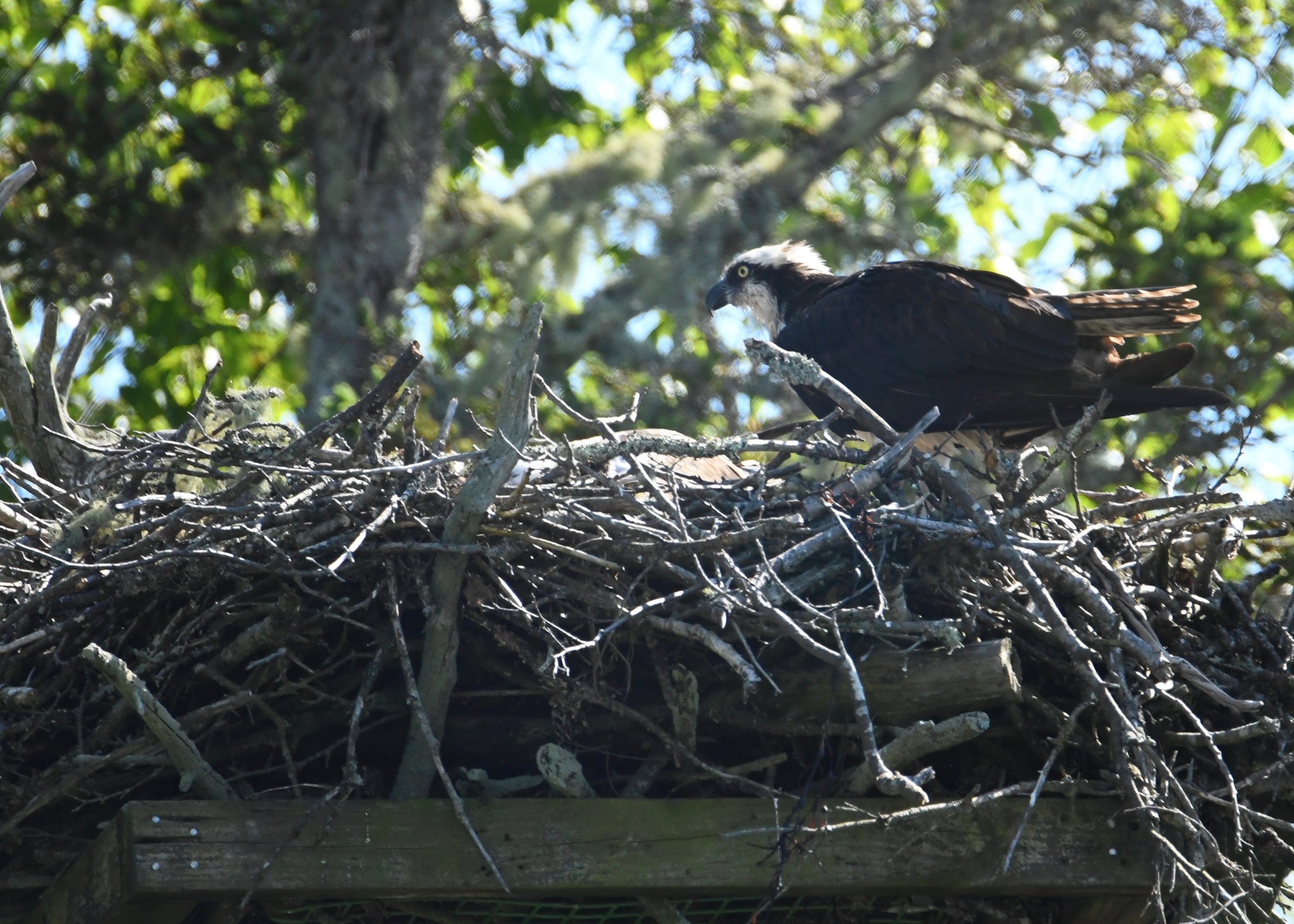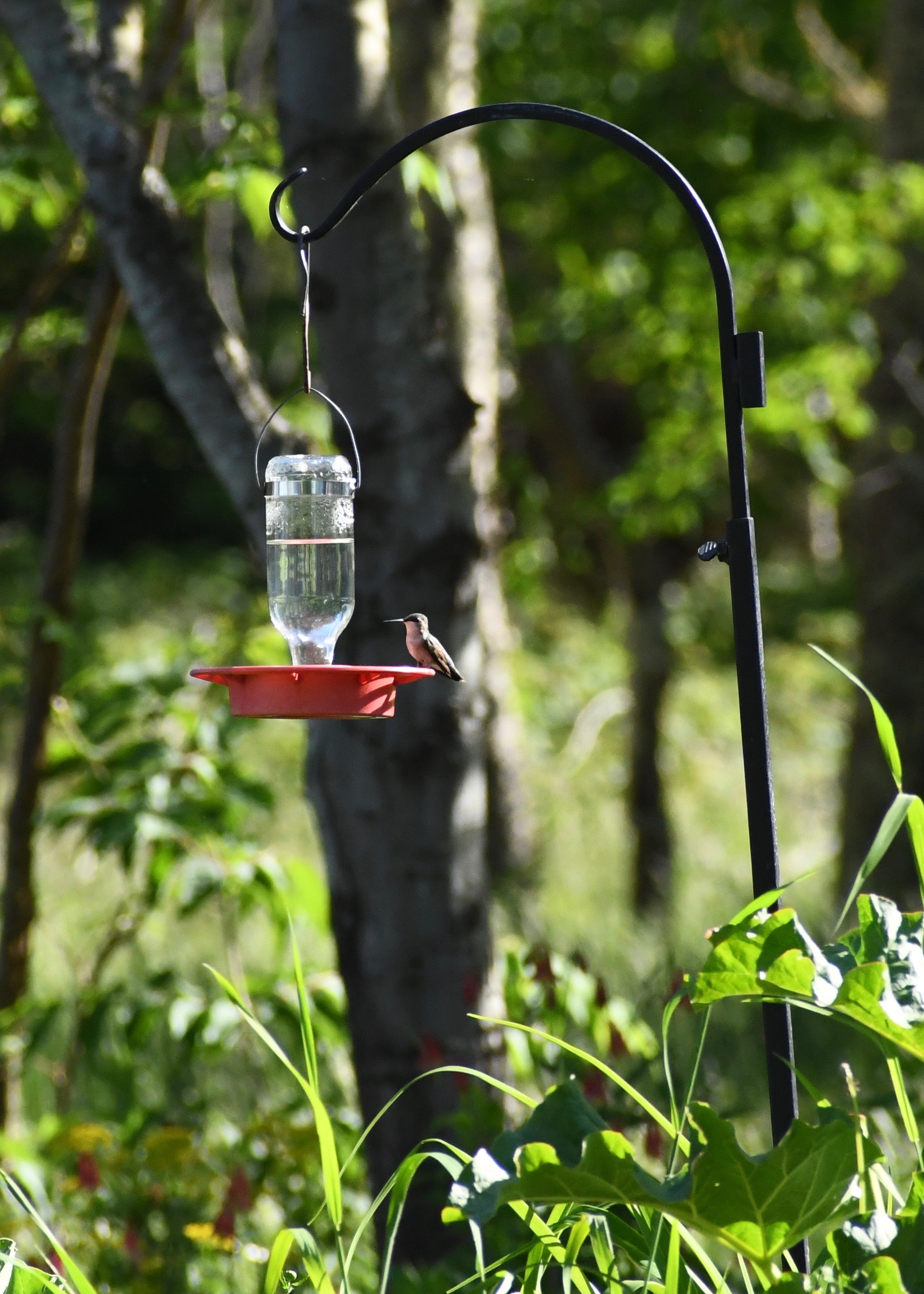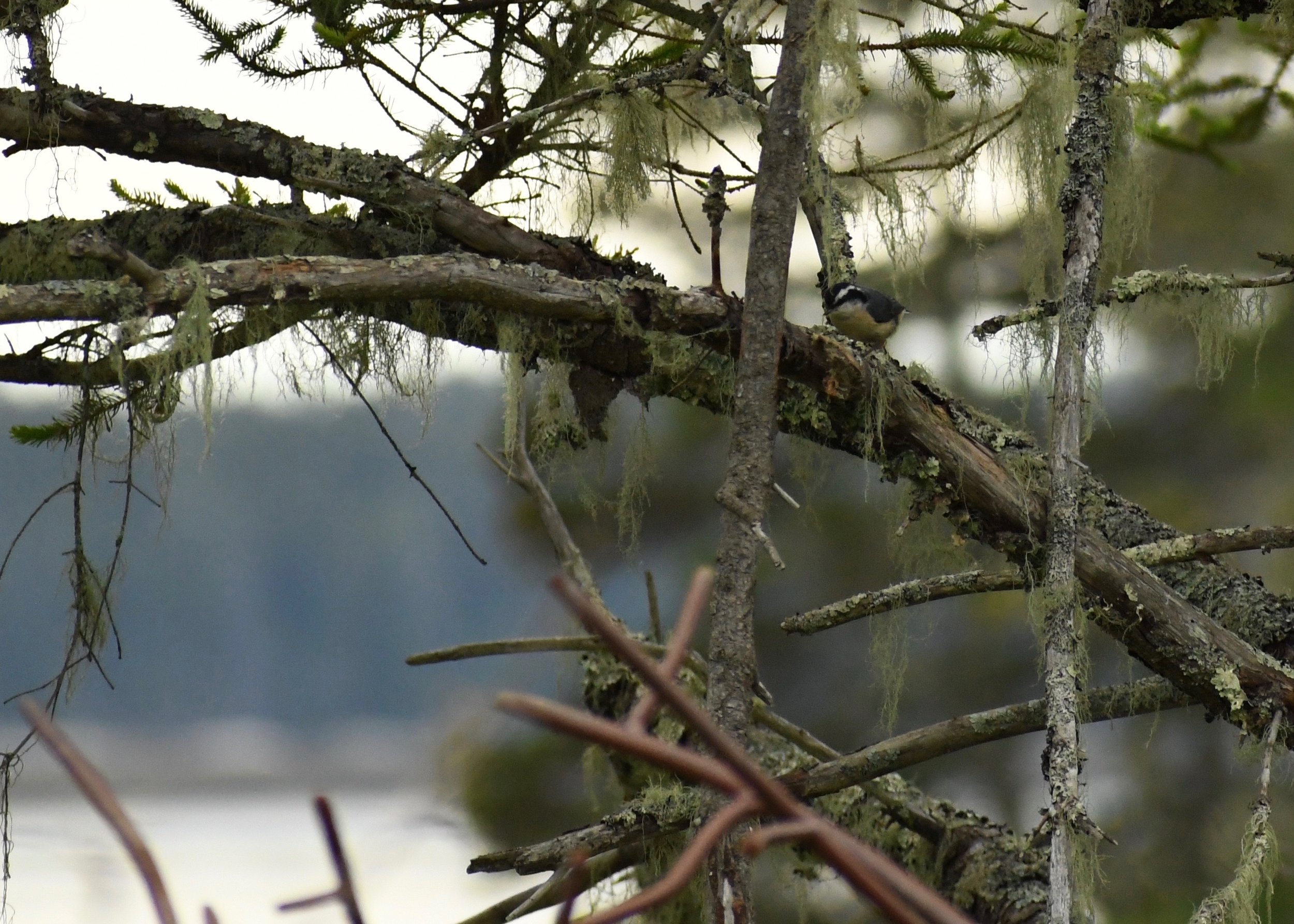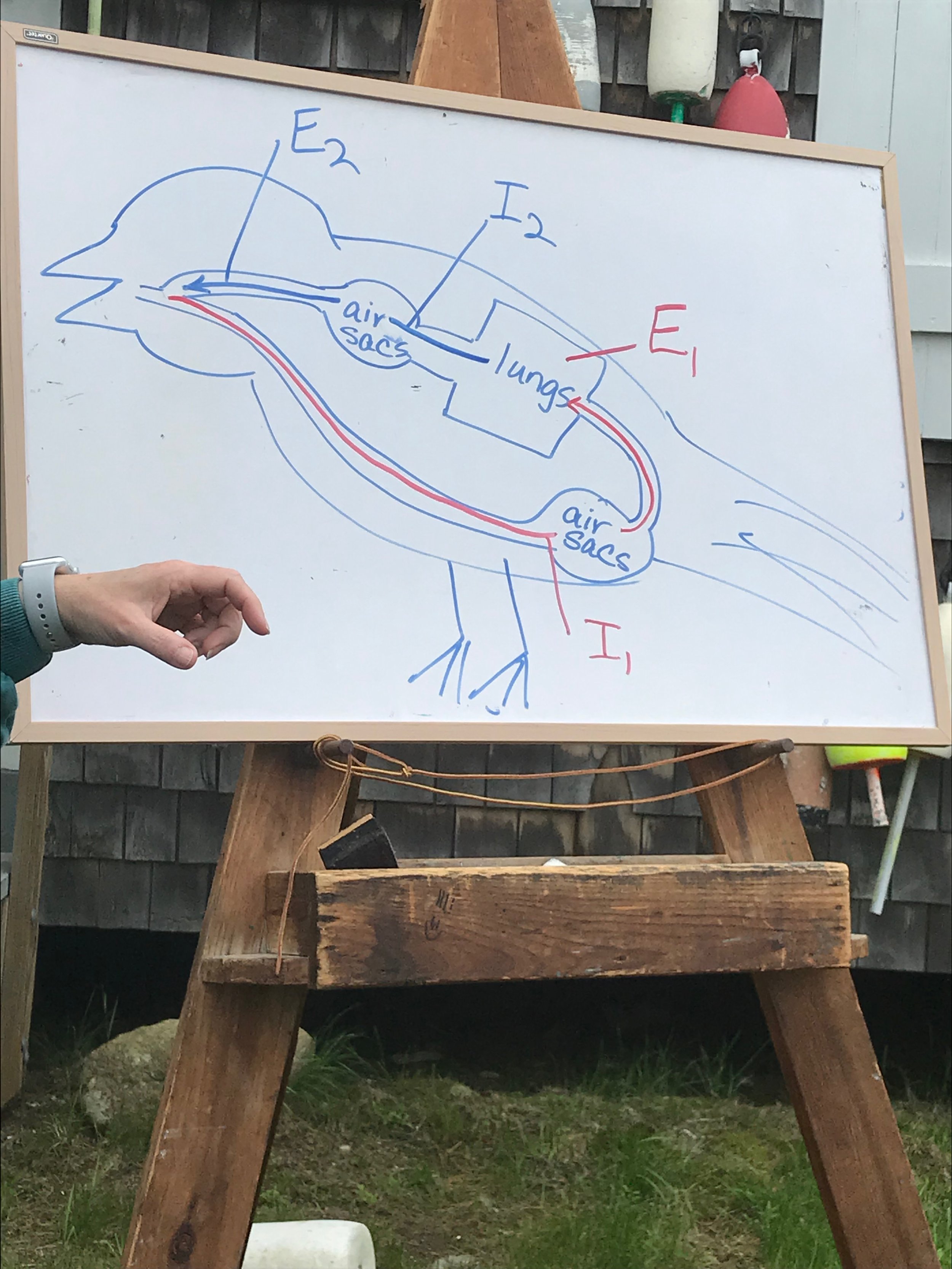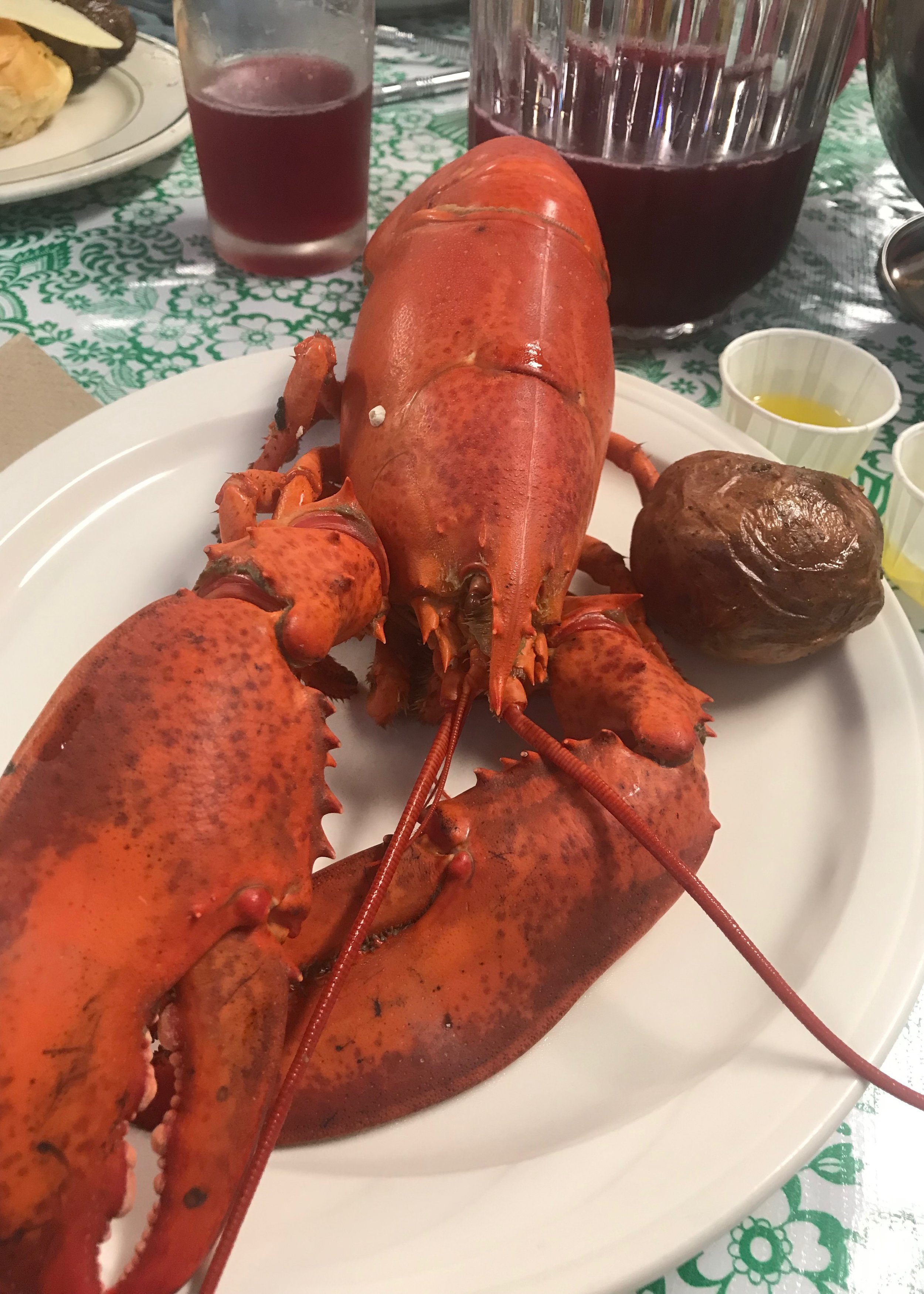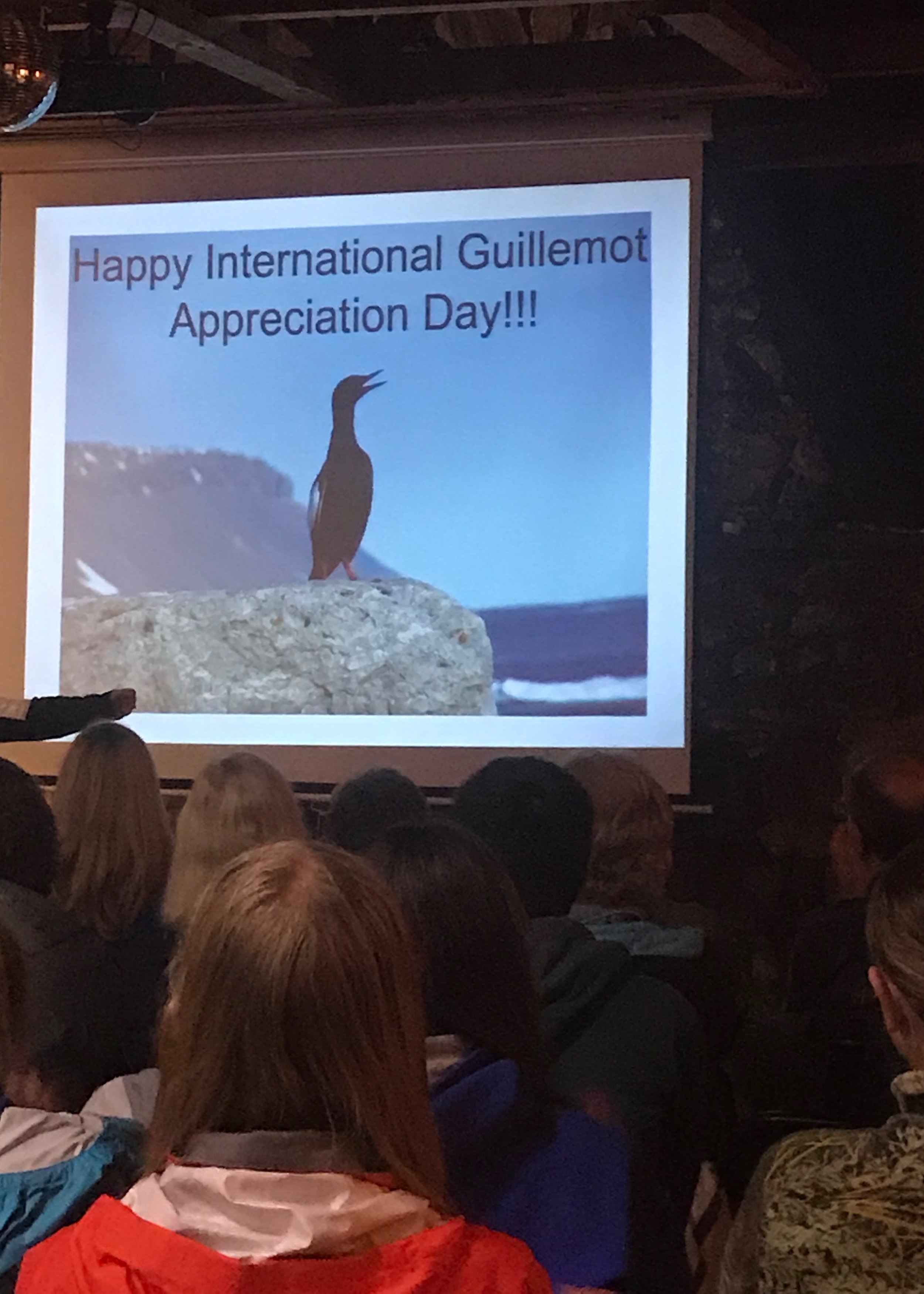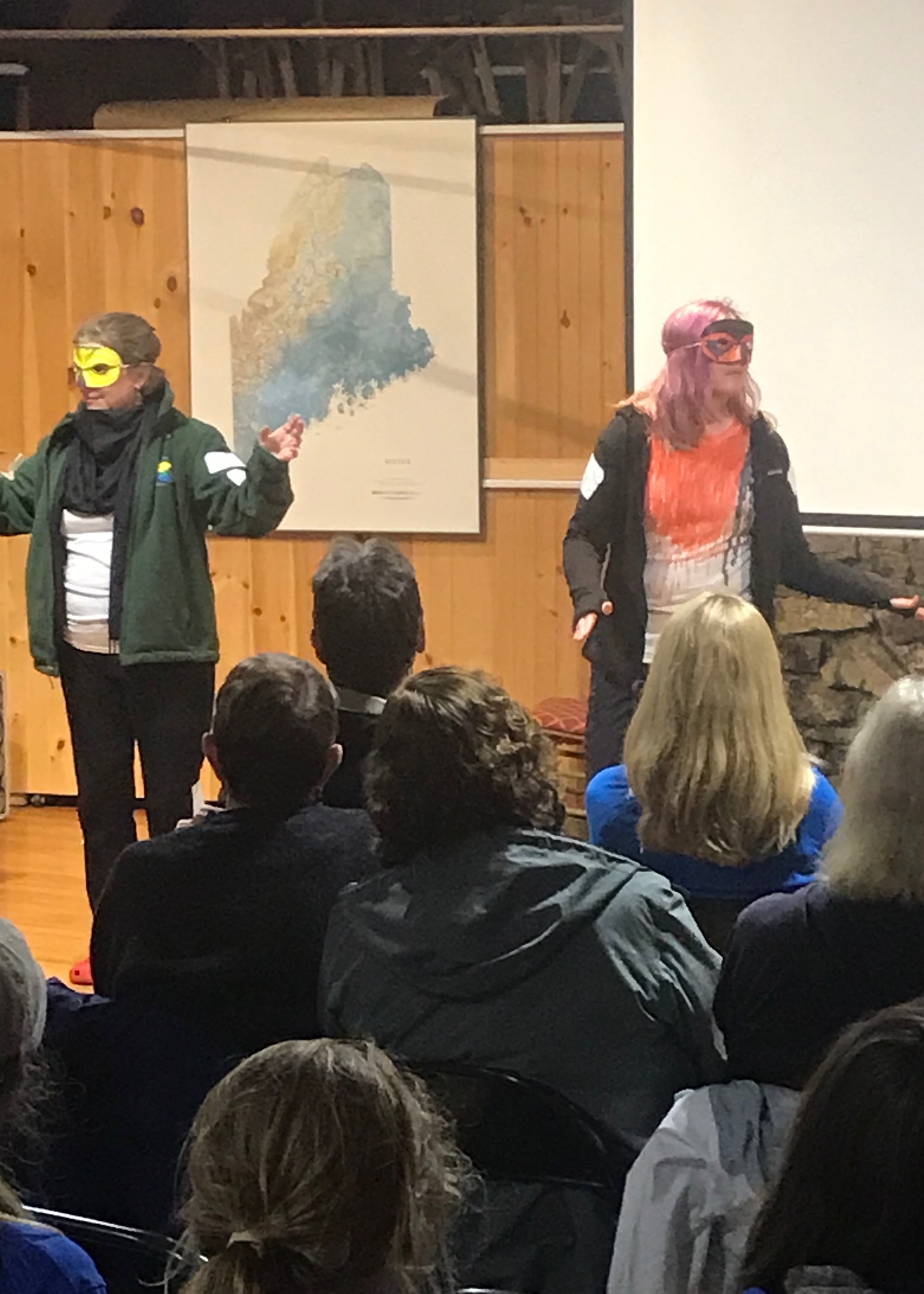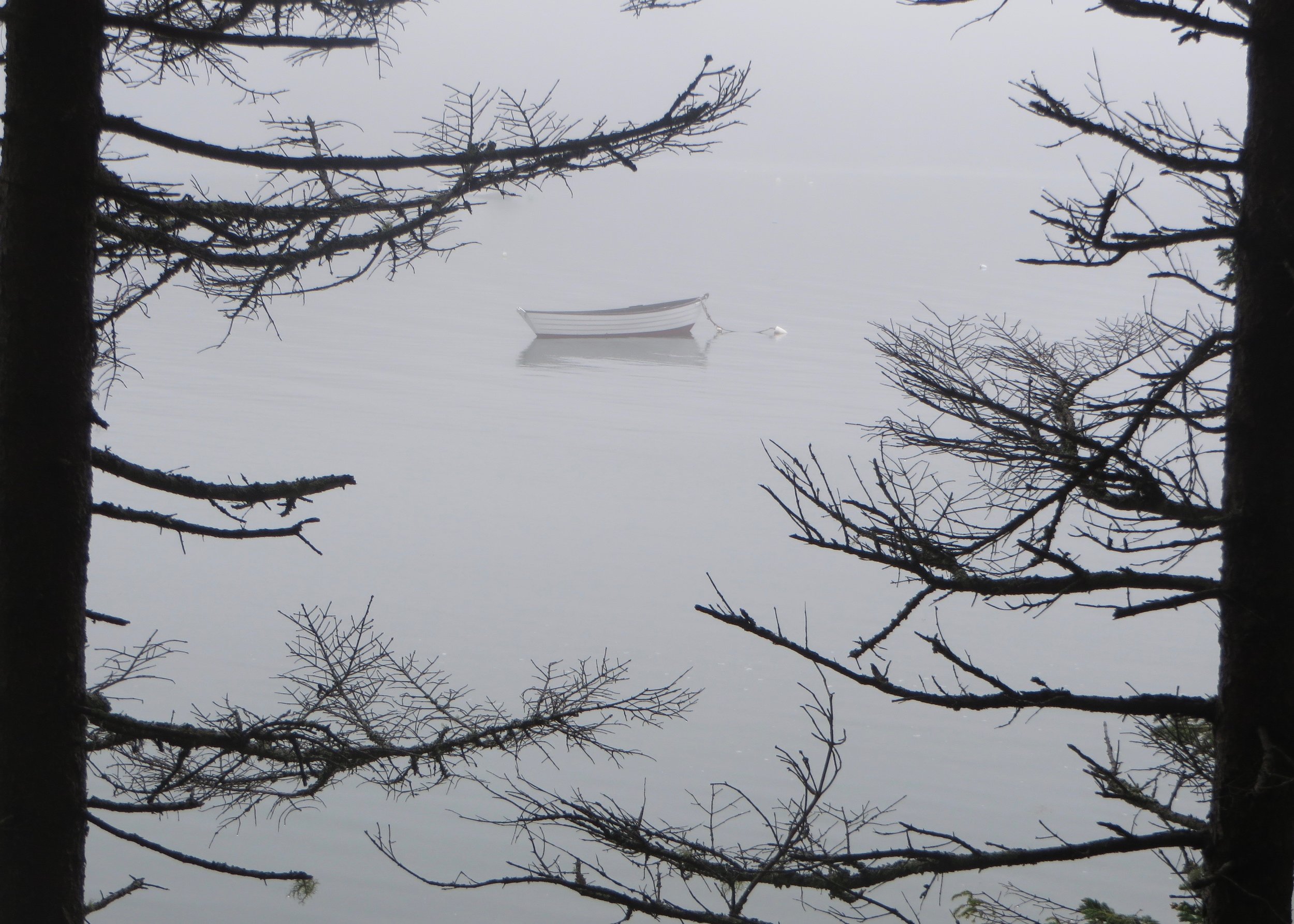Bird Camp
In mid-June, I had the pleasure of attending the famed Hog Island Audubon Camp in Bremen, Maine, for their Field Ornithology course. Led by renowned author and ornithologist Scott Weidensaul and assisted by numerous instructors, volunteers, and Audubon staffers, the week was spent immersed in birds and nature, our time spent on and around the 300-acre island. We learned a bit about bird biology, migration, songs, and identification, along with more varied topics such as marine life ecology, natural resource conservation, and flora identification, essentially immersing ourselves in everything birds. When I tell you it was an absolute blast of a trip, I am being reserved and calm – this was one of the best weeks of my life!
Day 0
My trip started on Saturday morning as I left home bright and early – headed the wrong way! I realized late the night before that I had forgotten to file some paperwork for another project, so I headed into my office for an hour to take care of that before leaving town. Knowing I had some time to spare, I decided to spend an hour or so with my local Audubon chapter on their monthly nature walk, utilizing the opportunity to get used to the large camera lens I had rented for my trip. I am so thankful I decided to practice with the new combination, as it allowed me to get my camera settings figured out (some requiring a few google searches for the how-to’s!) without missing the opportunity to photograph a new life bird. Practice time completed, I headed north for the official start of my trip.
I broke up my trip into two parts, stopping about halfway to reconnect with none other than Kamikaze! Those who followed my blog during my #AT2015 Thru-Hike will remember Kamikaze as my stubborn and injury-prone hiking partner for the first month or so of my hike. Needless to say, it was great to see her again and to catch up on our respective lives. We enjoyed a wonderful dinner at Paul’s Pasta and talked until late into the night.
Day 1
I was up early and on the road quickly, wanting to arrive early to ensure I didn’t get lost. The drive north through Connecticut, Massachusetts, New Hampshire and into Maine was absolutely stunning, even with a slightly grey and wet sky. I always forget how much I love the northern woods, but the second I step foot into them, it all rushes back and my lungs fill with energy. After a quick call home for Father’s Day, I arrived at the camp parking lot around 1230… a full 90 minutes too early. Not one to let an opportunity pass, I grabbed my camera and binoculars and headed into the mainland woods along a nature trail. The mosquitoes were buzzing in the woods, away from the slight breeze from the water, but that didn’t stop me from checking off a few lifers.
The boat shuttle began taking students across to the island around 2 pm, providing our first introductions to Captain Bill and Megan aboard the Snow Goose, a working lobster boat that is contracted by the Audubon Society to provide transportation to and from Hog Island. As we walked up the ramp to the main island complex, we were greeted by Camp Director Scott Weidensaul and Friends of Hog Island President Juanita Roushdy for our official welcome and introduction speech, after which we were given housing assignments and allowed to get settled into our rooms. I was assigned to a second-floor room in the Port Hole, located at the end of the hall and the corner of the building. My roommate wasn’t there yet, and not one to fully unpack suitcases, I tossed my gear under my bunk and headed back out to meander around the island and get my bearings. I spent some of my free time chatting with the various instructors and campers who were lounging in lawn chairs and picnic tables. Having read three of his books before coming to camp, I will admit to being a bit star-struck when meeting Scott and talking face to face. He is full of knowledge, enthusiasm, and smiles, and is not shy about sharing it all with everyone he meets. Within minutes, I could tell he was a perfect pick for Camp Director. For the next two hours, the shuttle boat ran non-stop back and forth, with small groups coming into the camp every half hour or so.
Around 5 pm, we all gathered near the Fish House, a large single room building that acts as a classroom, meeting room, and general gathering place. We introduced ourselves, sharing in a wine and cheese social hour before our first meal on the island was served. It was quite surreal to be having wine and cheese while surrounded by Purple Finches, Song Sparrows, Goldfinches, Ruby-throated Hummingbirds, and the two resident Ospreys, Rachel and Steve. After a dinner of lasagna and garlic knots, we all reconvened in the Fish House to listen to Dr. Stephen Kress, author and Director of the Seabird Restoration Program, speak about Project Puffin and how he worked to bring back Atlantic Puffins to the northeast coast where they once thrived before humans killed them off for food and feathers. While I had heard the basics of the story before, it was intriguing to hear it from “the man” himself. Stephen gave some general biological background of the puffin, and then explained how his team used decoys, mirrors and sound recordings to attract puffins back to the secluded islands, and how restoring the puffin colonies also helped to restore the tern colonies as the puffins and terns provide benefit to each other in the form of safety and community. Afterward, I purchased his book in high anticipation of reading it.
Day 2
I woke extra early to join a large group of my fellow campers on a morning bird walk, guided by several of the camp instructors. They broke the larger group into smaller groups based on experience level and made sure everyone had their binoculars set up properly and their arms and legs covered in bug spray before we got our first glimpse of the beauty of Hog Island. While we heard more birds than we saw, this walk was a great way to learn the trails on the island and get my bearings for where the different buildings are located. My group was led by Andy McGann, of Cellular Tracking Technologies, a small technology company that pioneered web-connected GPS devices for wildlife telemetry. Andy has an ear that rivals Radar of M.A.S.H. fame – he was able to hear bird calls so distant and subtle, and then was usually able to track down a general location of the bird to allow for a visual search. We saw (or heard) American Crows, American Goldfinches, Northern Parulas, Osprey, Purple Finches, Song Sparrows, Red-Breasted Nuthatch, and Yellow-Rumped Warblers. (Post note: Looking at pictures, apparently Matt Young was in this morning group, but he stayed to the back of the crowd and did not truly introduce himself until later… sorry Matt!)
After a filling breakfast of scrambled eggs and oatmeal – not on the same plate, mind you – my group was whisked to the mainland to climb into two large vans, which escorted us to the Hidden Valley Nature Center, where we broke into two groups and had an amazing walk through the woods, spotting birds, flowers, and plants. The amount of information the instructors pass along astounded me, from camera settings and sound recording advice to bird song and plant identification tips. My group was led by Andy McGann and Matt Young, a bird vocalization expert from the Macaulay Library of Natural Sounds at the Cornell Lab of Ornithology, both of which have trained their ears to identify birdsong as easily as taking a breath of air. Both are into photography and sound recording, as well, providing a well-rounded learning experience. (I see some sound recording equipment being added to my wish list soon!) We saw 38 species, such as Yellow-bellied Sapsuckers, various woodpeckers, numerous species of flycatchers and vireos, Golden-crowned Kinglet, 8 species of warblers, and a Hermit Thrush that stood still for quite a while singing to us.
Lunch was a “box lunch” style of ham and cheese sandwich wraps, chips, apples, and string cheese with homemade chocolate chip cookies for dessert (they know my weakness!) Sitting in the shade around the vans with the other group allowed us to socialize with each other more and ask questions of our instructors. After cleaning up, we loaded up the vans and headed to the Damariscotta Mills Fish Ladder, a fish breeding facility that attracts all sorts of gulls and raptors, along with an opportunistic Harbor Seal. While here, Andy pointed out a hummingbird nest, and a spotting scope was quickly set up to allow everyone a chance to view the nest “up close” without disturbing the mother and chicks. After this week, a spotting scope is top of my Christmas list. We left the fish ladder in the vans, stopping for a quick ice cream cone at Round Top Ice Cream in Damariscotta. From the rear porch, we were able to spot a few birds, including American Goldfinch, Black-capped Chickadees, Chimney Swifts, and Red-Winged Blackbirds, in the large field adjacent to the creamery, providing a nice relaxing end to the afternoon. Everyone else saw a Bobolink, but I had stepped inside to get a napkin and it was gone when I came back out. Just my luck.
Back on the island, we were given some free time. Some campers, myself included, explored the island trails more. Others napped or journaled. The atmosphere was different on the island than I expected, being much more relaxed and casual, although pleasant. Dinner was served promptly at 6, and Mondays are apparently Taco Night (not Taco Tuesday?) Regardless of the day of the week, if the Hog Island kitchen is serving tacos, I implore you to fill your plate high and pass me any extras you can’t eat! Yum. #TacosEveryday
Our day was capped with the evening program presented by Dr. Sara Morris, a professor at Canisius College in Buffalo, New York, and long-time Audubon Camp instructor. The program was titled “Taking the Sexism Out of Birding”, and while it seemed to be a trigger-topic, the theme was actually how to identify female warblers easier. Female warblers account for about 75% of all warbler sightings, but are not as colorful as their male counterparts, and therefore ignored by a large number of birders. Being able to identify the subtle details made identifying much simpler, and this interactive and high-energy presentation was one of my favorites of the week. Dr. Morris is a gifted teacher, sharing her passion and knowledge freely and enthusiastically while exciting you to learn more.
Day 3
I woke up early today, partly due to the bird songs, and partly due to the roommate song. Earplugs for tonight. I dressed and went for a walk around the lower peninsula by myself, enjoying the sounds of the woods coming to life. Breakfast was a stack of fluffy pancakes and sausage patties, with hot coffee for warding off the cool morning. After breakfast, we were split into our groups again, and my group headed for the docks for an inland boating and birding trip. Using the Snow Goose, we were able to get a water’s view of the island and see many different ducks and shorebirds, including Bald Eagles, Black Guillemots, Common Eiders, Common Loons, Double-crested Cormorants, Great Blue Herons, Osprey, and two different scoter species. Scott provided some natural history storyline as we drove around, and Captain Bill and Megan showed us some lobsters, pulling up two of their lobster pots and explaining the regulations and techniques for catching them in Maine waters.
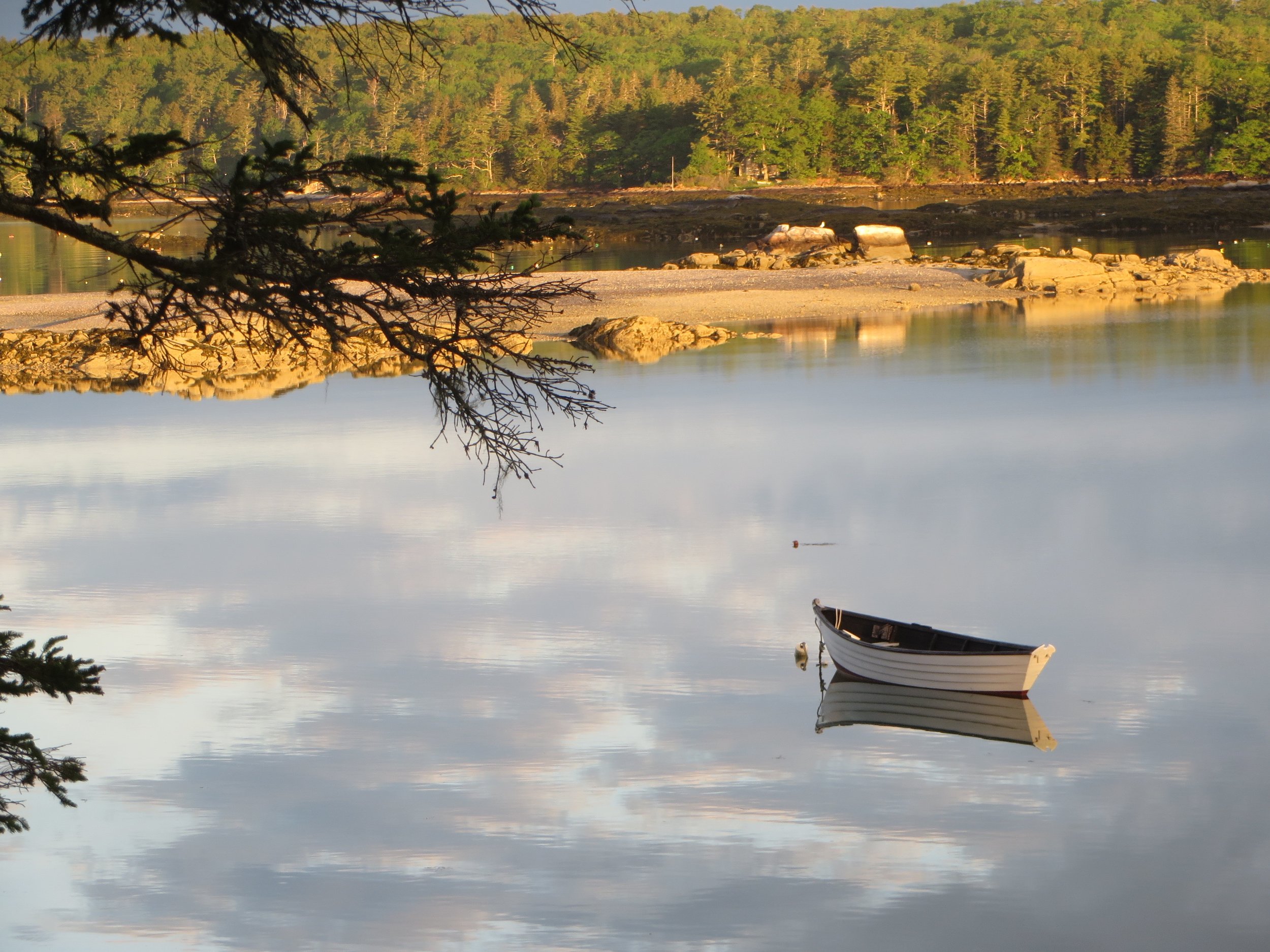
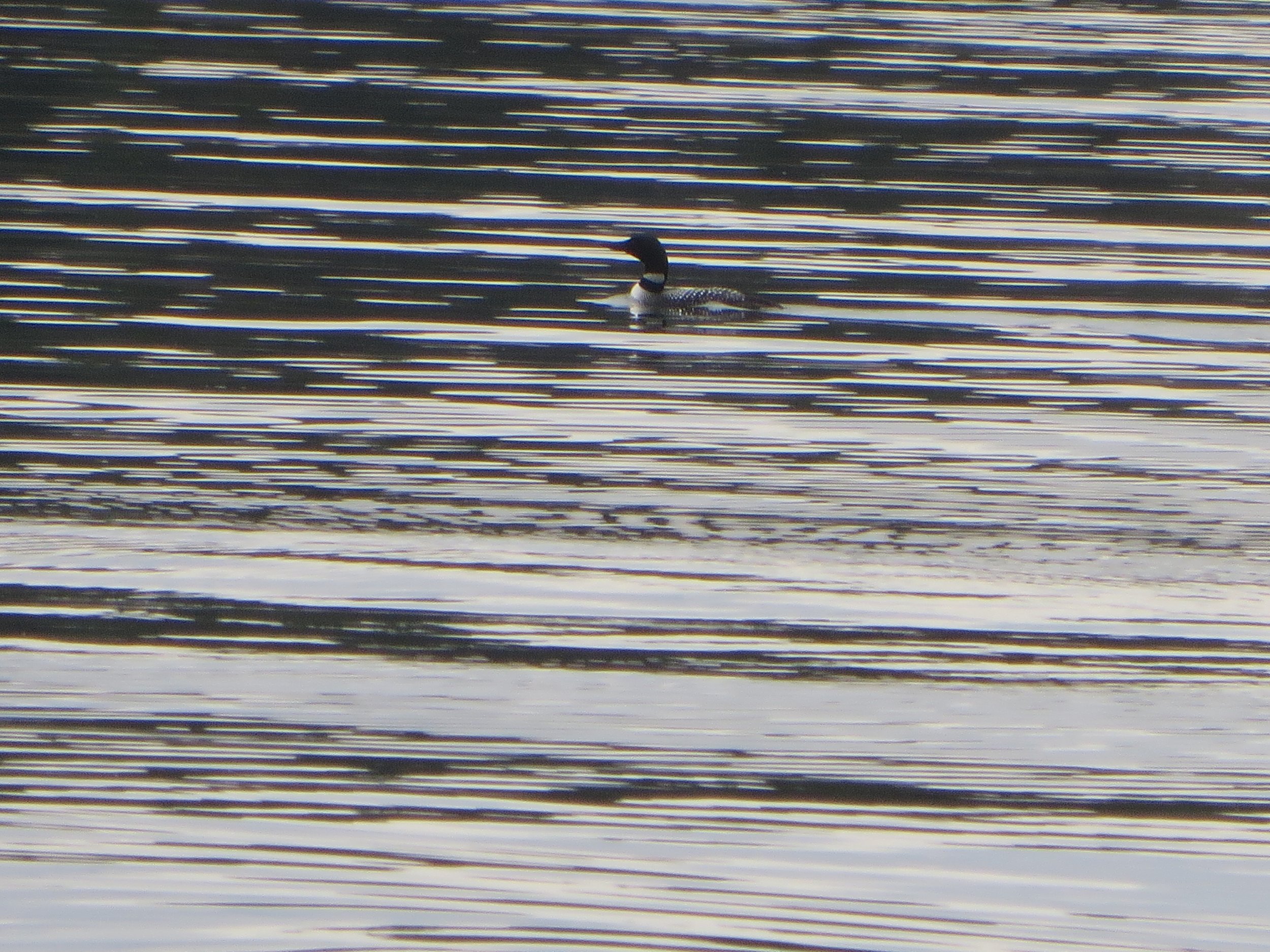
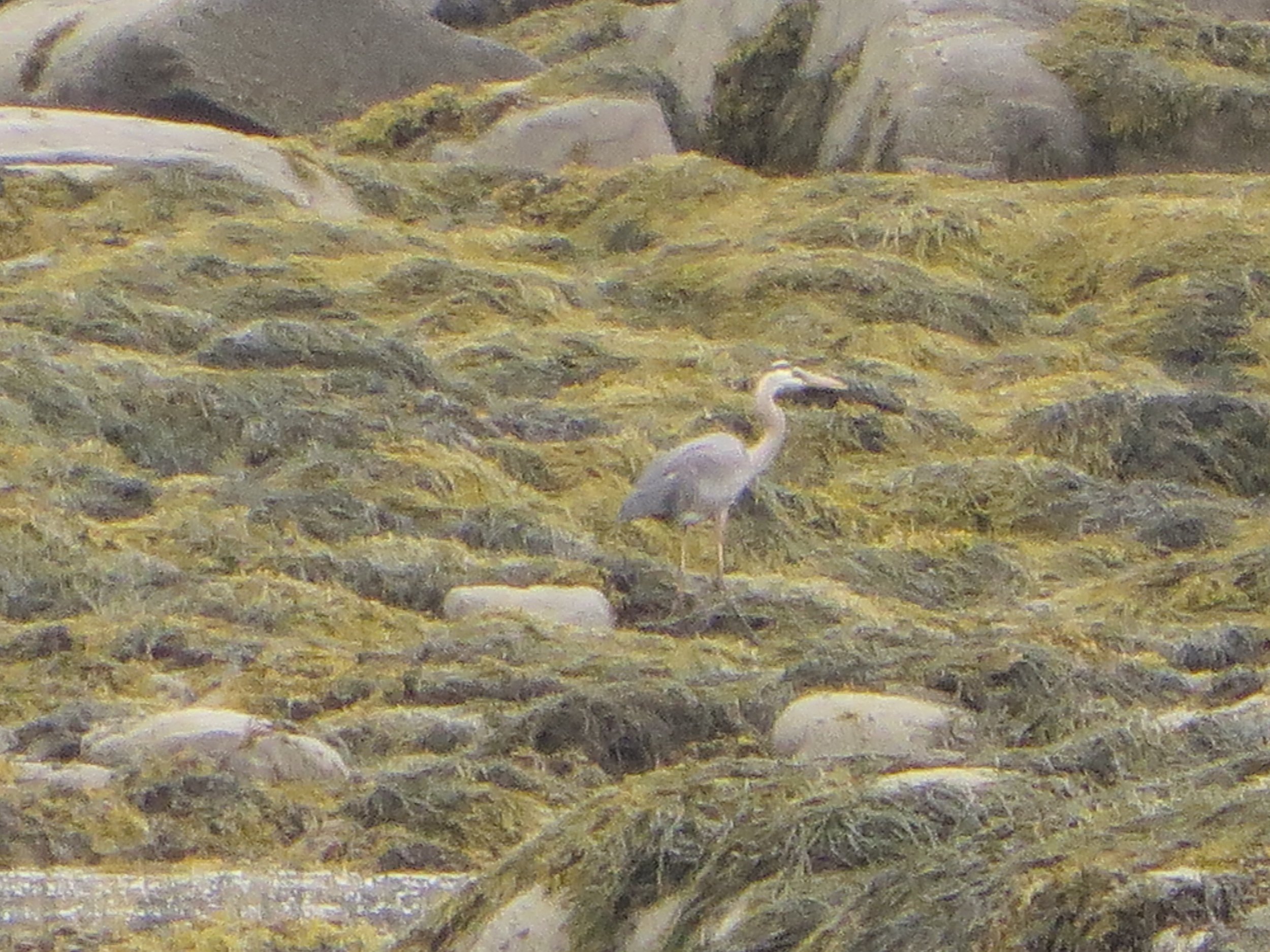
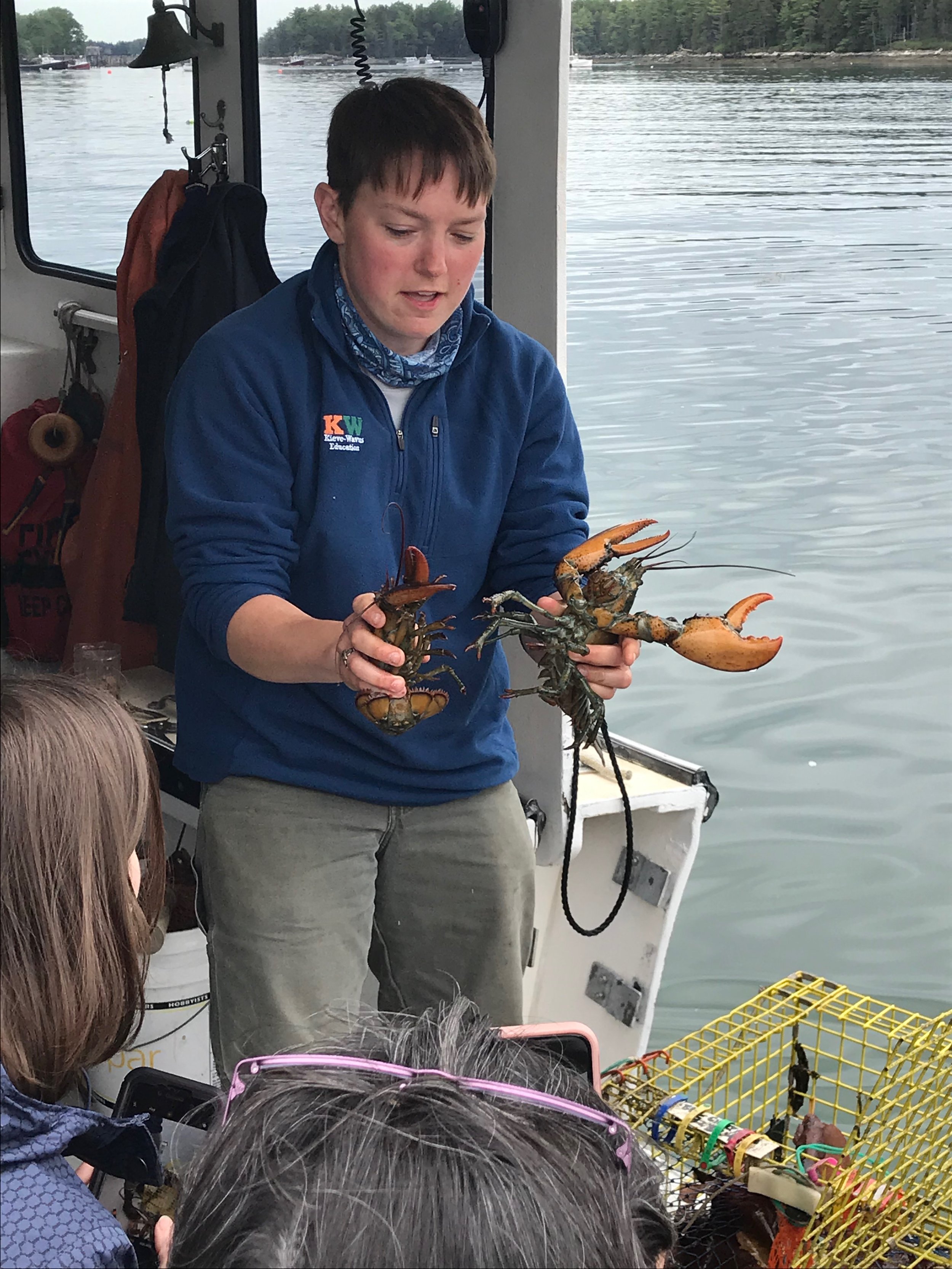

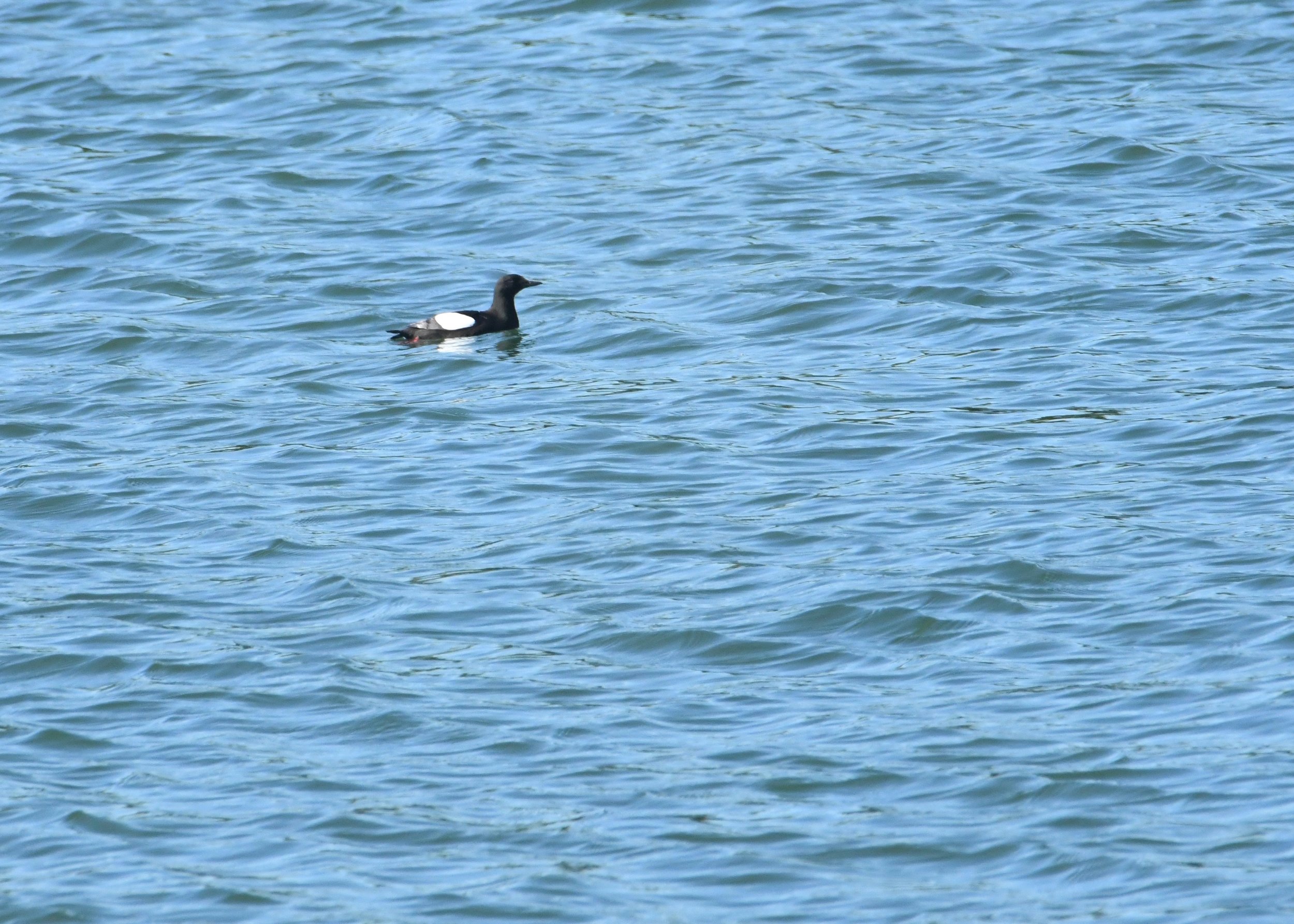
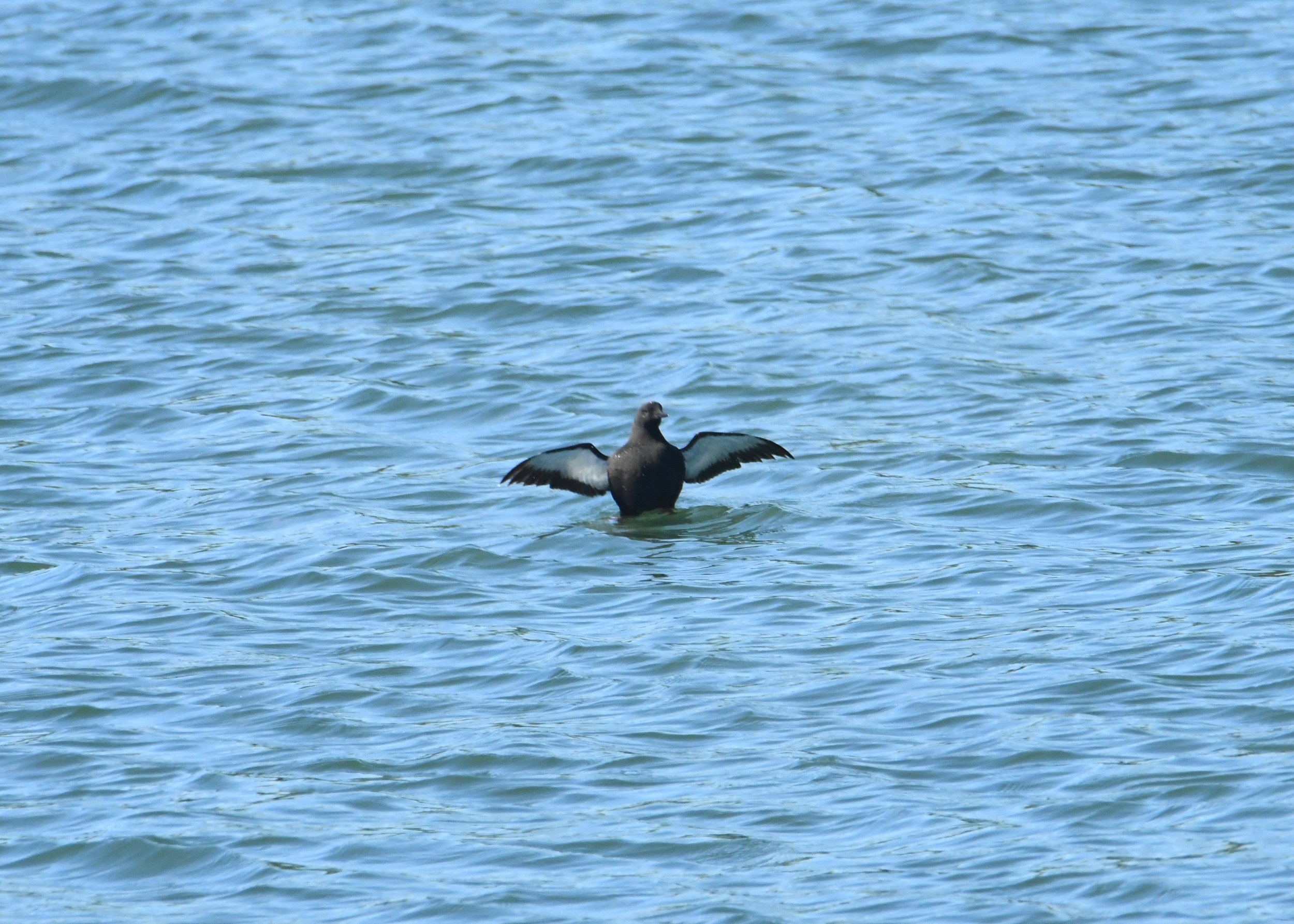
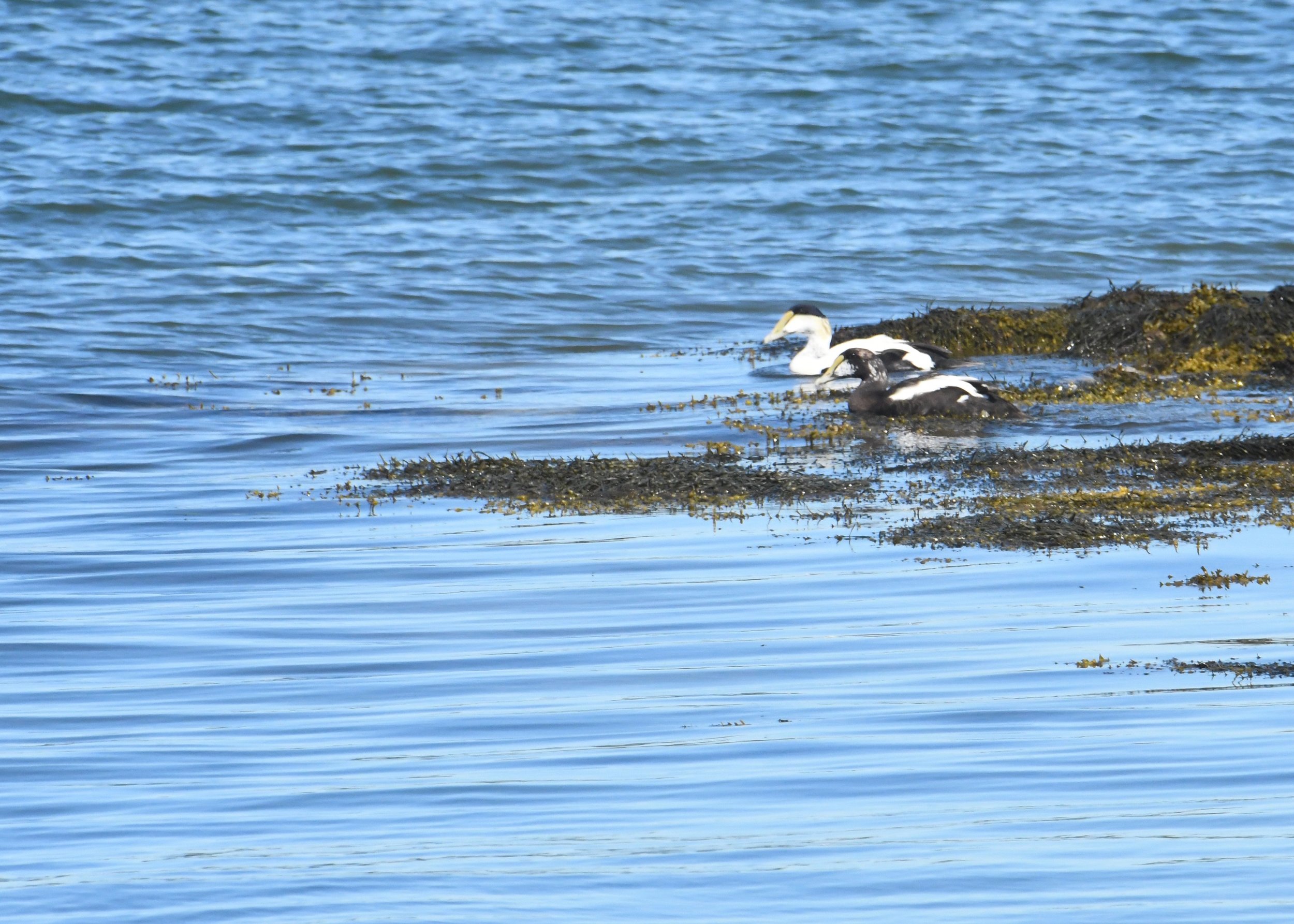

Back on the island, our group switched out with another to sit at the outdoor picnic tables and listen to Dr. Morris give an Introduction to Ornithology 101 lecture, wherein she tried her best to condense half a semester of information into a two-hour lecture. Call me biased since I love school, but her course was amazing, making me realize how badly I want to go back to school for another degree – especially if I can find an adviser with the passion and knowledge-sharing skill set that Sara possesses. I would love to sit in on her entire semester, as well, even if I couldn’t get credit for the course. This lecture was one of the sessions that made my mind buzz with adrenaline and excitement the most, covering topics like bird anatomy using a real bird skeleton, the avian respiratory system (a 4-stroke system as opposed to our 2-stroke respiration cycle), salt glands, and feather structure and physics. We started a discussion on the difference between natural selection and sexual selection, which raised a lot of questions from the students and prompted a great conversation, but tabled the discussion to break for lunch.
After a lunch of steamed cabbage and sausage, which was mouthwatering, we were given a long break to walk around the island, nap, journal, or attend to other tasks before the afternoon session began. Our afternoon was spent learning, observing and assisting with bird banding, right in the common picnic area of the island. Tony Hill, a Master Bander from Massachusetts with 25 years’ banding experience, and Emma Rhodes, a coastal biologist for Birmingham Audubon with 10 years’ banding experience, set up mist nets to safely capture some of the songbirds on the island. Watching Tony, Emma and Scott work together to capture, band, measure, document, and finally, release a handful of birds throughout the afternoon was a great experience. Seeing the birds up close and safely held still, which included Black-Throated Green Warblers, Song Sparrows, and Yellow-Rumped Warblers, allowed us to see the feather structure and patterns, the anatomy, and the feisty attitudes of numerous songbirds and got my heart pumping for more field experience. The care and patience, along with speed and efficiency, shown by the banders was truly inspiring, showing how much goes into studying and caring for the birds. I have already begun to look for a training class in my area for becoming a bander.
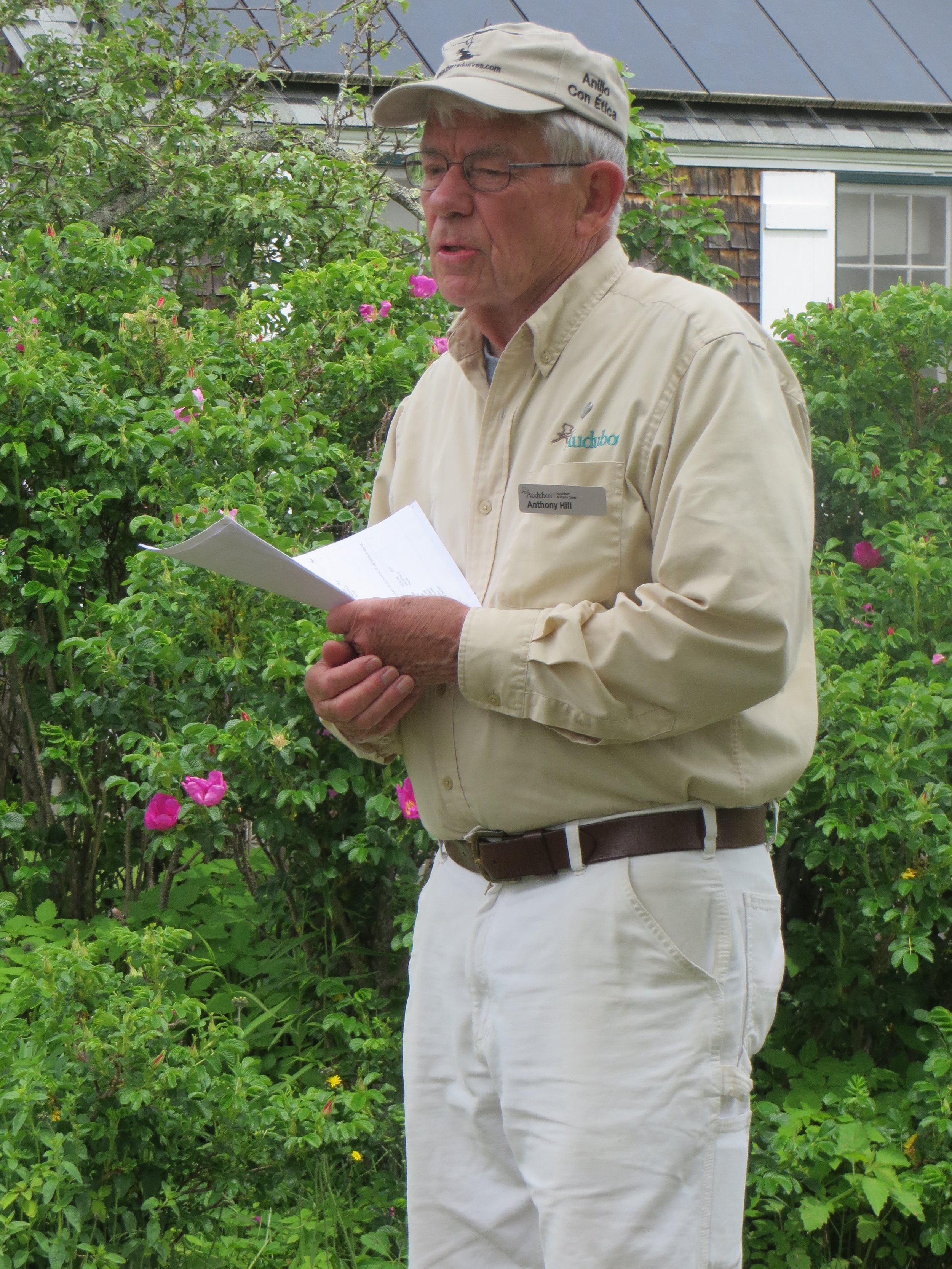
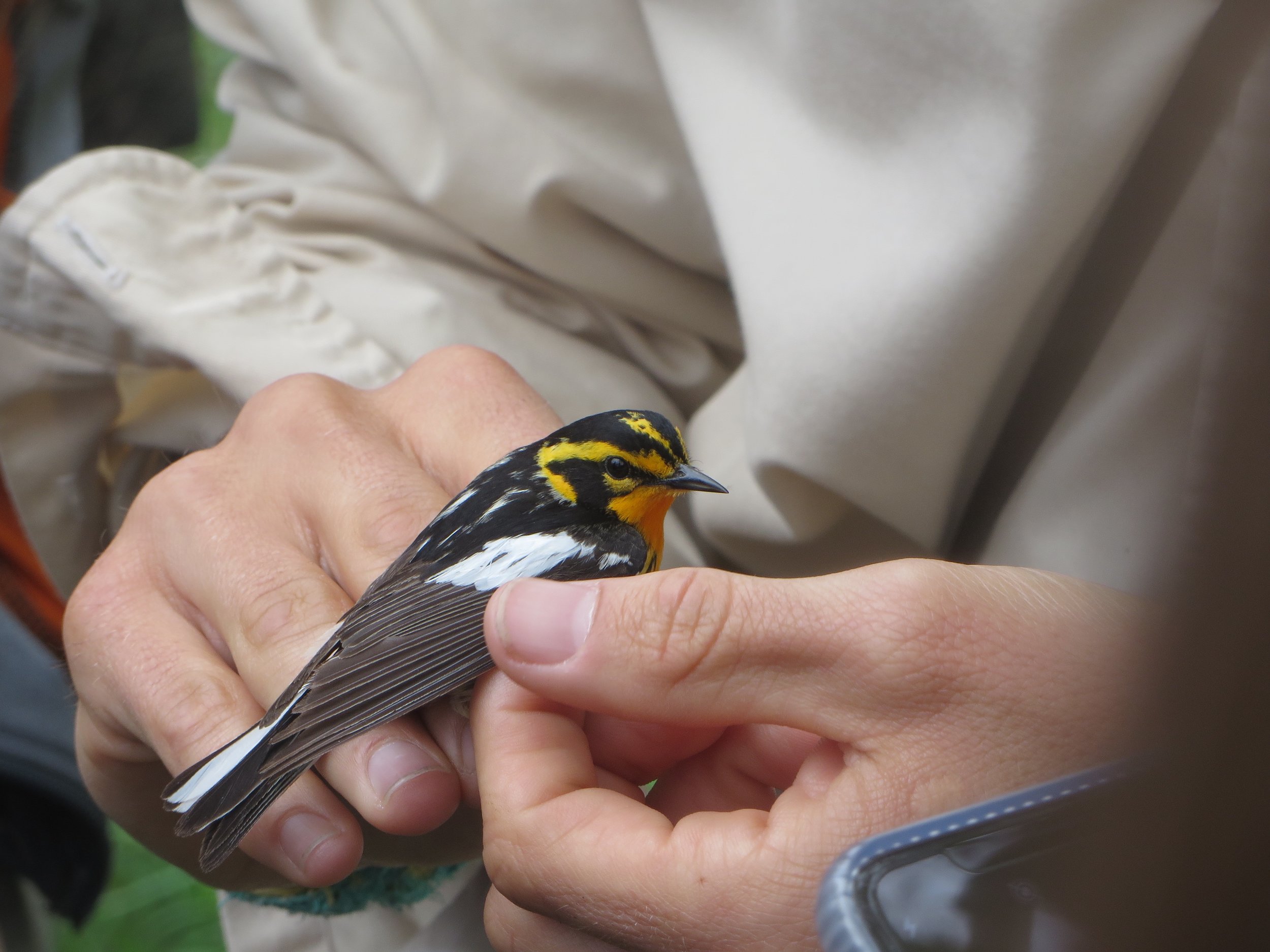
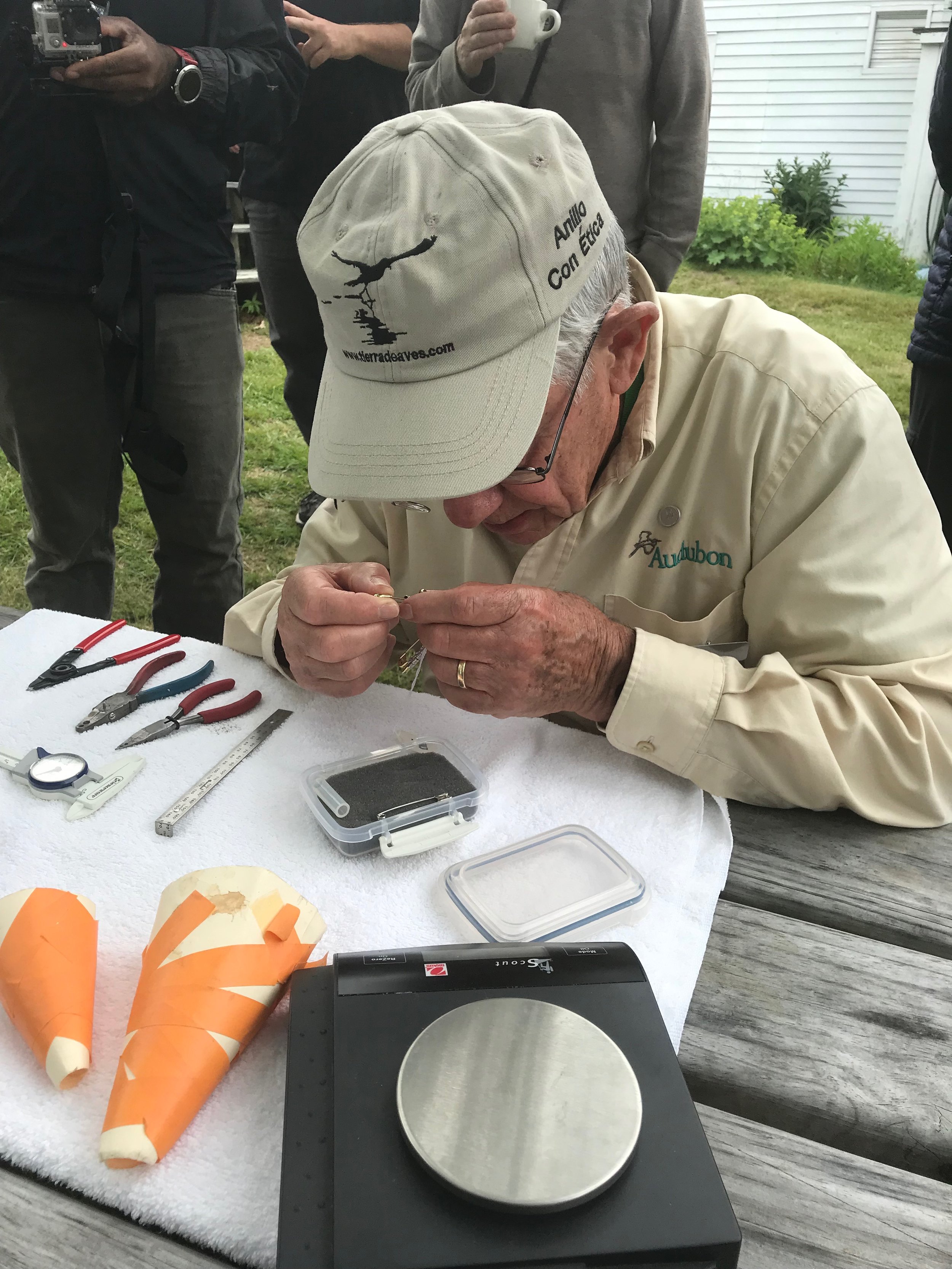

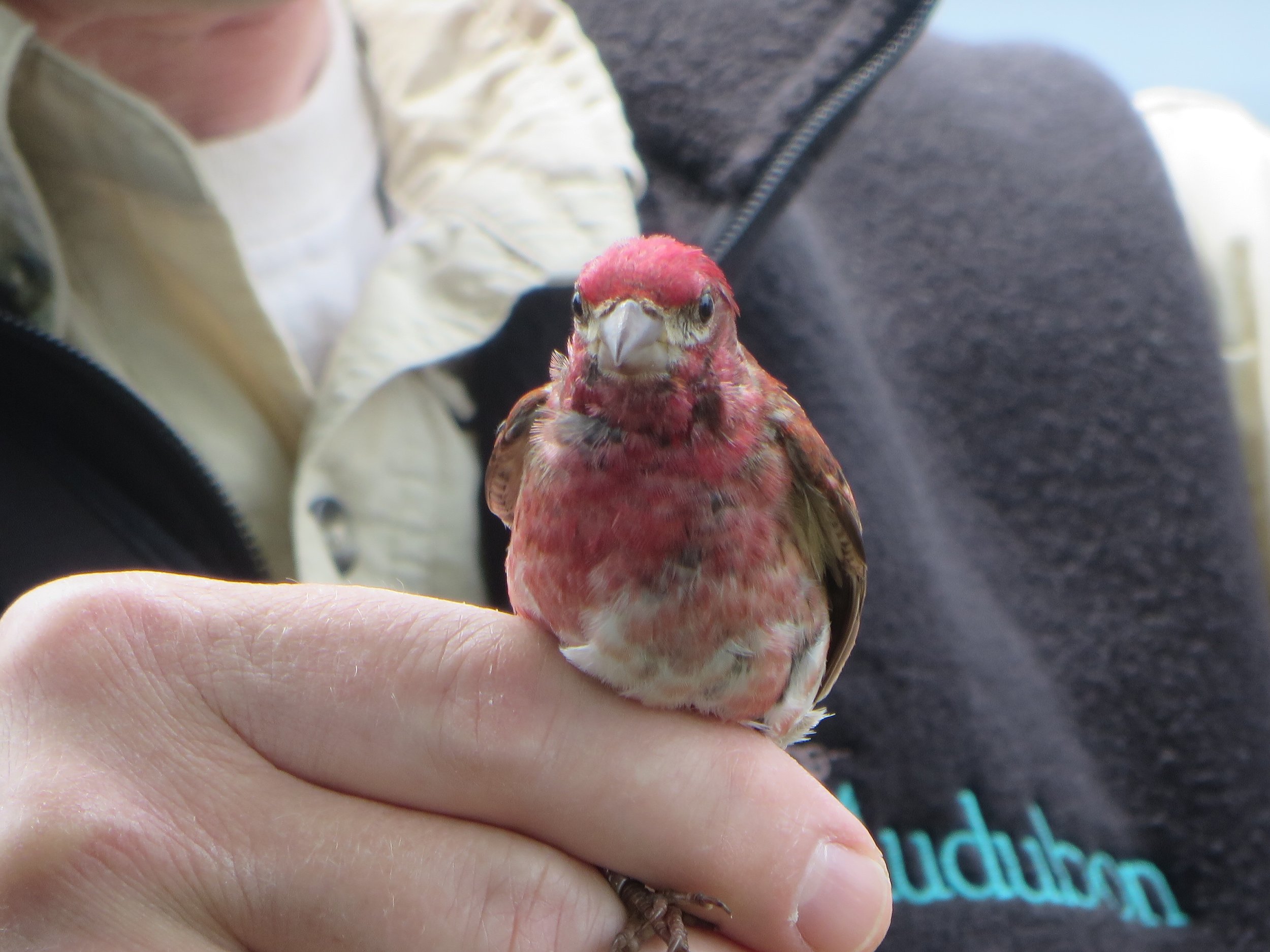

After a dinner of Pad Thai, we all gathered in the Fish House to listen to Scott present about his work with Project SNOWstorm, the organization he co-founded and runs to study and protect Snowy Owls. The slide show presentation was full of beautiful photographs and humorous stories about the adventures and misadventures that come from trying to study and track these stealthy owls. Afterward, Scott sat down and signed books for anyone who bought or brought any of his books. I waited towards the end of the line, knowing the room would empty and be quieter. While Scott signed two of (my)his books, we discussed the week thus far, and I expressed my desire to possibly change careers into something more birdy. He was extremely supportive, giving me some advice on who to contact, what courses to look for, and how to proceed as an adult in a “younger” profession.
Day 4
I woke early again due to the roommate sounds – my earplugs failed me – but the fog was dense so I rolled over and went back to sleep. Breakfast was a quick affair of egg and cheese samiches, with coffee and juice to chase it down. I strategically sat next to Dr. Morris to pick her brain a little about grad schools, but Scott had already told her of my interest and she was waiting and ready to talk about schools. I walked out of the dining hall more excited than I can remember in recent times. Split into our groups again, my group took a walk to the main island, birding along the way. Sara and Andy pointed out numerous birds, with some great views of Black-Backed Green Warbler, Golden-Crowned Kinglet, and one very vocal Winter Wren. We made our way to Bingham Cottages, the Artist-in-Residence cabins, to meet with artist Ralph James. He was very gracious with his time and space, allowing us to walk around and inside and explaining the process for being an artist-in-residence at Hog Island. While the mosquitoes were especially bad, the walk was good.
On the way back to the camp, we stopped to learn about intertidal zones by Dr. Sara. While not as exciting to me as the birds, the information she passed along was still interesting.
Lunch was tortellini soup and warm homemade cornbread. In a word… AH-MAZE-ZING. Three bowls and my stomach couldn’t take anymore, although I still wanted more! Every meal made my opinion of the Hog Island kitchen swell in proportion…as well as my waist-line! A trip to the island would be worth it just for the food.
The afternoon program was the one we were all waiting eagerly for – the boat trip to Eastern Egg Rock!!! We were all filled with excitement as we boarded the Snow Goose for the hour trip out to the island. Along the way, Scott and Andy pointed out seabirds on the water’s surface and gave us a bit more area history as we passed islands with abandoned fishing camps. The fog stayed with us most of the way to Eastern Egg Rock but cleared slightly as we approached, providing for tricky photography conditions. Thankfully, the Atlantic Puffins and terns were not shy or afraid of our boat, some flying or swimming rather close. We spent about an hour floating near the island before heading back to Hog Island, our faces painted with smiles. We even saw a rarely seen Razorbill. Back at camp, we all took the opportunity to relax before a dinner of chicken pot pie and ice cream sundaes was served.

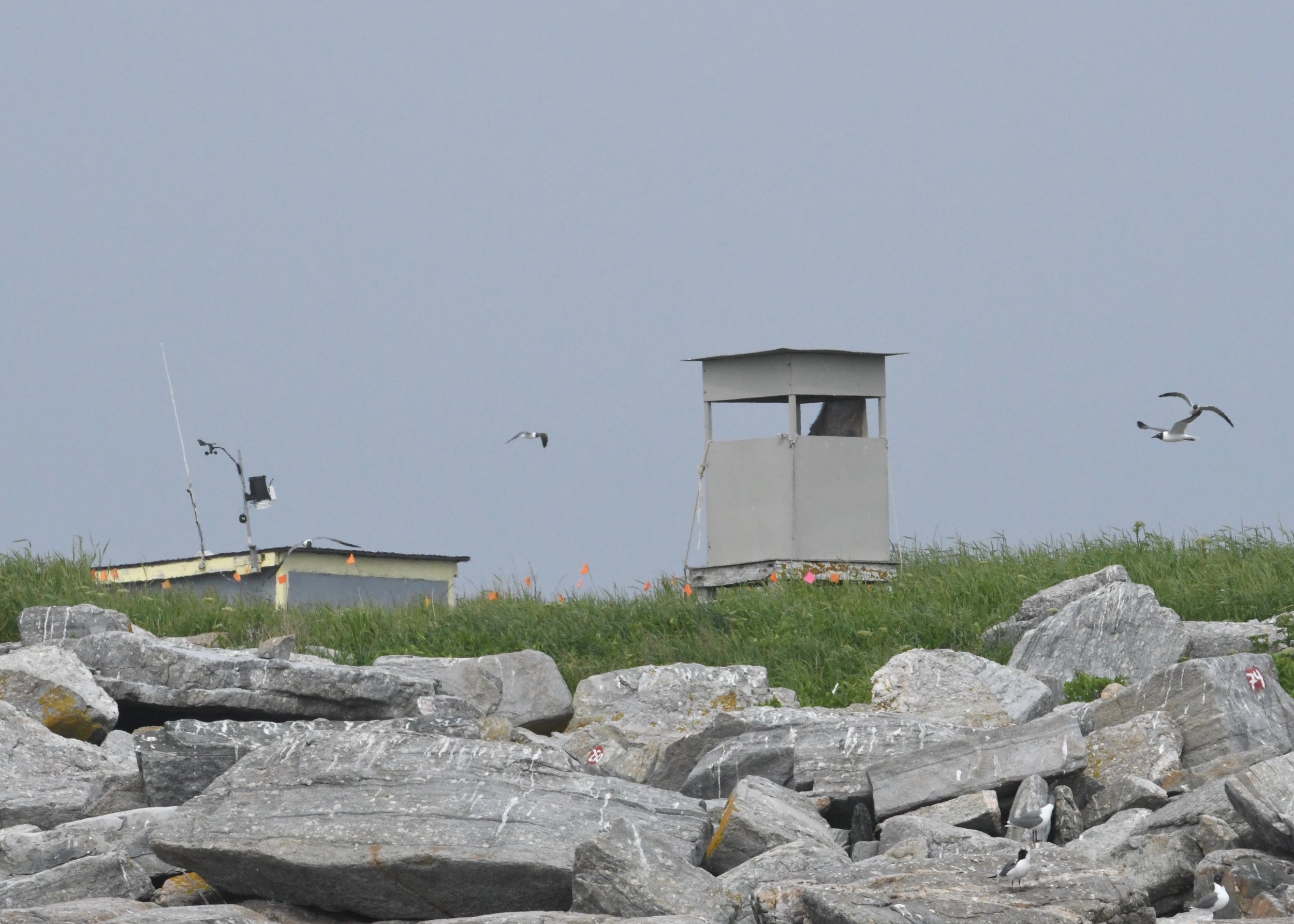
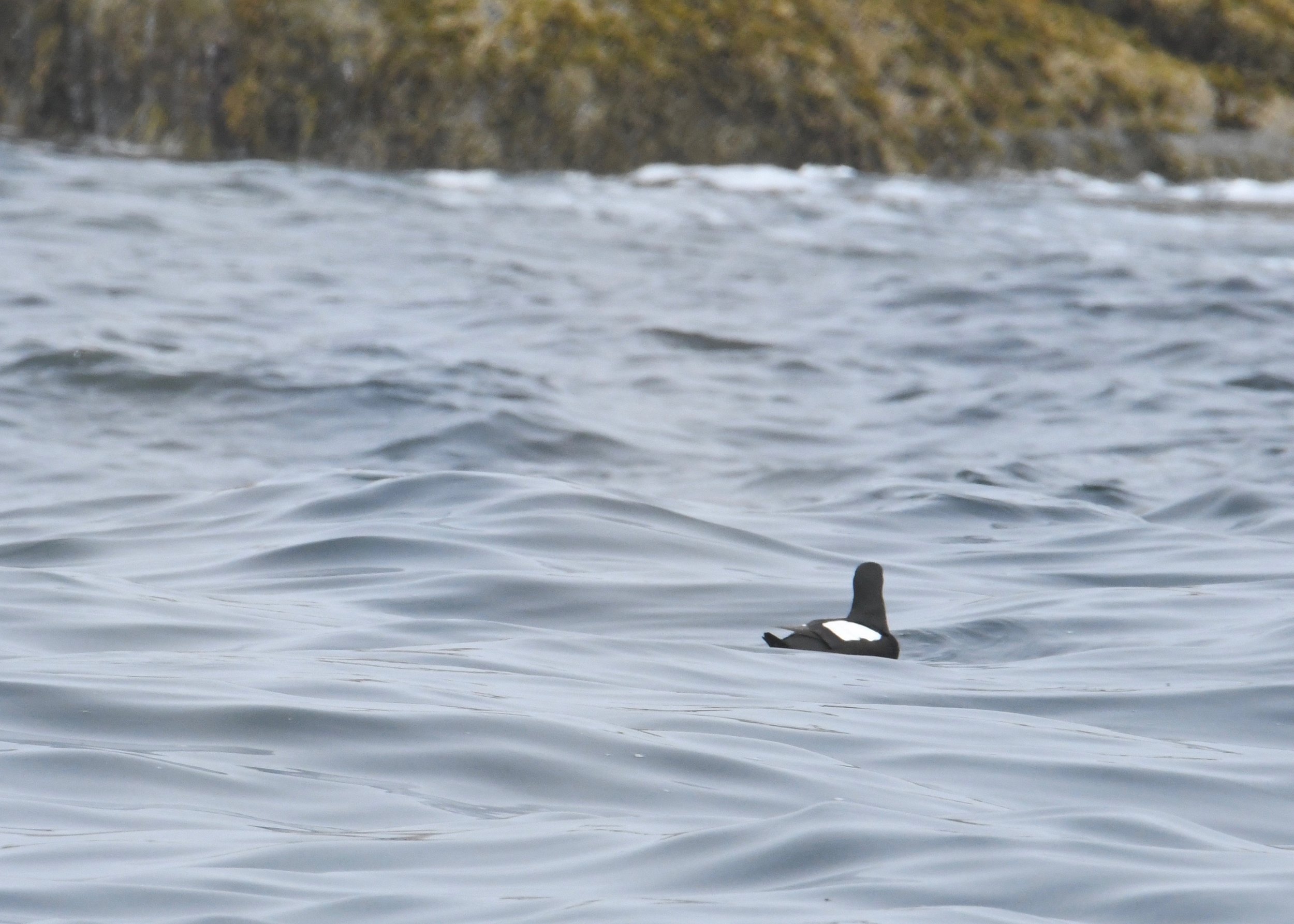
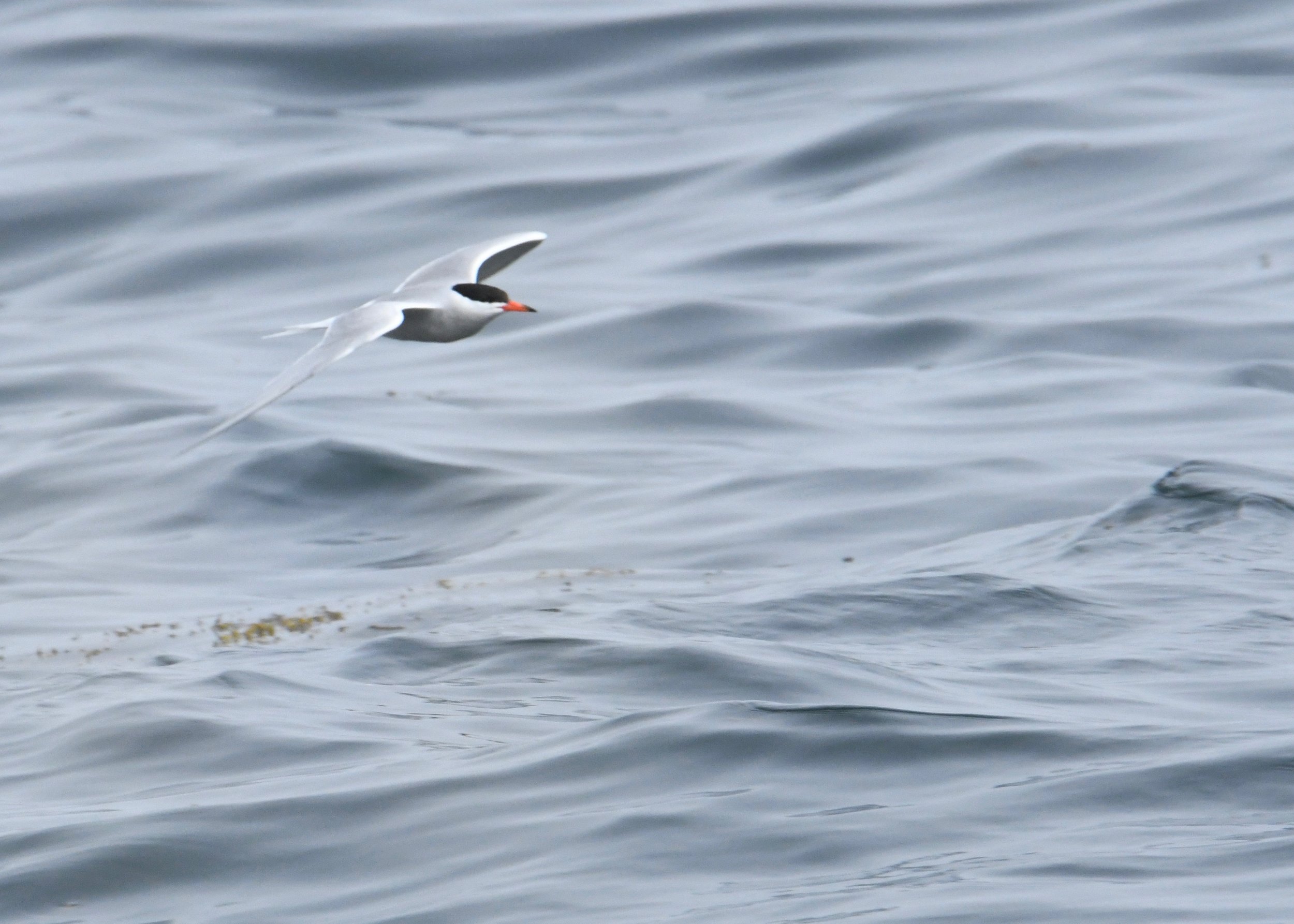
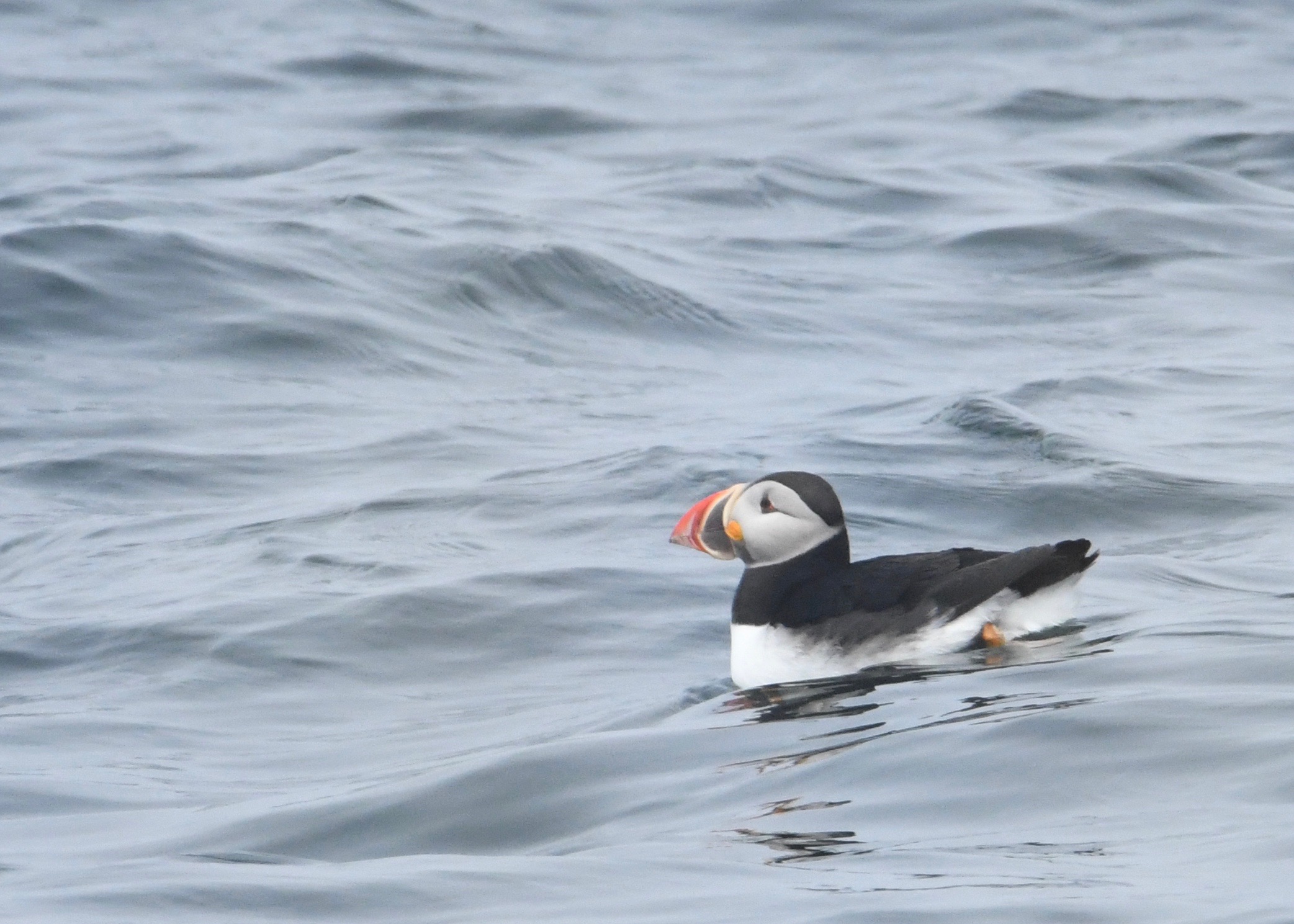
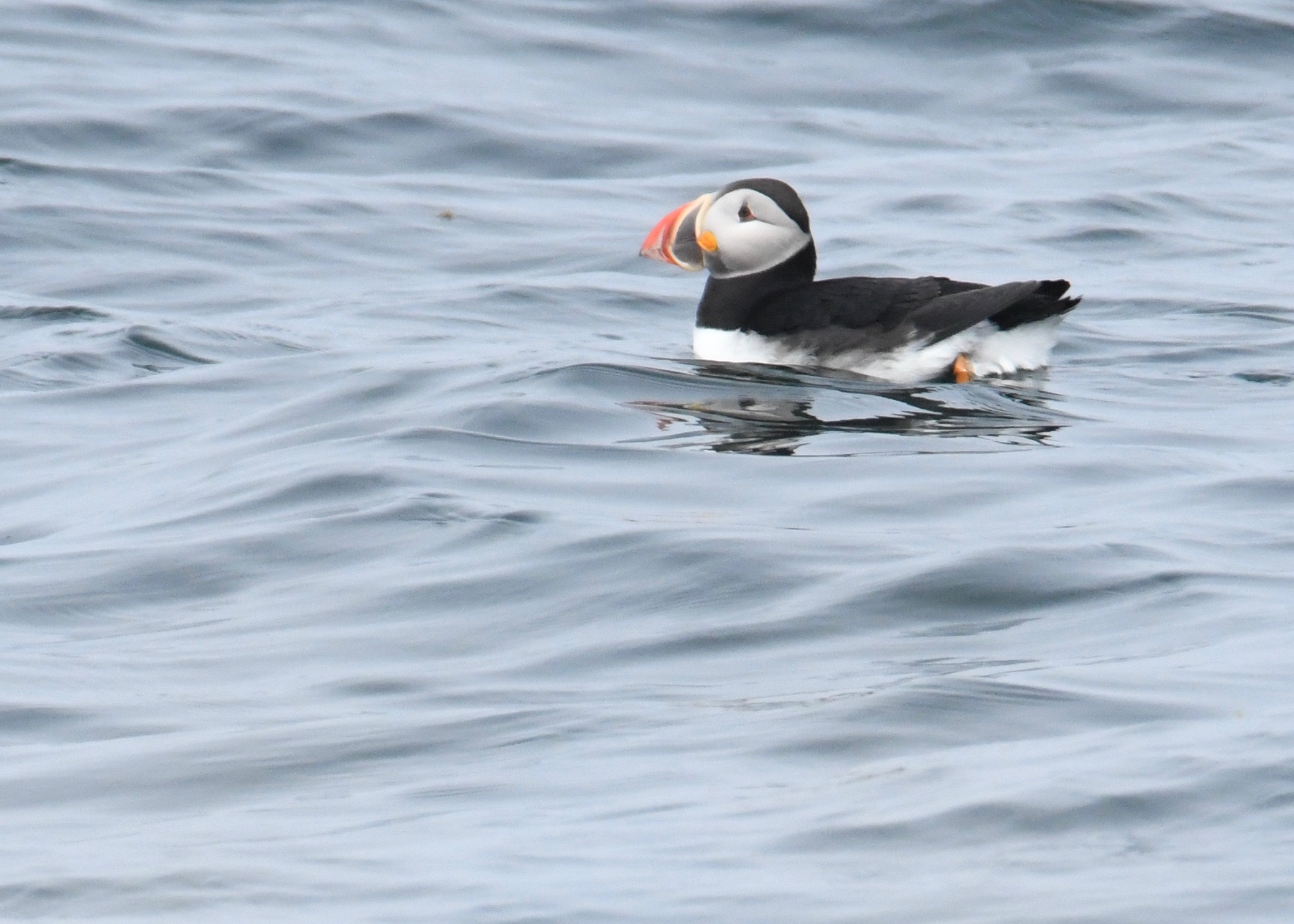
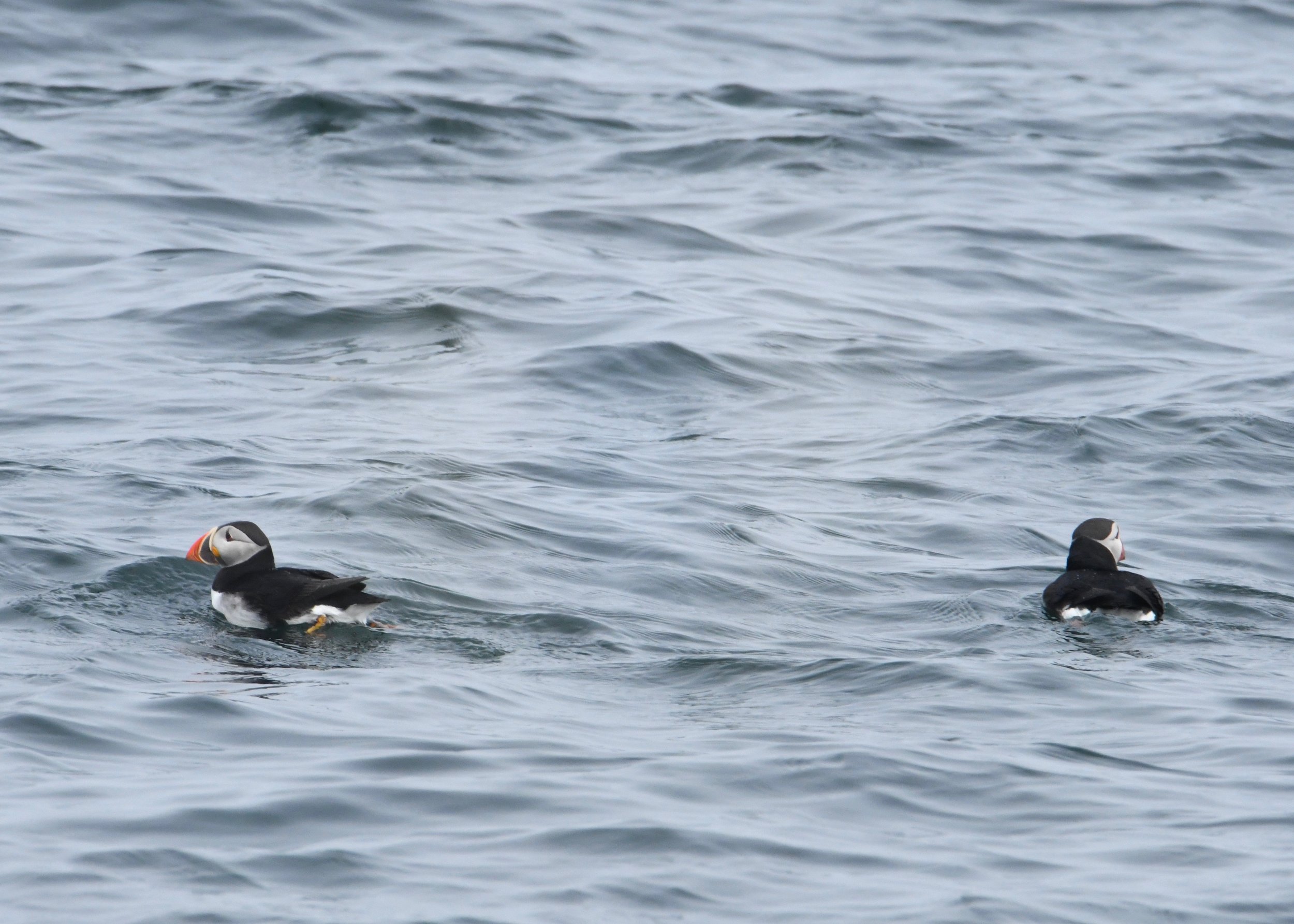

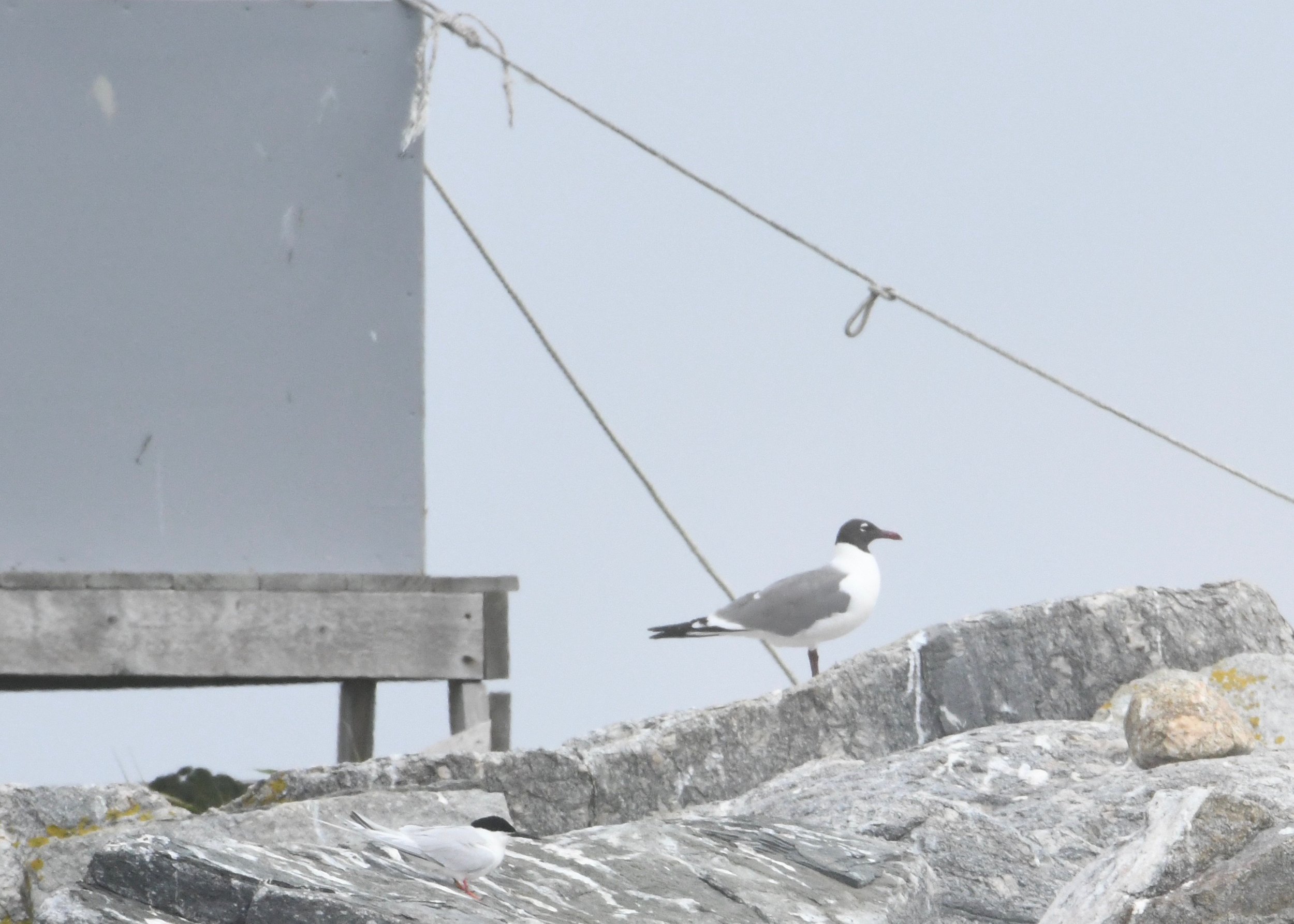
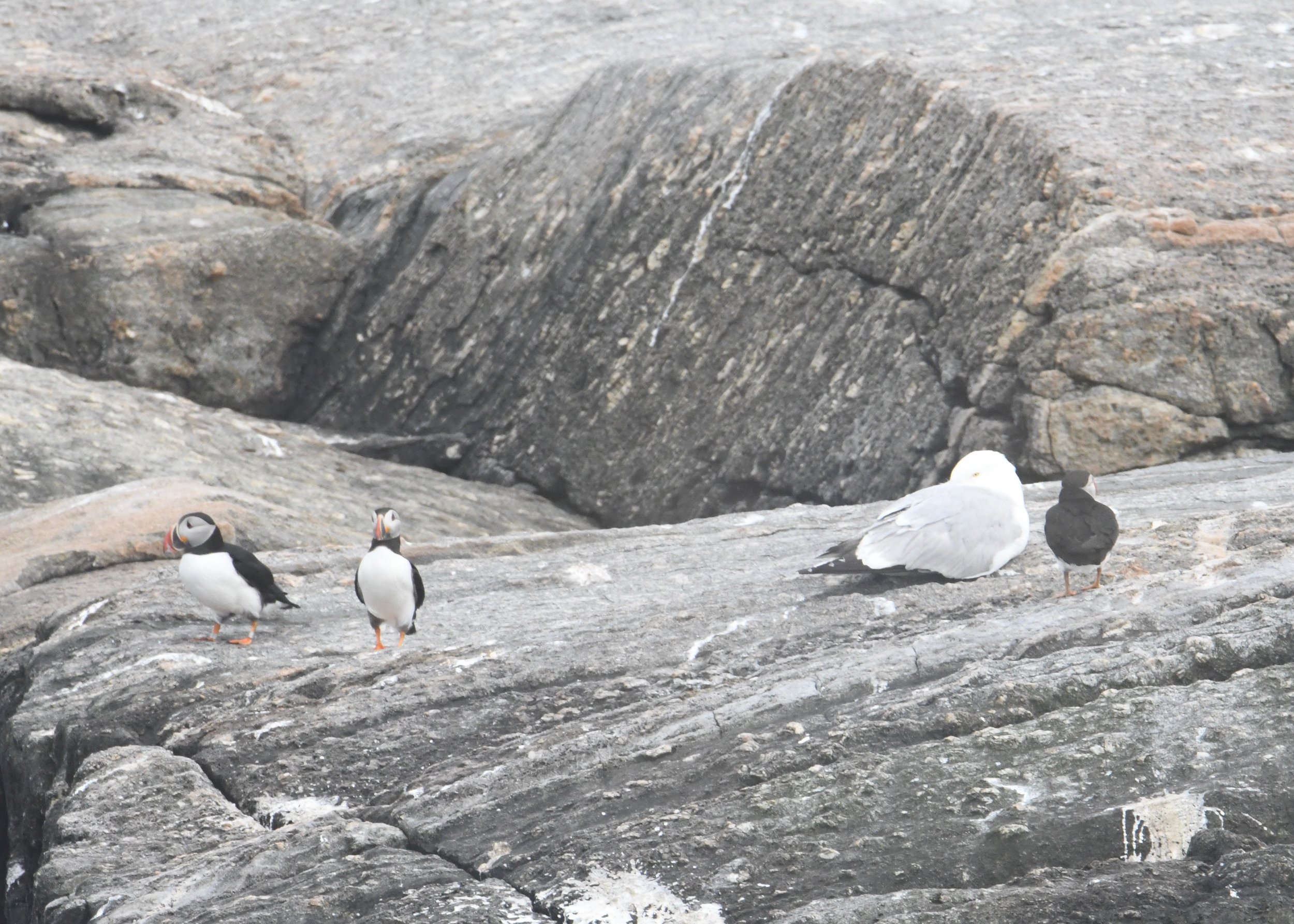
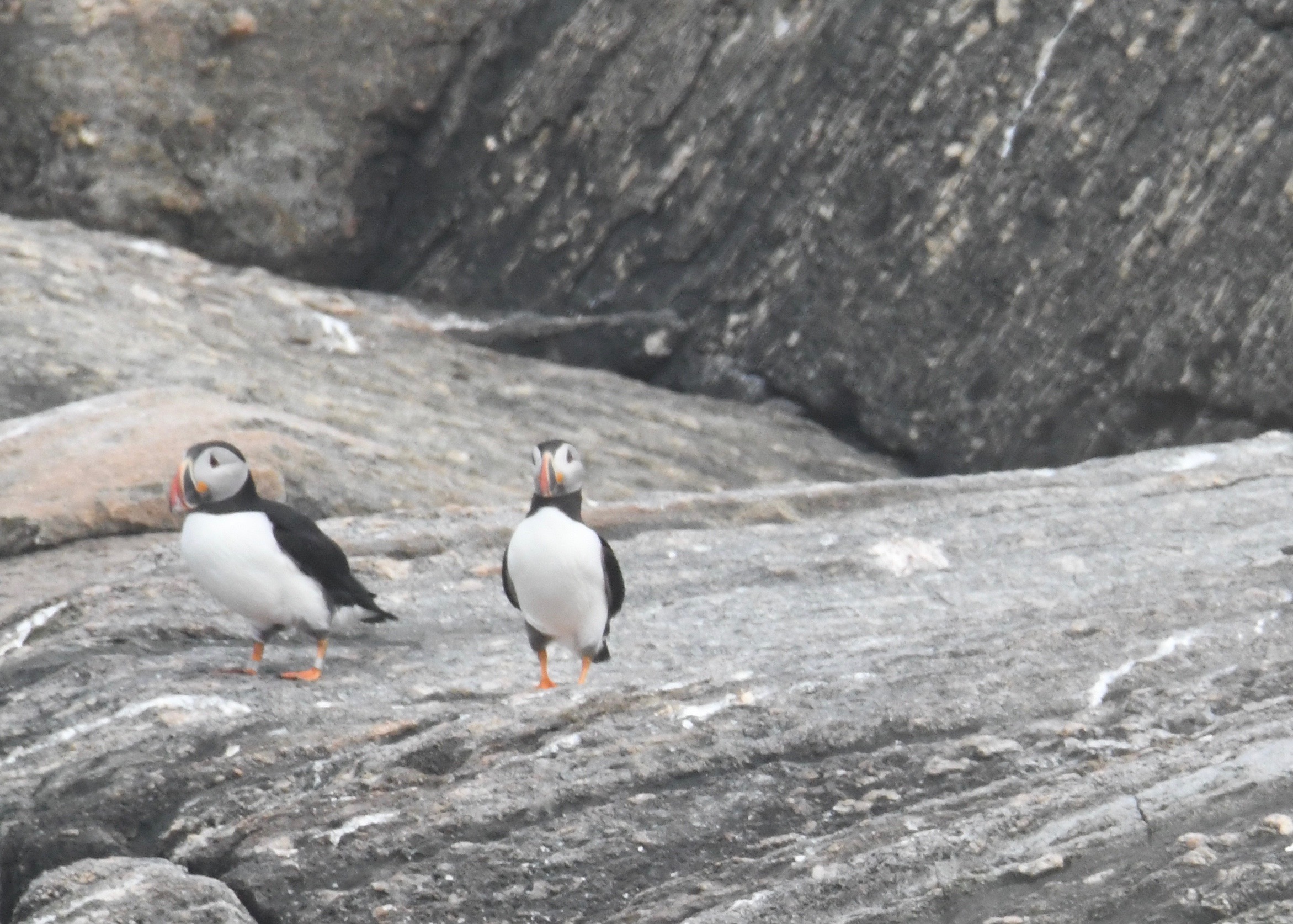
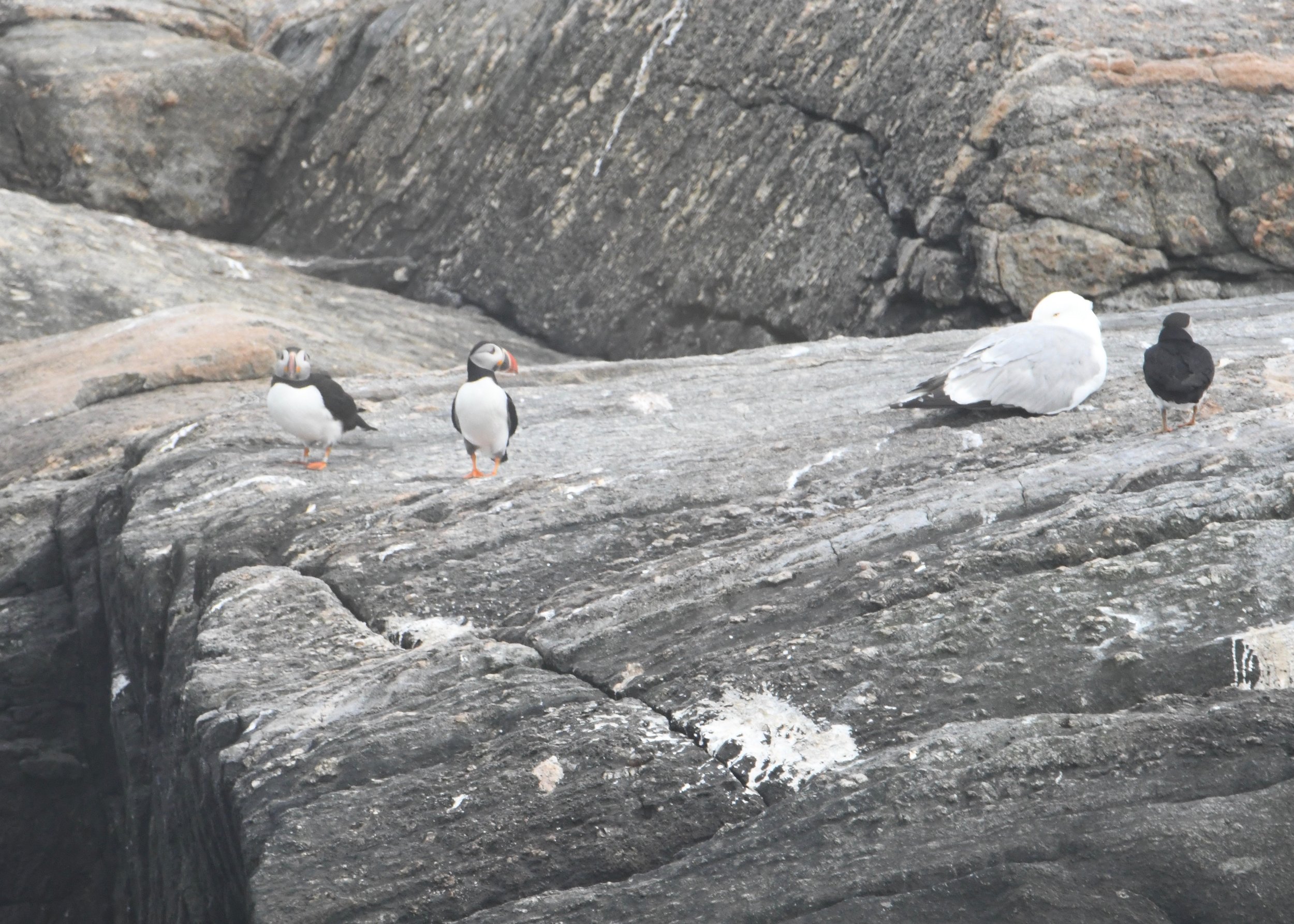
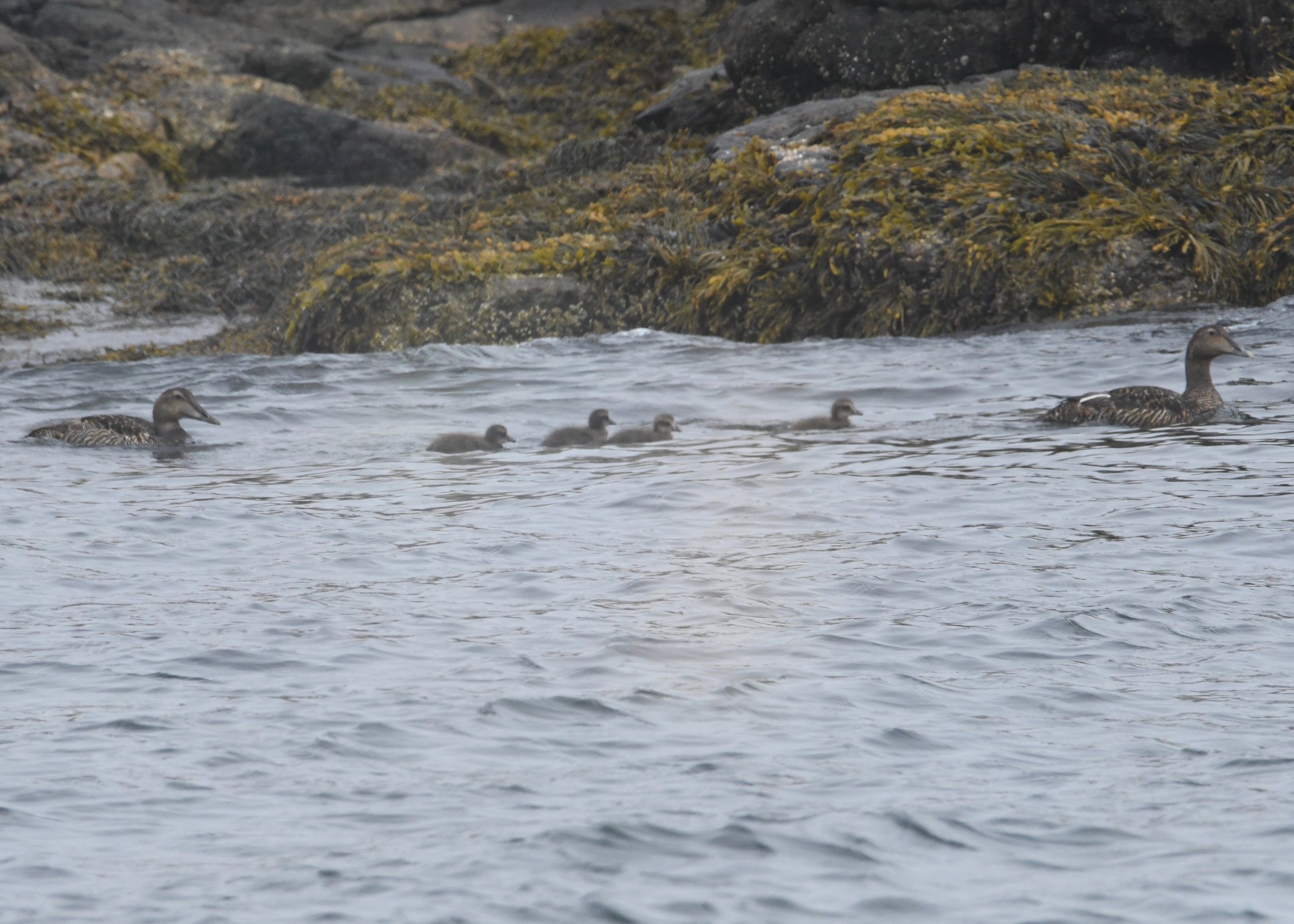
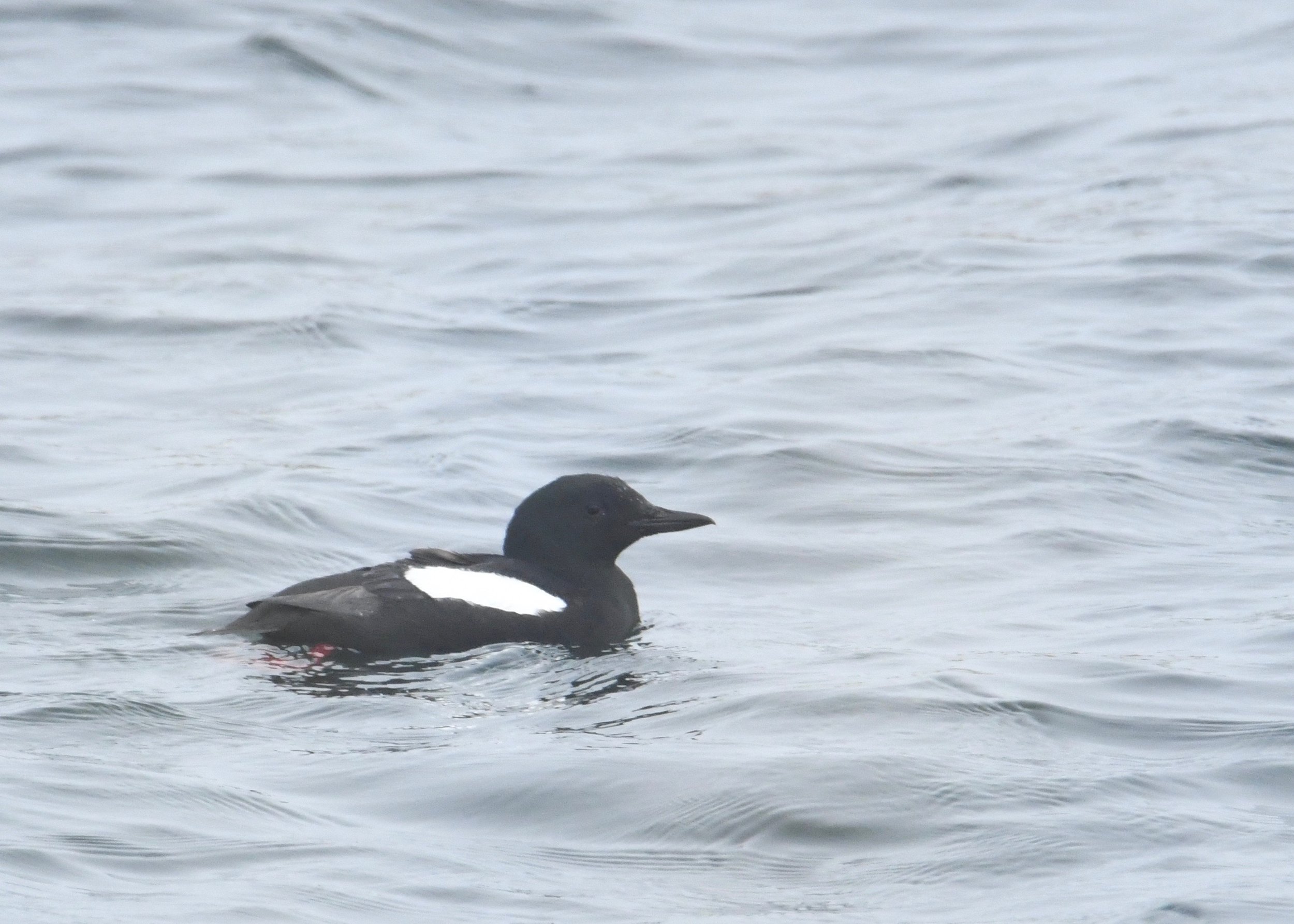
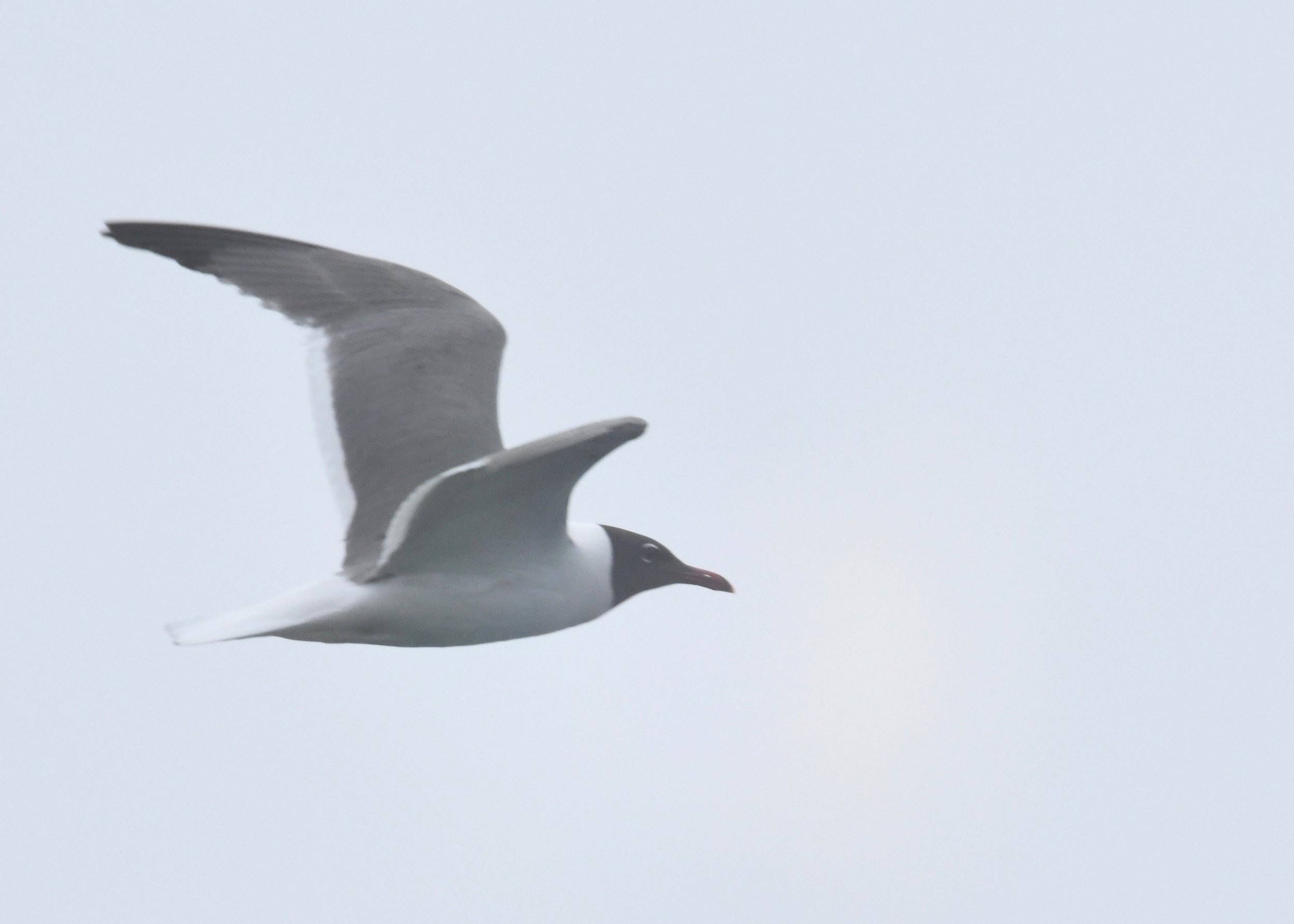


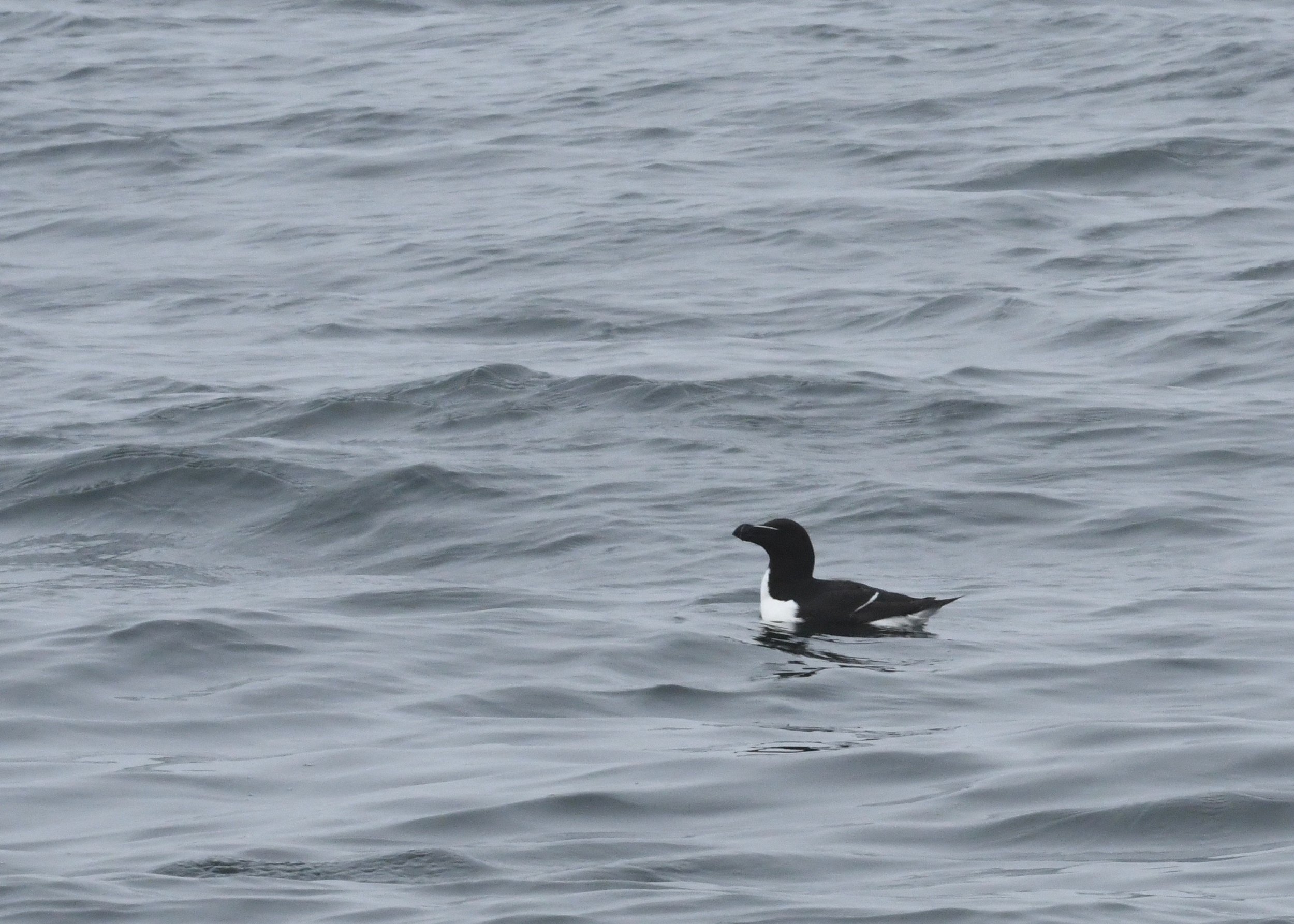

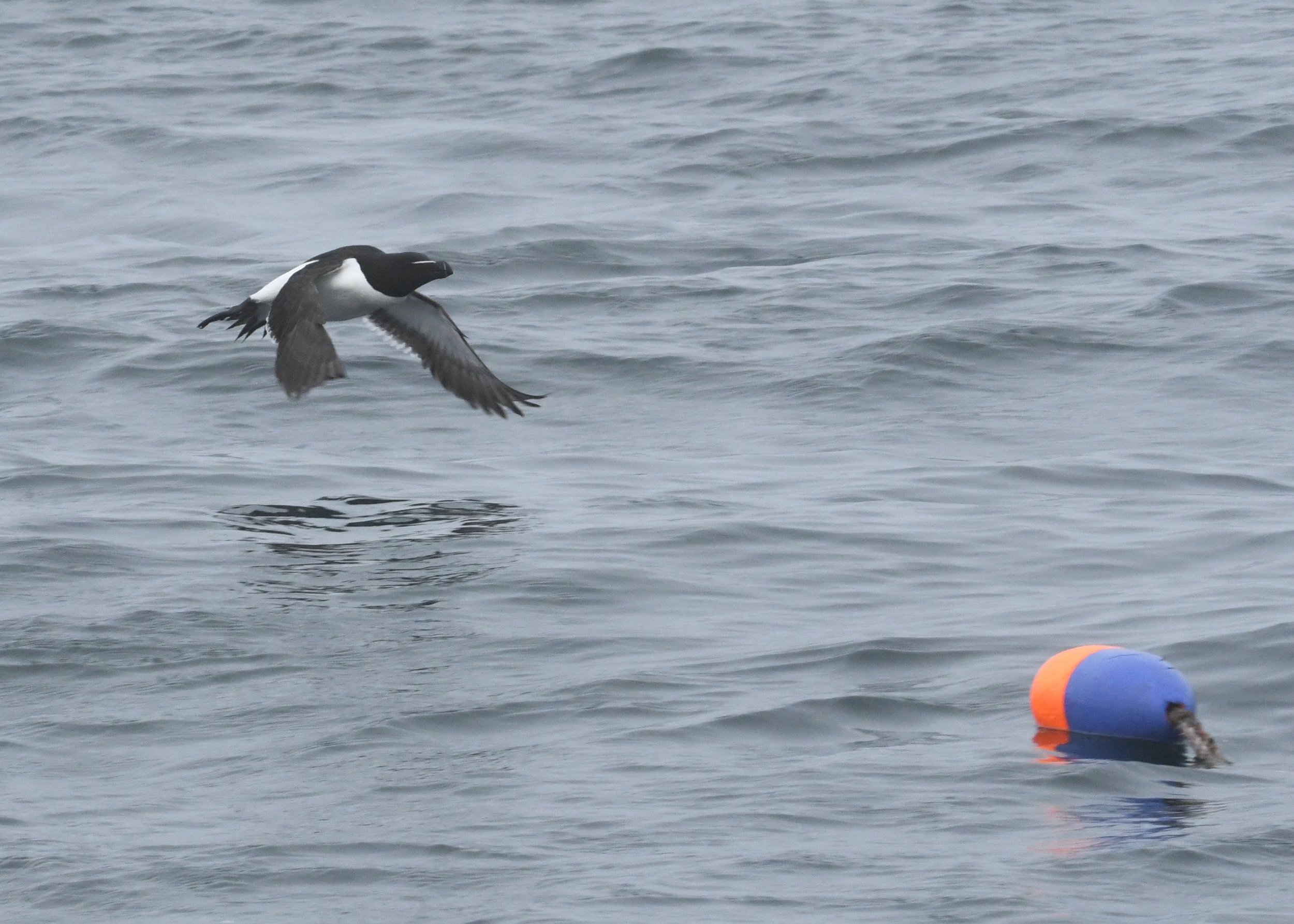

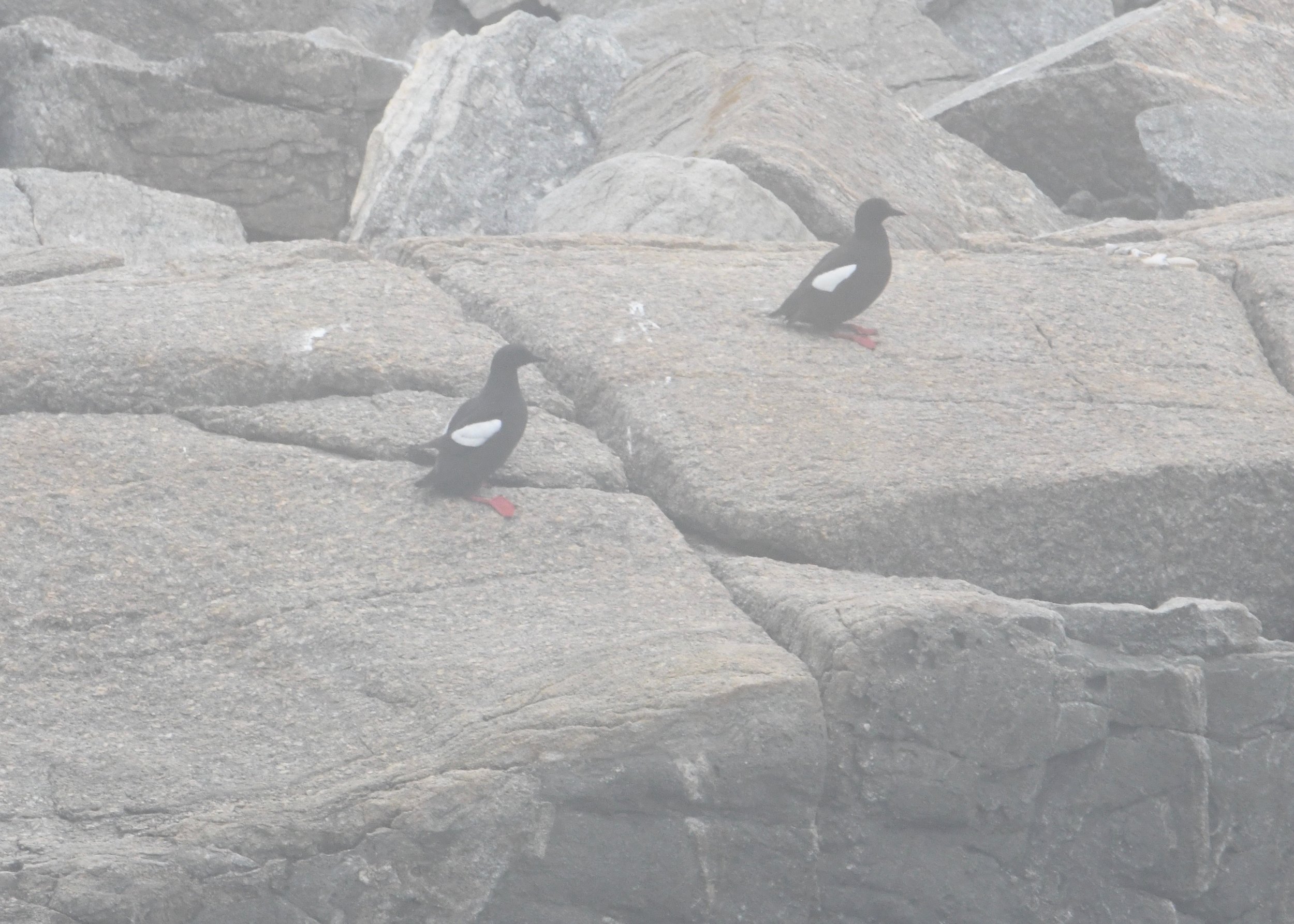


The evening presentation was by Matt Young entitled “Finch Irruptions, Focusing Specifically on Evening Grosbeaks and Red Crossbills.” Matt explained the differences in Red Crossbill call types using audio recordings and spectrographs that illustrated the differences between the ten different calls recognized by experts. This led to a discussion of what differences constitute a unique species. While filled with loads of information, my head was in overdrive by this point in the week, and I had a hard time absorbing much of the data Matt was sharing. When the presentation was over, a quick shower and my pillow were my prime focus of the evening.
Day 5
I slept in again today, the cold and fog still thick outside. The kitchen did a good job of warming us with breakfast with frittata, zucchini bread, and hot coffee. Today was also the camp’s celebration of the upcoming International Guillemot Appreciation Day, which is officially on June 27. Sara and Scott both walked into breakfast wearing large guillemot hats, with black shirts and white “wing bands”. Sara’s favorite bird is the Black Guillemot, so it’s safe to say June 27th is her favorite day of the year. The camp even provided everyone with a small “I love Guillemots” button to wear. Rain can’t keep the smiles off the faces of bird nerds!
My group continued our ornithology learnings with Dr. Morris in the Fish House, where Eric, the Hog Island facilities manager, had a fire stoked and already warming the building. Intro to Ornithology 102 lasted most of the morning, where we learned about the taxonomy system (Domains, Kingdom, Phylum, Class, Order, Family, Genus, and Species), micro- and macro-evolution, the difference between evolution and natural selection, and continued our conversation on the difference between natural selection and sexual selection. Sara is a great teacher, passing along her knowledge with an infectious enthusiasm that all but forces you to fall in love with birds (as if we weren’t already!). We ended our conversation with a short discussion on avian breeding biology, where I learned that birds are not all mated for life, but rather that only 90% are monogamous, while 7% are promiscuous and 3% are polygamous.
We were given a short break before lunch, where I walked around the small peninsula, basking in the foggy solitude of the island. In such a short time, I knew this camp had changed my life. The woods were quieter than normal, the cold and fog keeping the birds in their nests. If the mosquitoes weren’t so bad, I would have enjoyed finding a secluded rock or tree stump where I could sit and let the island soak into my soul. Not wanting the cold and wet to soak my clothes, though, I continued to walk around the trail system and back to the camp.
Lunch was chicken quesadillas, and I noticed lots of people adding spicy salsa to their food to warm their insides. Sometimes food solves the problems of the world.
Unfortunately, due to the deteriorating weather, our trip to the mainland was canceled, but Scott assured us programs would be ad-libbed to provide an entertaining afternoon. Our first substitution was a lecture on technology in birding, cleverly titled “Wildlife Telemetry in the Age of the FitBit and Apple Watch”, given by Andy, who works with a company that makes small GPS transmitters that are used on wildlife for tracking purposes, including the ones used by Scott on his Snowy Owls. I found his presentation insightful, showing how much of the data we have now has been collected. For the second pickup session, I started in the sketching for nature class being led by artist Catherine Hamilton, beginning with basic shapes and shadings and working into color gradients. But my mind was adrift and I couldn’t focus on drawing, so I packed up my sketchbook and wandered over to the Queen Mary classroom to listen in as Scott took a group through the scientific collection of stuffed birds, where he discussed feather patterns and color changes, bird anatomy and how the environment a bird lives in dictates some of the body size and shape.
My only complaint about Hog Island, which became apparent this afternoon, is that the instructors are all too good, and choosing between sessions was near-impossible. Thankfully most of the week was laid out for us so decision-paralysis was kept to a minimum!
After a quick break to clean up, we all gathered inside the Fish House for hors d’oeuvres and wine while Sara walked around giving us all our wing bars (white tape on our arms) so we could all be Black Guillemot! Everyone mingled and chatted, warmed themselves by the fireplace, shared stories from the week, exchanged contact information, and generally wound down before we all entered the dining hall for our “lobstah dinnah”, with fresh-caught lobster, seafood chowder and Hog Island Puffin Pastries. Needless to say, we all walked out stuffed to the gills.
After lots of handwashing (lobster is messy!) and laughter, everyone reconvened in the Fish House for awards and our final evening presentation together. Sara did her final episode of “Ask Dr. Bird Nerd” wherein you could ask a question anonymously and she would answer the question for the group. This was followed with two songs in honor of Guillemot Appreciation Day – a recording of a song called “I’m a Guillemot”, written and performed by the late Bill Thompson III, and a Sara-led rendition of “The Guillemot Song” where all sang along karaoke-style to the tune of “Lollipop.” Juanita gave a short presentation on the Friends of Hog Island and the various volunteer opportunities there are on the island, offering pamphlets and business cards to anyone interested. After a few parting words of encouragement by Sara and Scott, the evening ended with a slide show of our week on Hog Island curated by Andy with photographs from staff and campers alike. There were many wet eyes as the presentation ended and we all filtered out to the bunkhouses, sad to see the week come to an end.
Day 6
I woke early on purpose to get in a final walk around the peninsula before leaving the island. The rain was still falling, mirroring the mood I was feeling in my chest. I finished packing, moving my bags to the porch near the boat dock, before grabbing a quick breakfast. The boat shuttle started early and ran non-stop until the island was empty – but I couldn’t wait that long, afraid my eyes would water over. After saying many goodbyes and “thank yous” to the staff, I grabbed my bags and boarded the Snow Goose for the last time… at least for this trip. It was with a heavy heart that I waved back to Scott and Sara, still standing on the dock, as the boat carried me to the mainland. I hope we shall cross paths again soon. If any of the staff or volunteers happen to read this, I hope you know how much you touched my soul, enlightened my brain, and encouraged my spirit. I WILL return.
Once ensconced in my car and out of the rain, I drove to Damariscotta to the Whaleback Shell Midden State Historic Site, where my group was supposed to have gone before the rain canceled our trip. It’s basically a big field now, with tons of birds flying around even with the light rain falling. It was almost as if the birds were using the rain as a “shower” to wash their feathers and refresh their colors. I finally saw my first Bobolink, which I had missed at the ice cream shop earlier in the week. Once the rain started getting worse, though, I high-tailed it back to my car.
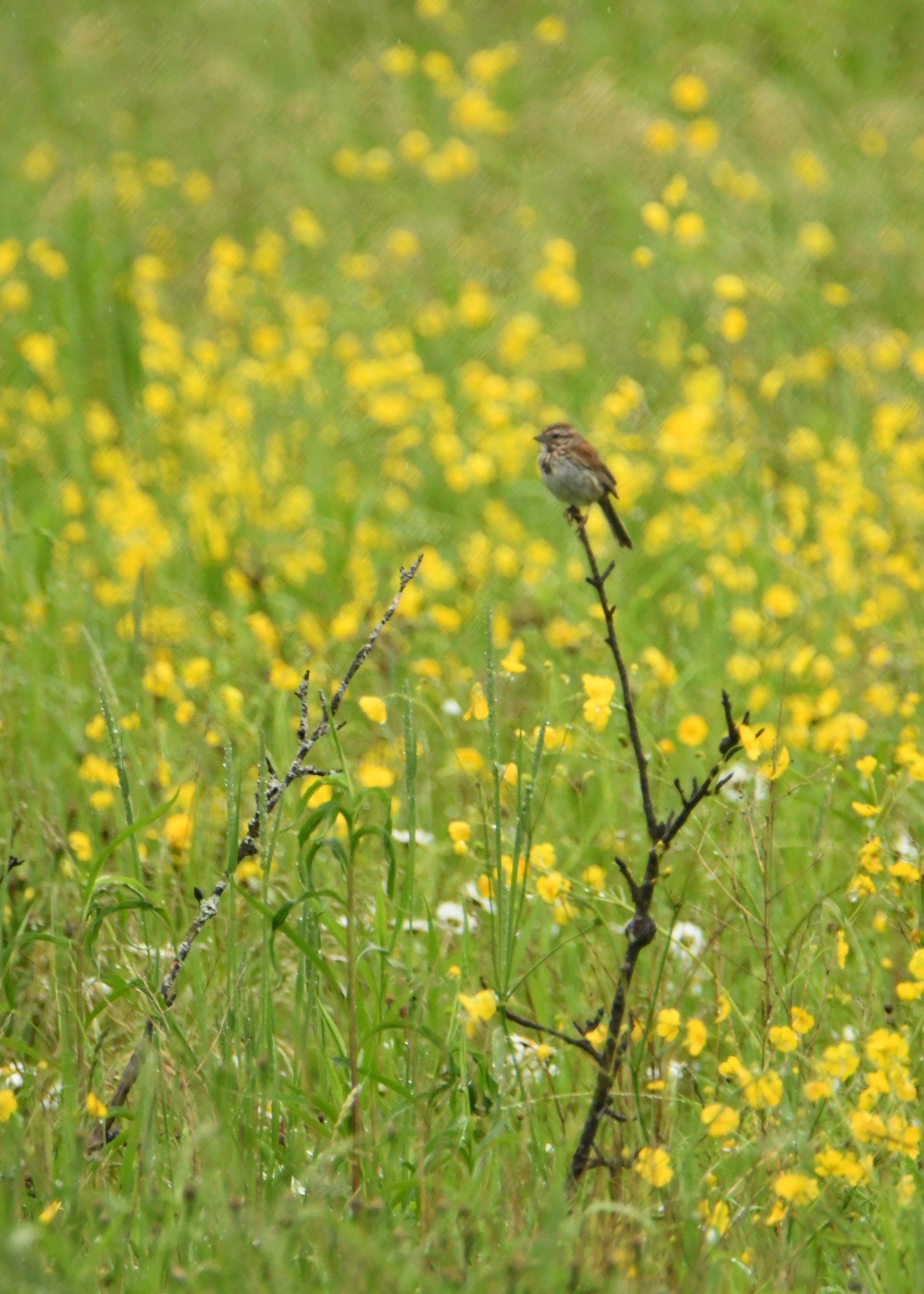

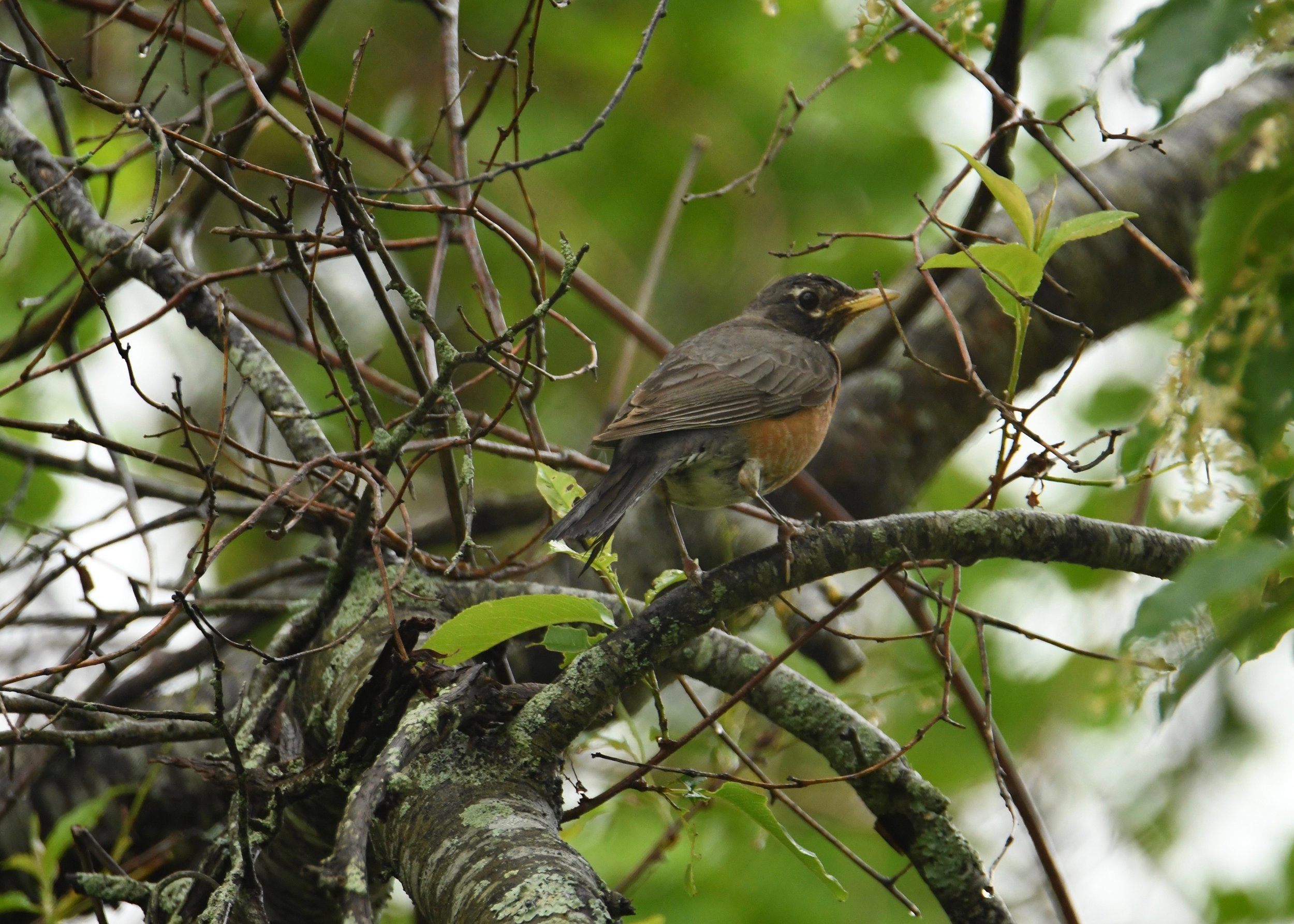
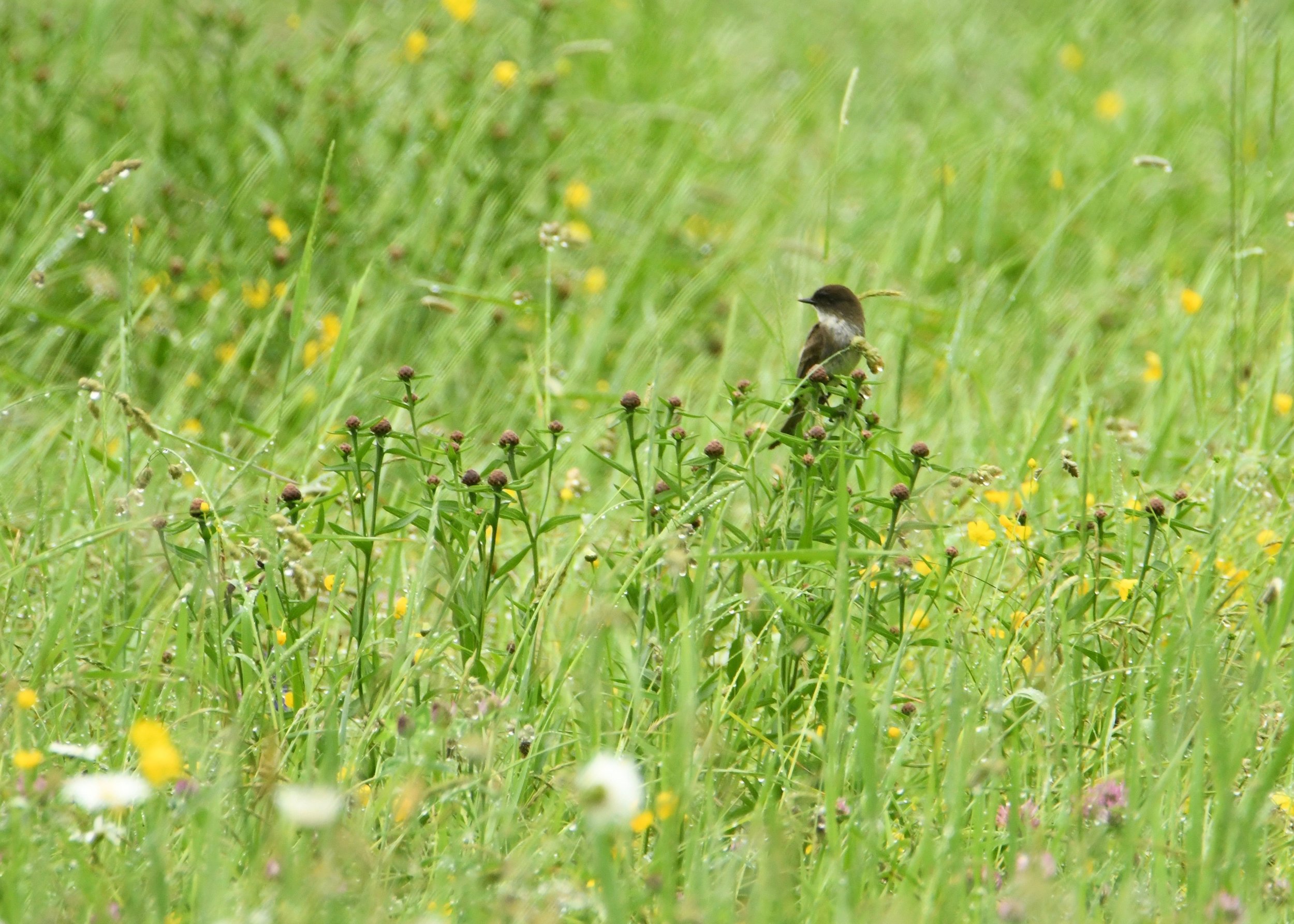

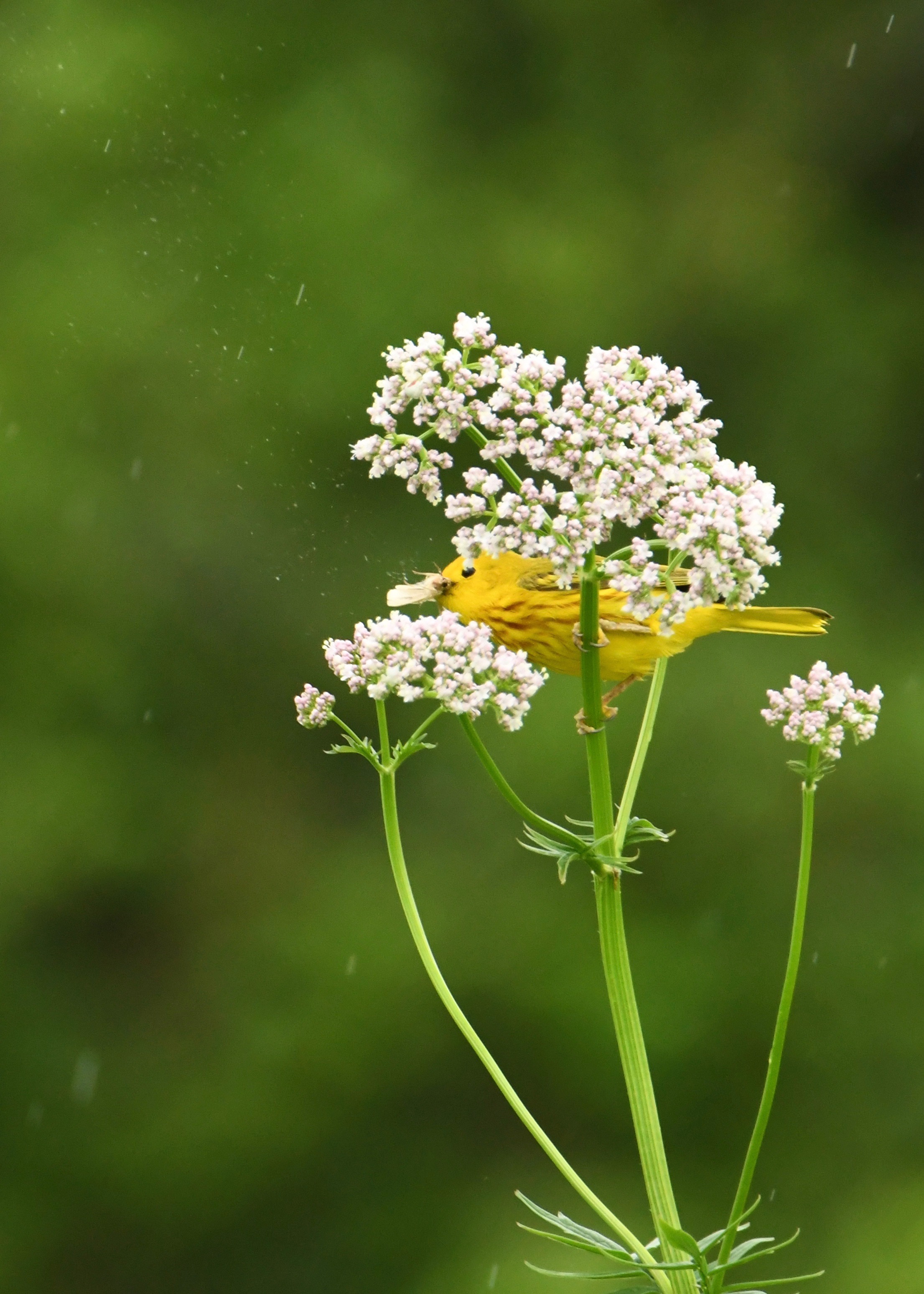
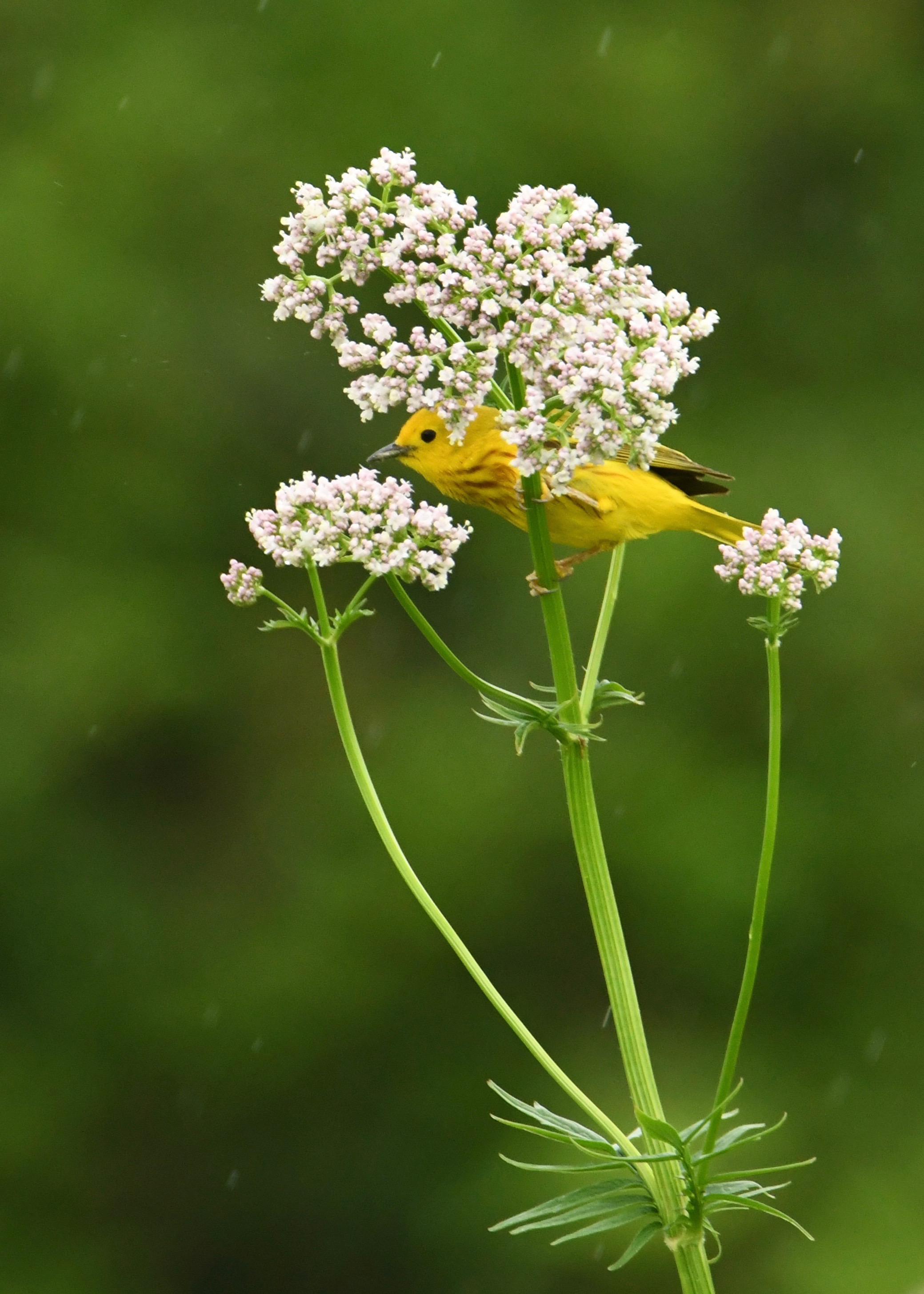
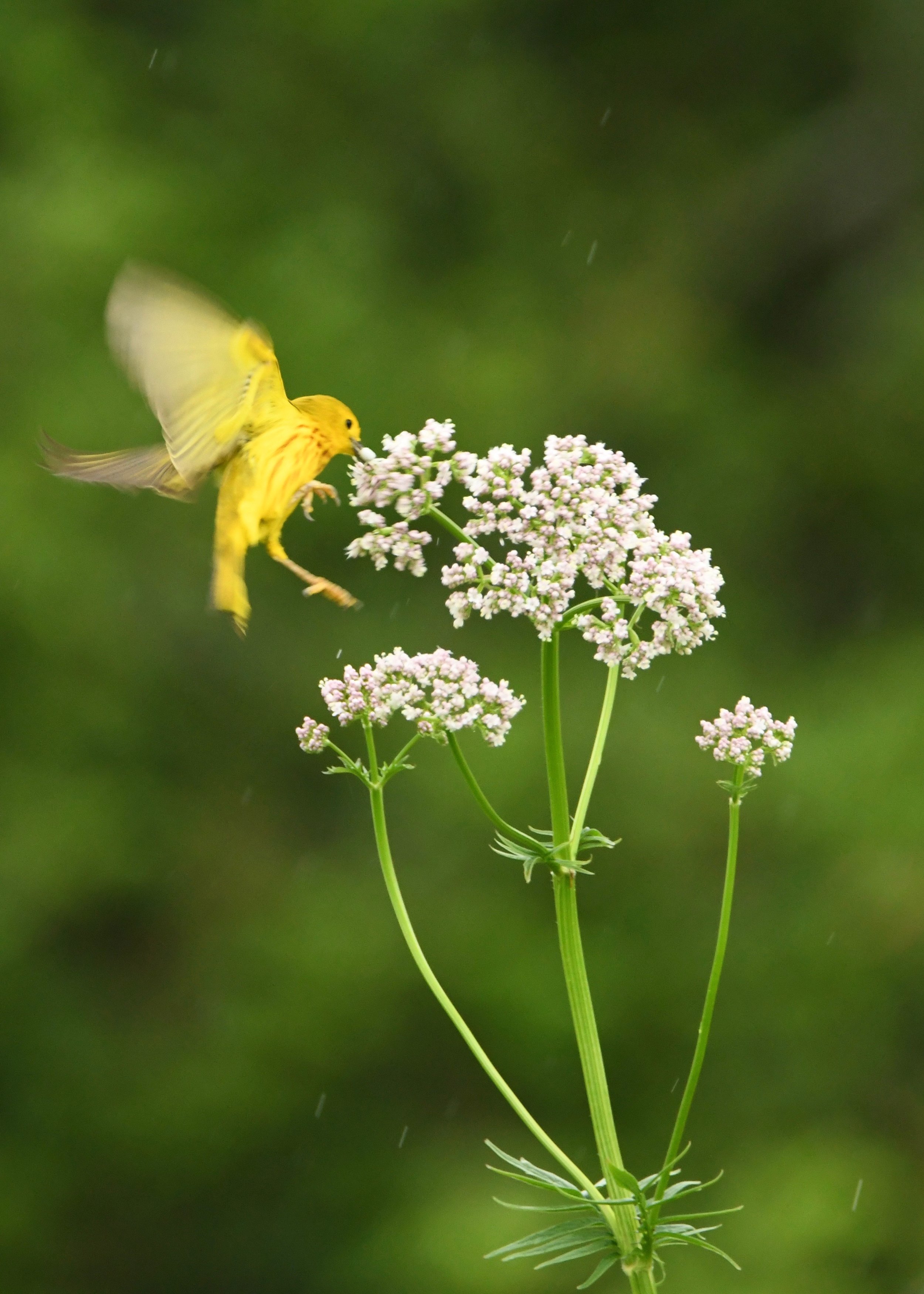
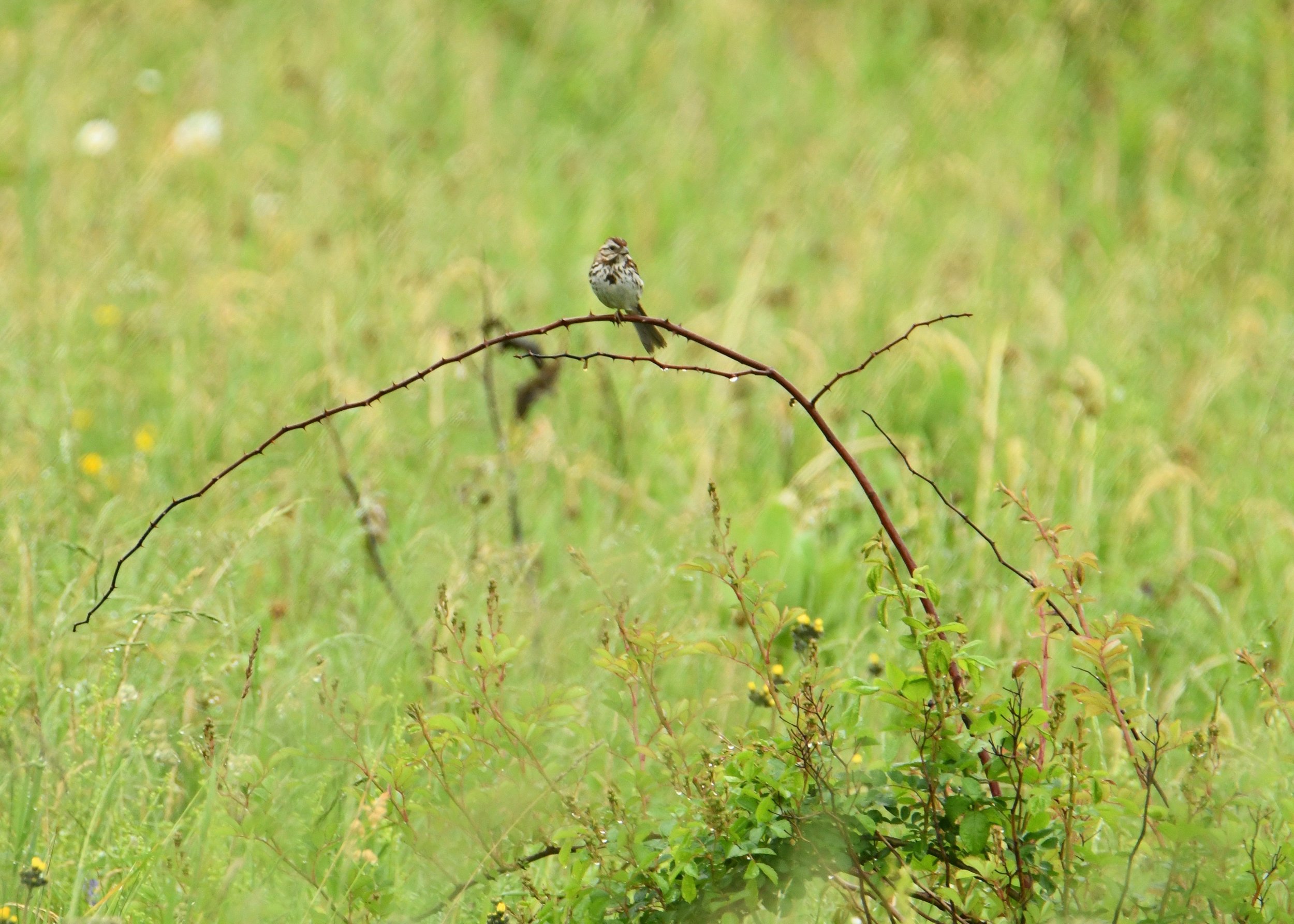

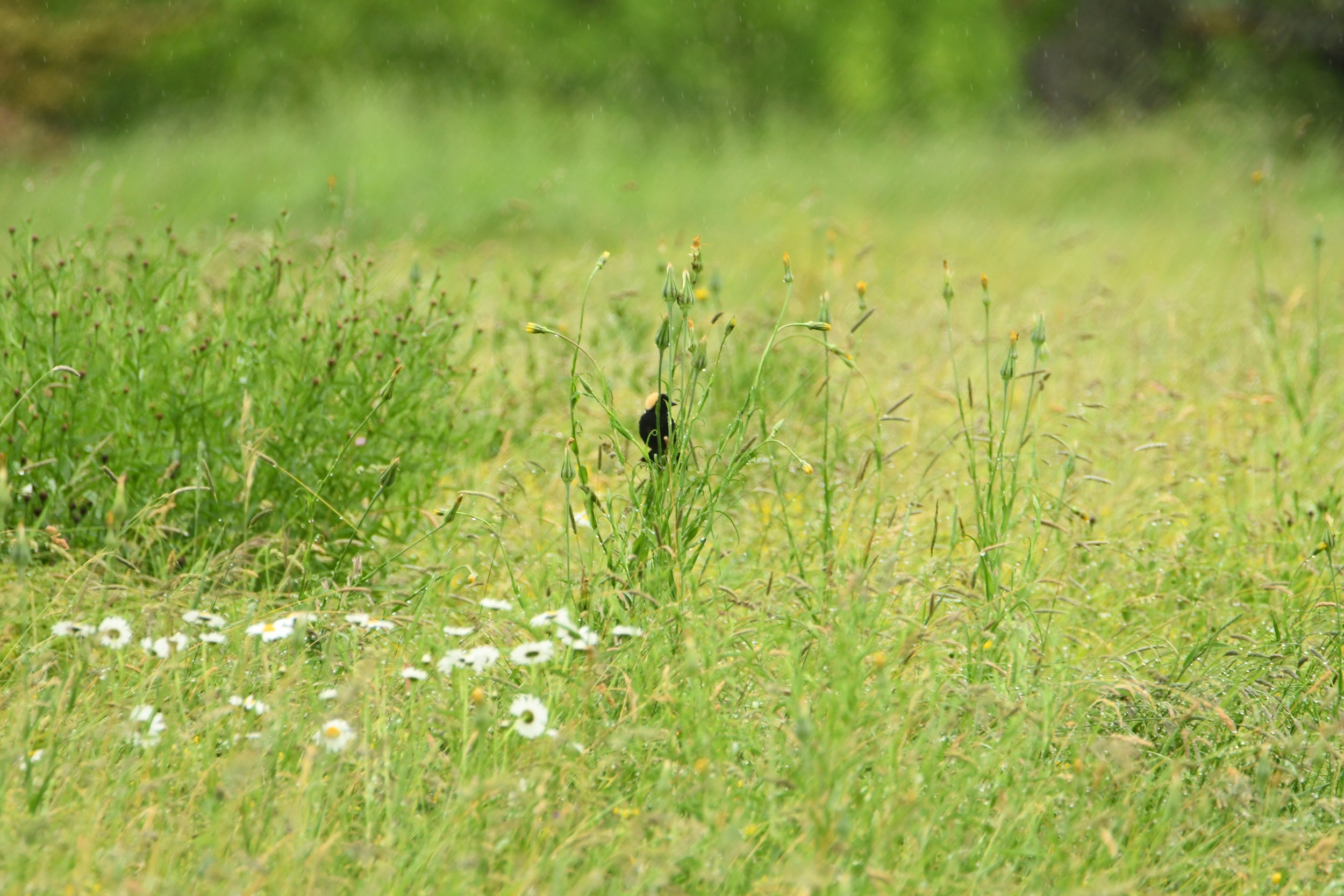

I drove to Rockland, a quick half-hour away, to visit the Project Puffin Museum there. However, after being to Eastern Egg Rock and spending a week immersed in all things birds at Hog Island, the museum was a bit too basic for me. I wish I had seen the museum before going to Hog Island – not that it provided any information not gleaned from the camp, but then I wouldn’t have been so disappointed in the museum. For those passing through who have not been to Hog Island, though, the museum is a fantastic showing of the project’s history and current progress in saving the Atlantic Puffins. I walked around Rockland a little, getting some bakery cookies for the road trip and visiting a small used book store (another weakness of mine!) before starting to drive west, destination Ithaca, New York and the Cornell Lab of Ornithology.
Day 7
I woke early, just as the sun was painting the sky, and made the quick drive from my hotel to the Cornell Lab of Ornithology. Utilizing my rented long lens, I made my way around the trail system at Sapsucker Woods, enjoying the feeling of being “at home” in a place I had never visited before. I walked to the visitor center at 11 to join the Behind the Scenes tour that is offered, and met up with a couple from my Hog Island camp who were also visiting the Lab before they headed home to Toronto. The walk was not what I expected, mostly just walking through offices and literally “touring” the facility, but there were a few interesting areas where we saw the reference library and the stuffing and mounting lab where the scientific mounts are created. Saying goodbye to my fellow campmates, I drove over to the campus and walked around a bit to get a feel for Cornell University before starting my drive home.

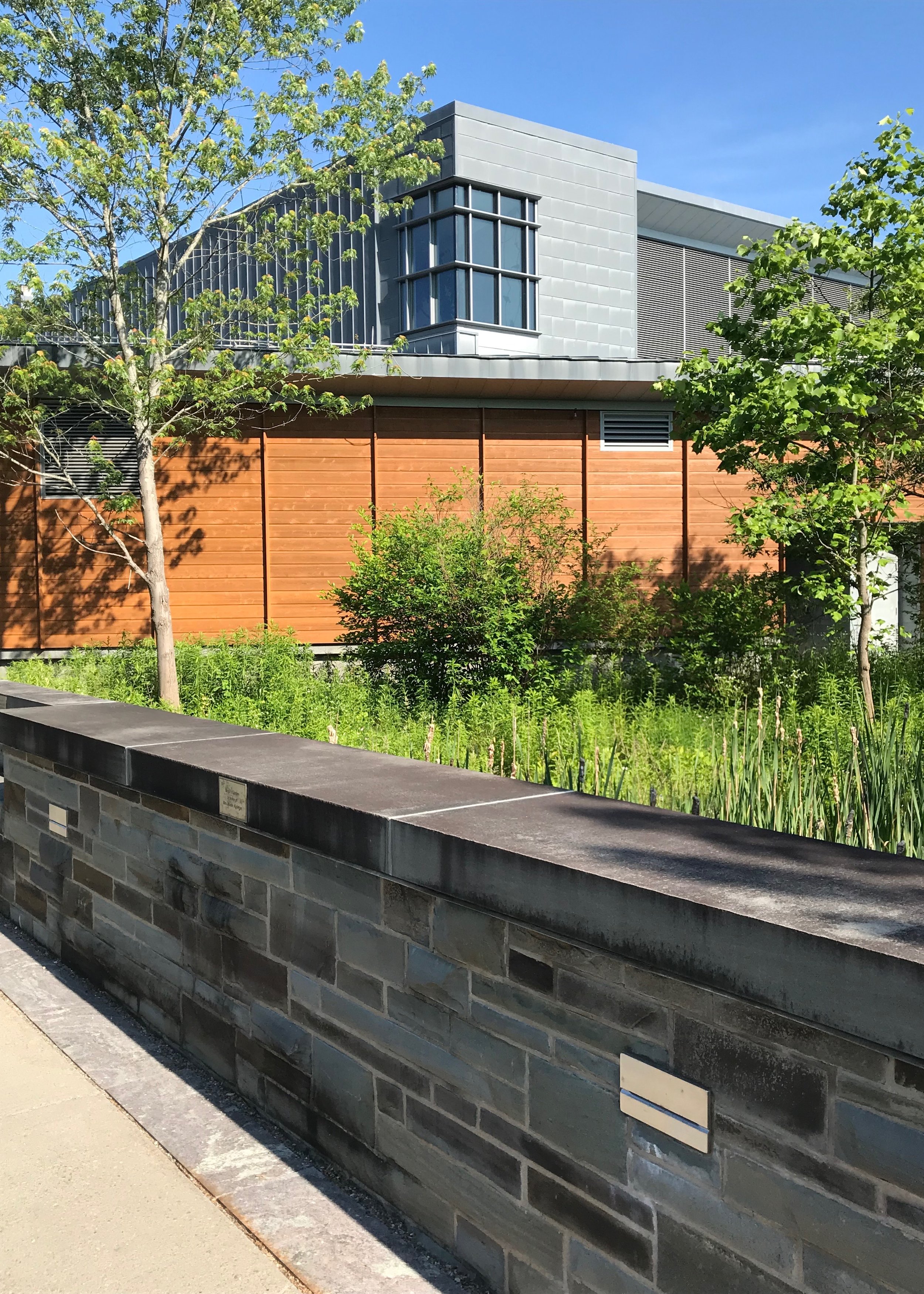

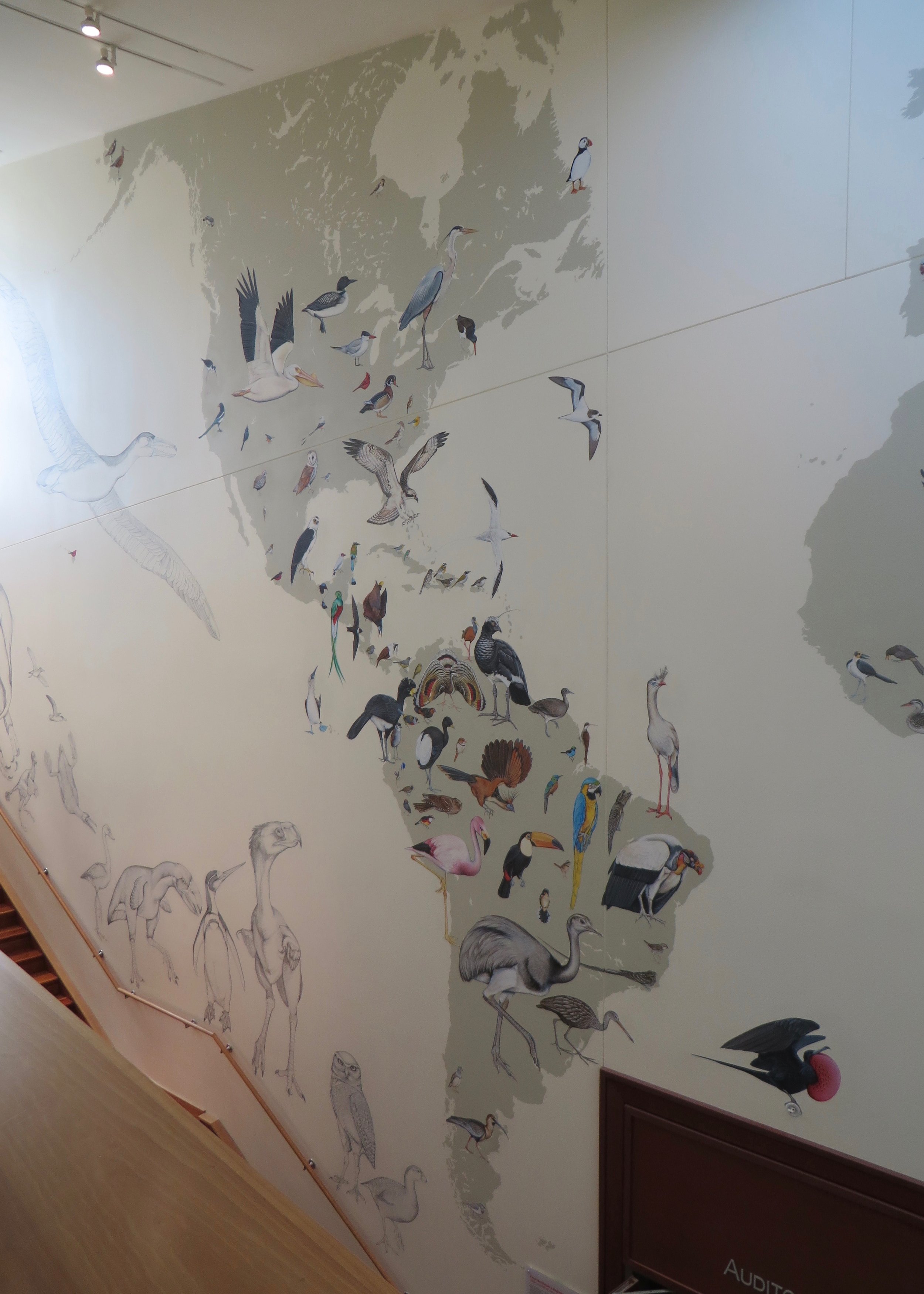
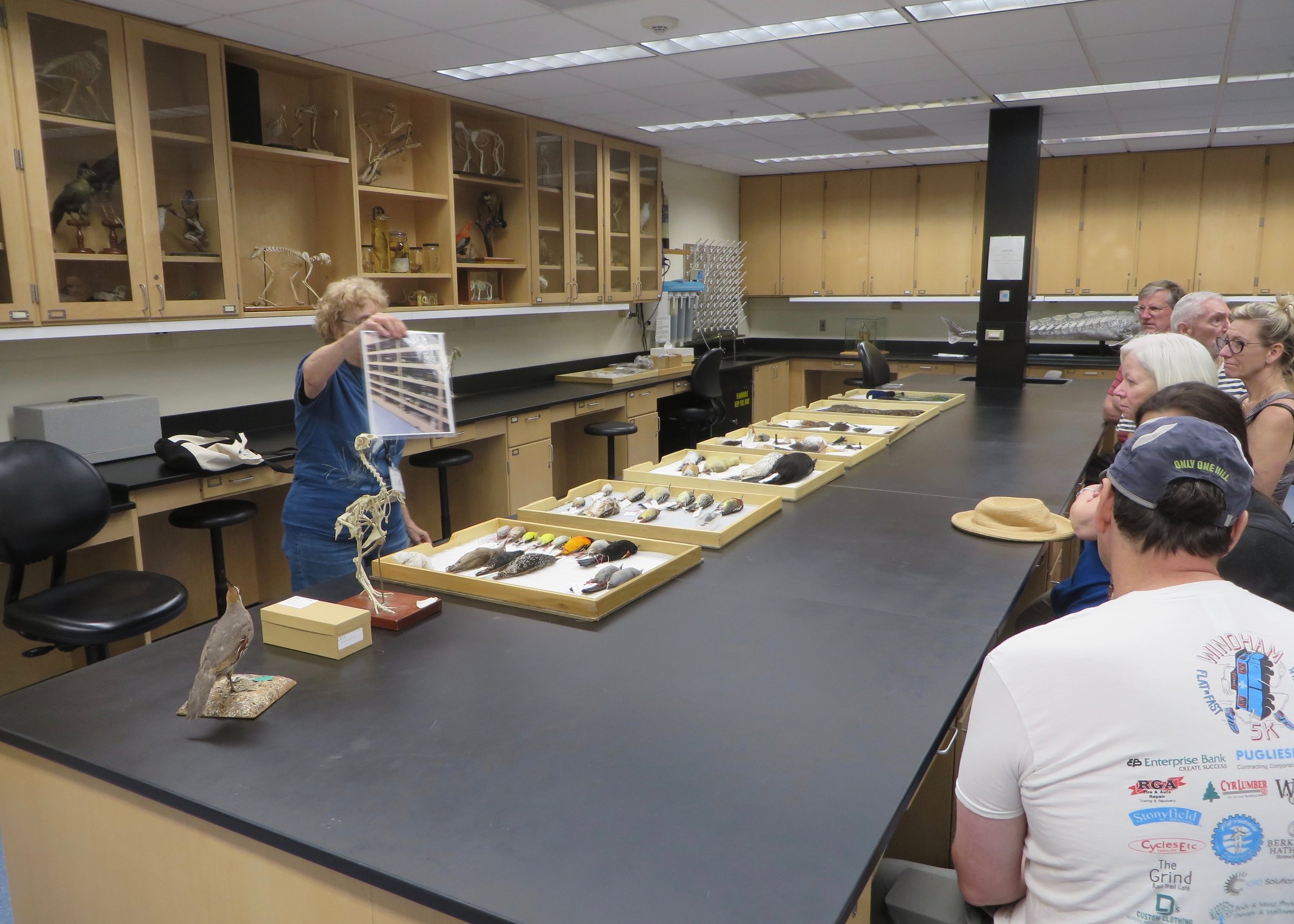



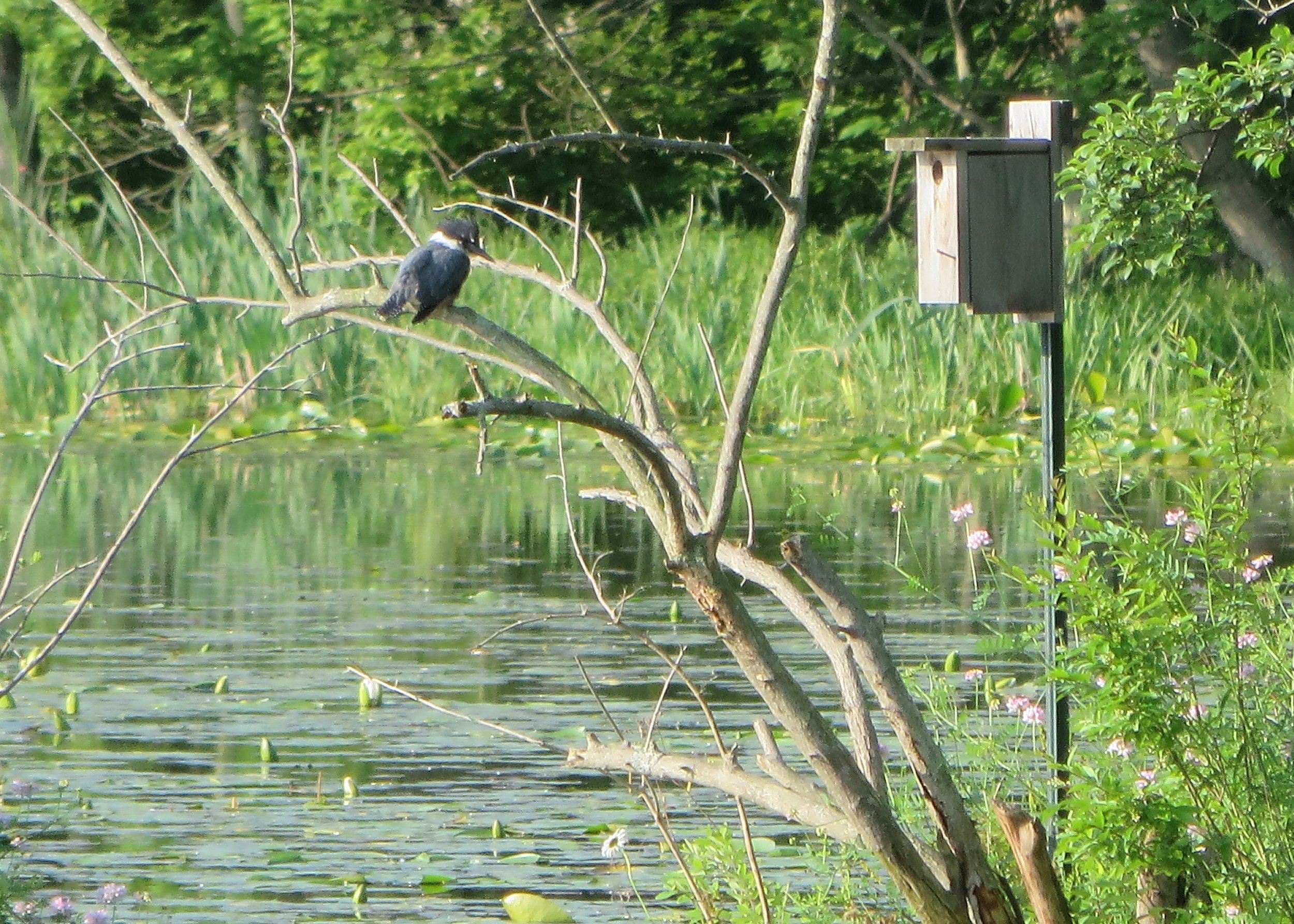
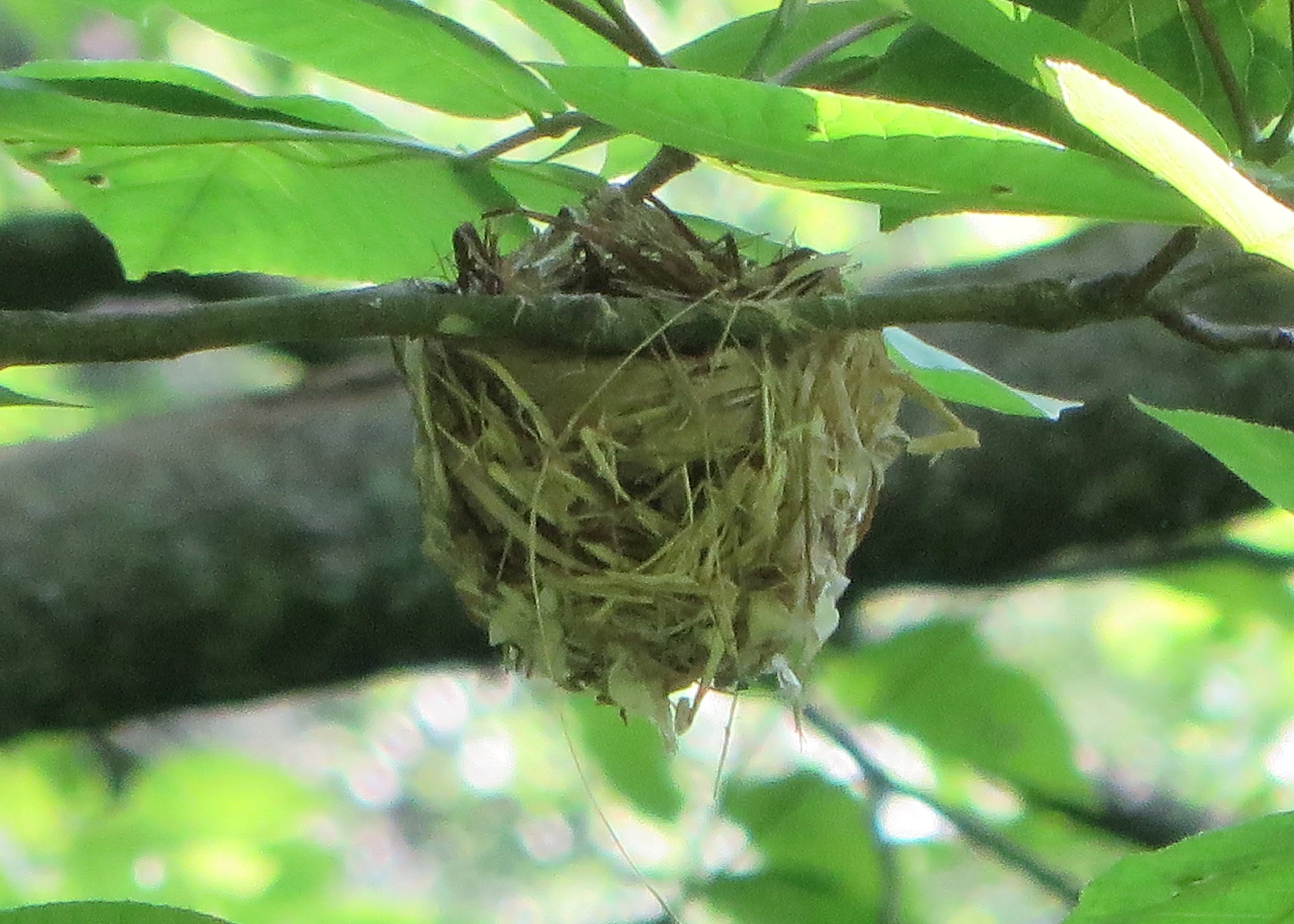
Postscript
It has been nearly three months since I returned home from Hog Island as I write this, and I am still in awe of everything I learned and saw. I am eager to get back to the island, but for financial reasons, it may have to be via the volunteer program. I would wash any amount of dishes for another trip to Eastern Egg Rock! I have begun to look into graduate programs, considering another degree and a possible career change, but am heeding Sara’s advice to select a school based on the research being done and its usefulness to my future goals, not on the school name or reputation. I am finding the search more difficult than I expected though, due to my non-scientific degree background. I am not giving up until I have explored all of my options, but am coming up short on new ideas.
If you have any questions about the Field Ornithology course or Hog Island Audubon Camp, I’d be happy to answer them. And if you are ever in the mid-Maryland area and would like to go birding together, I am always up for a walk through the woods. Please leave a comment below or email me at the contact page below.
For those interested in the bird lists for my trip, see this blog post.

